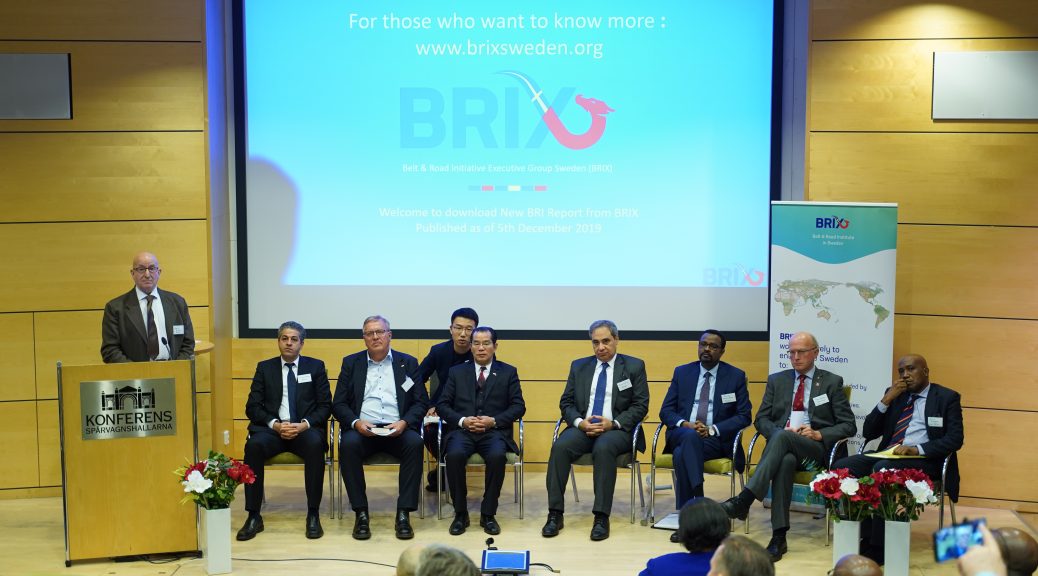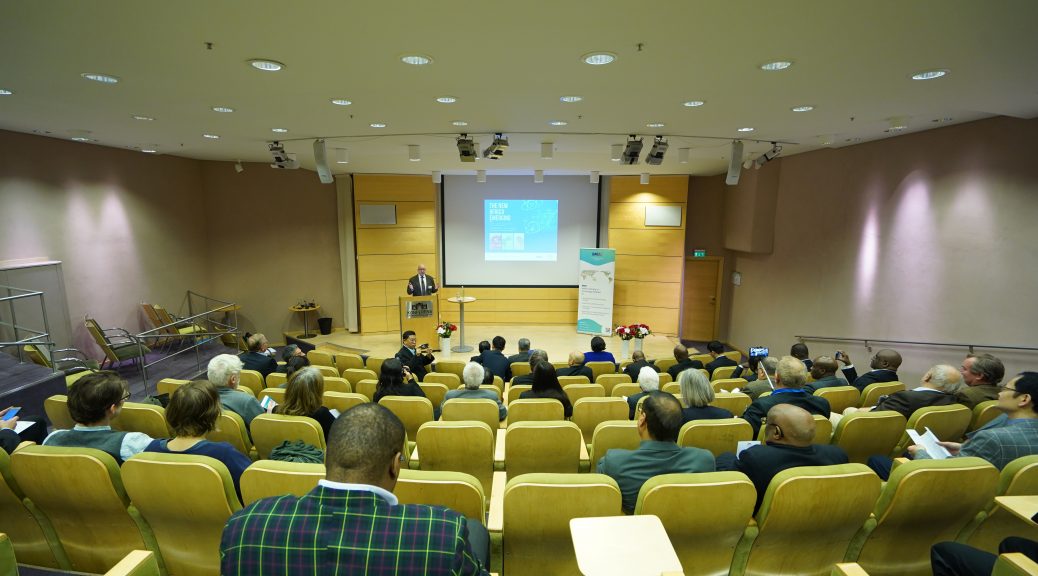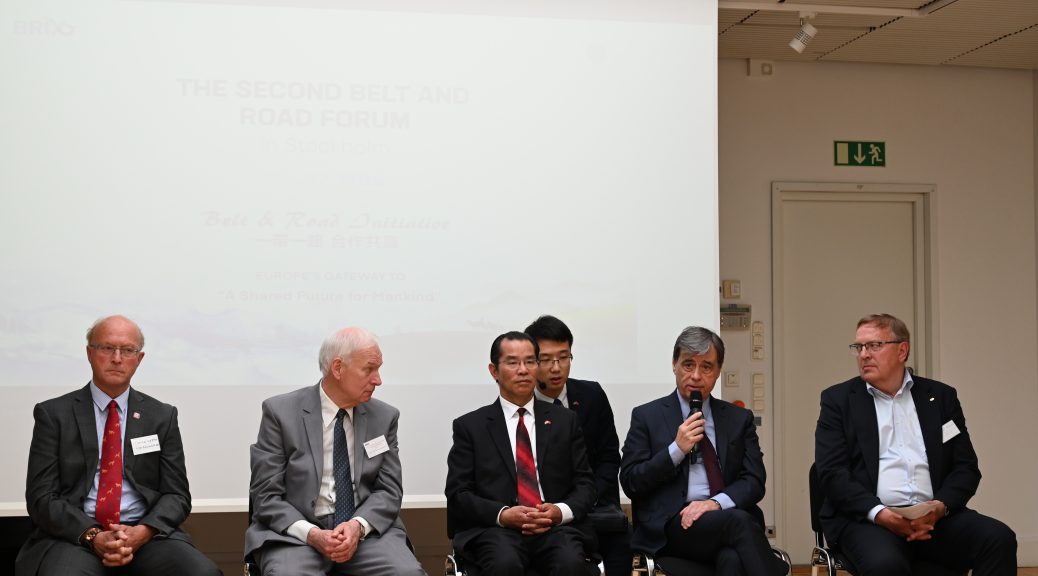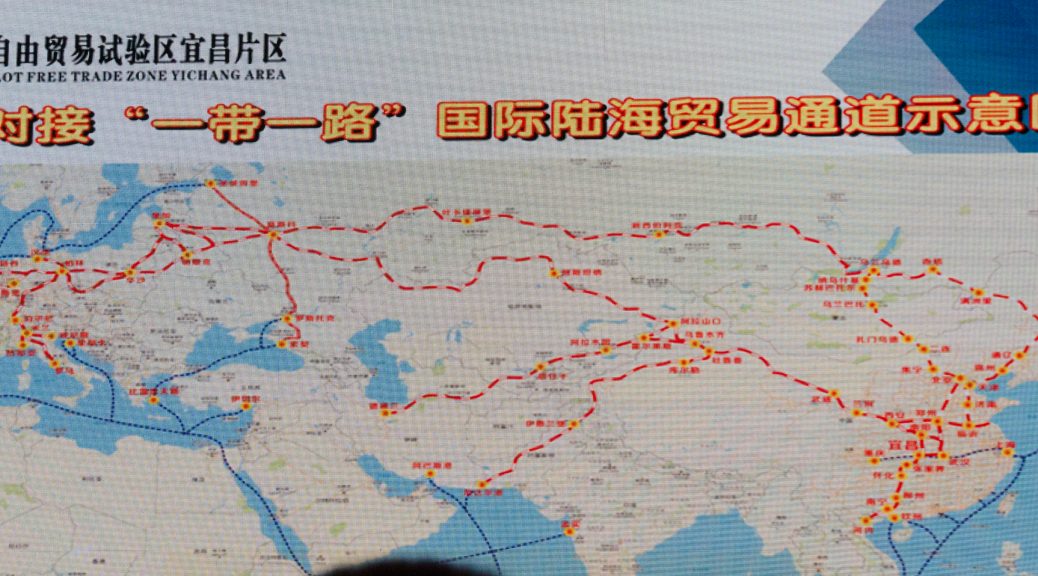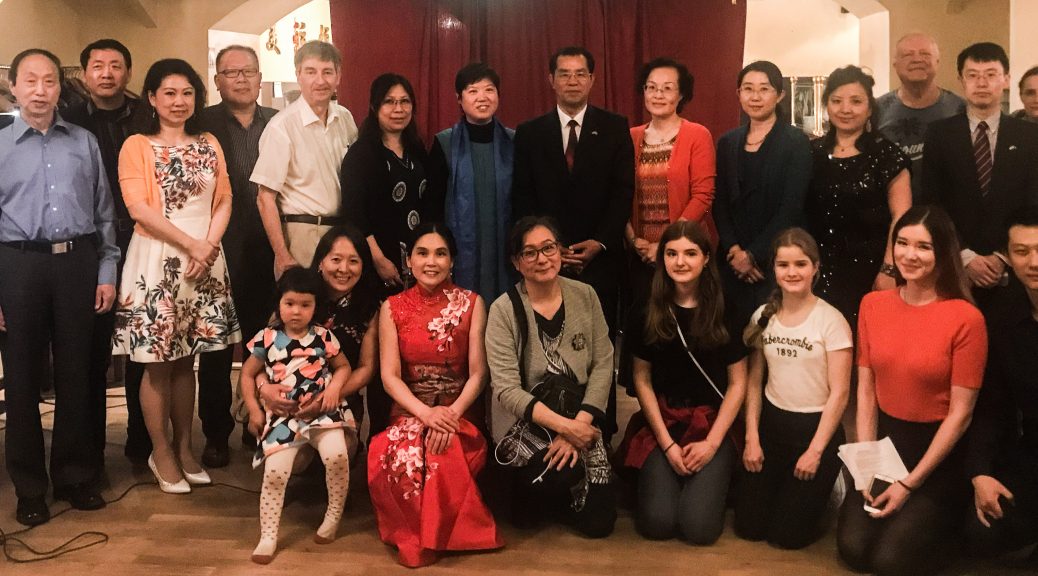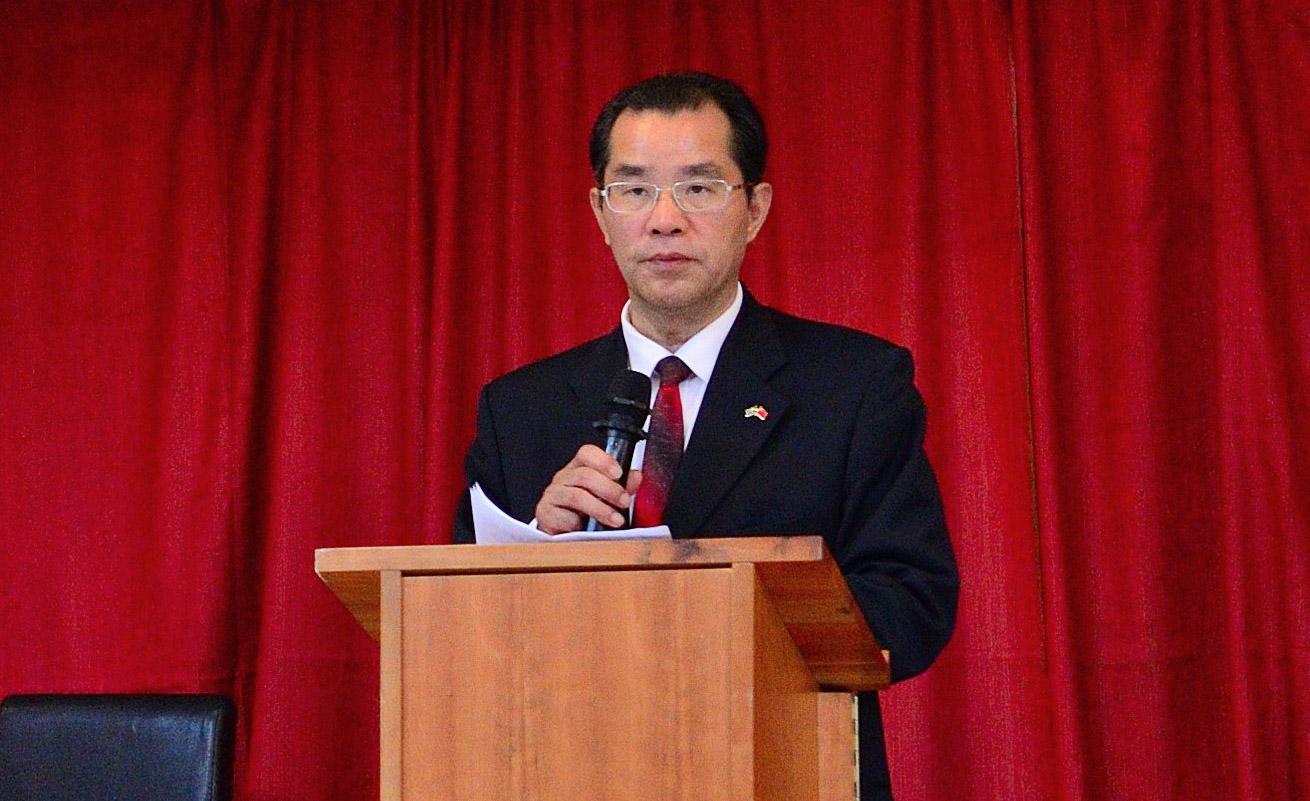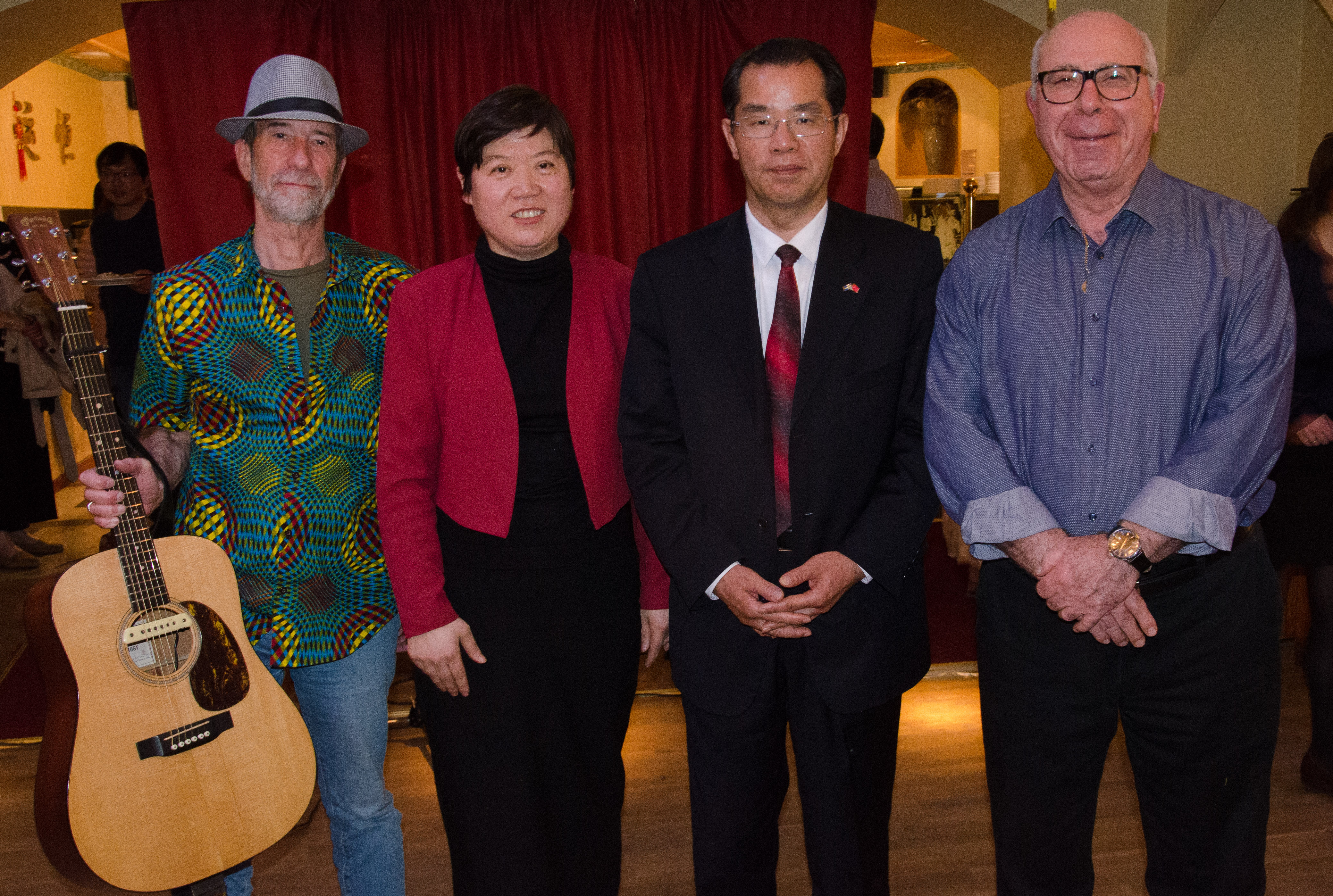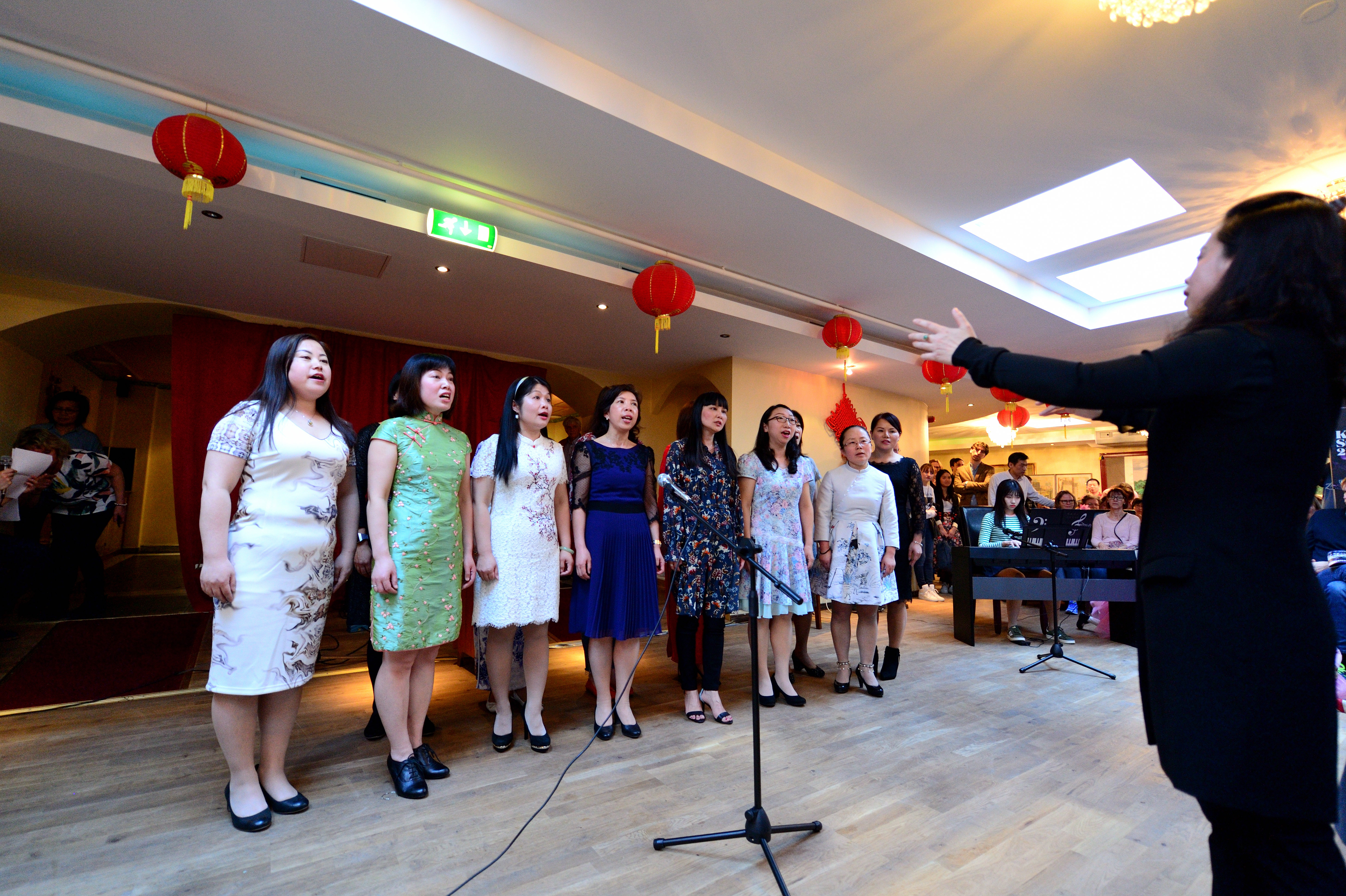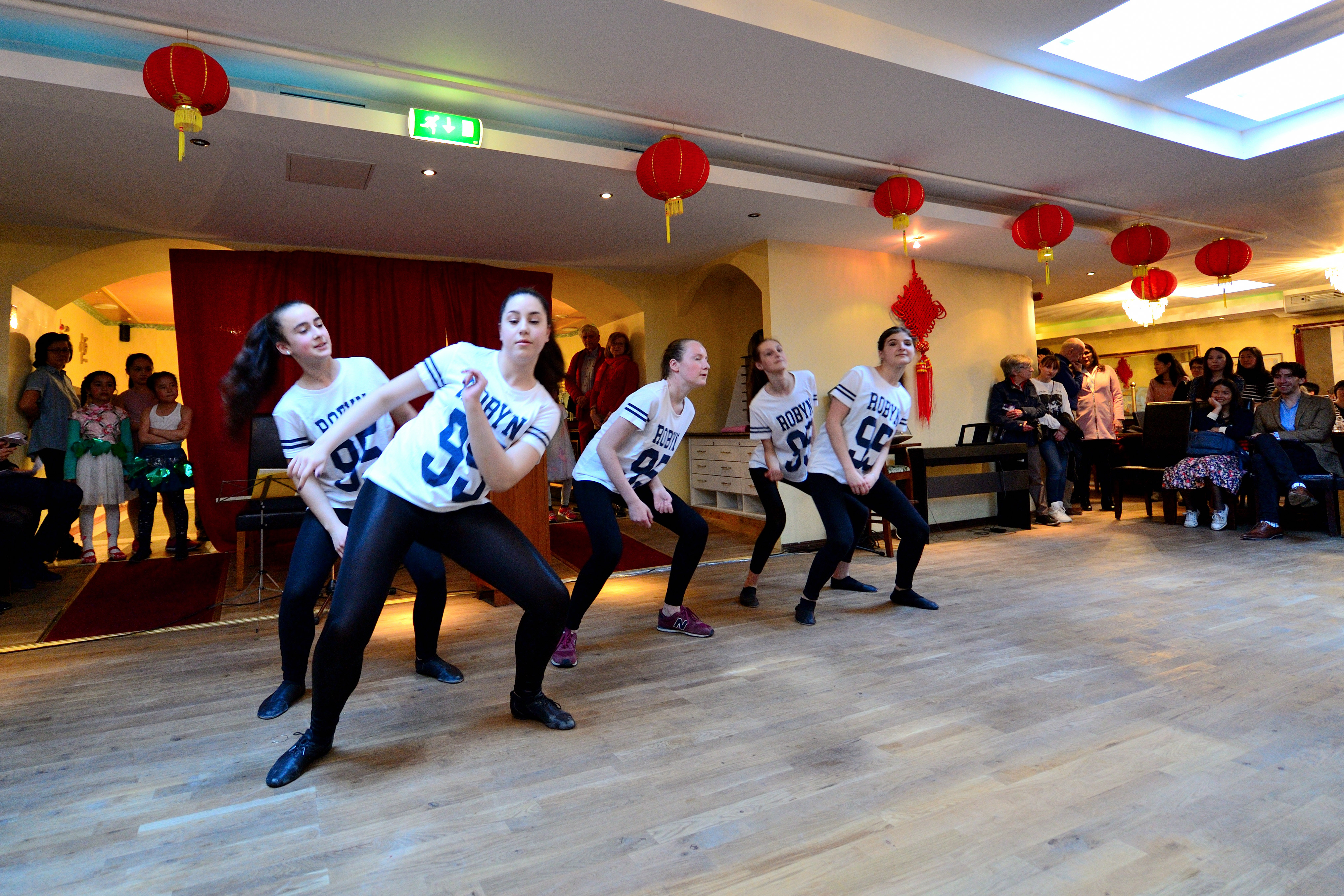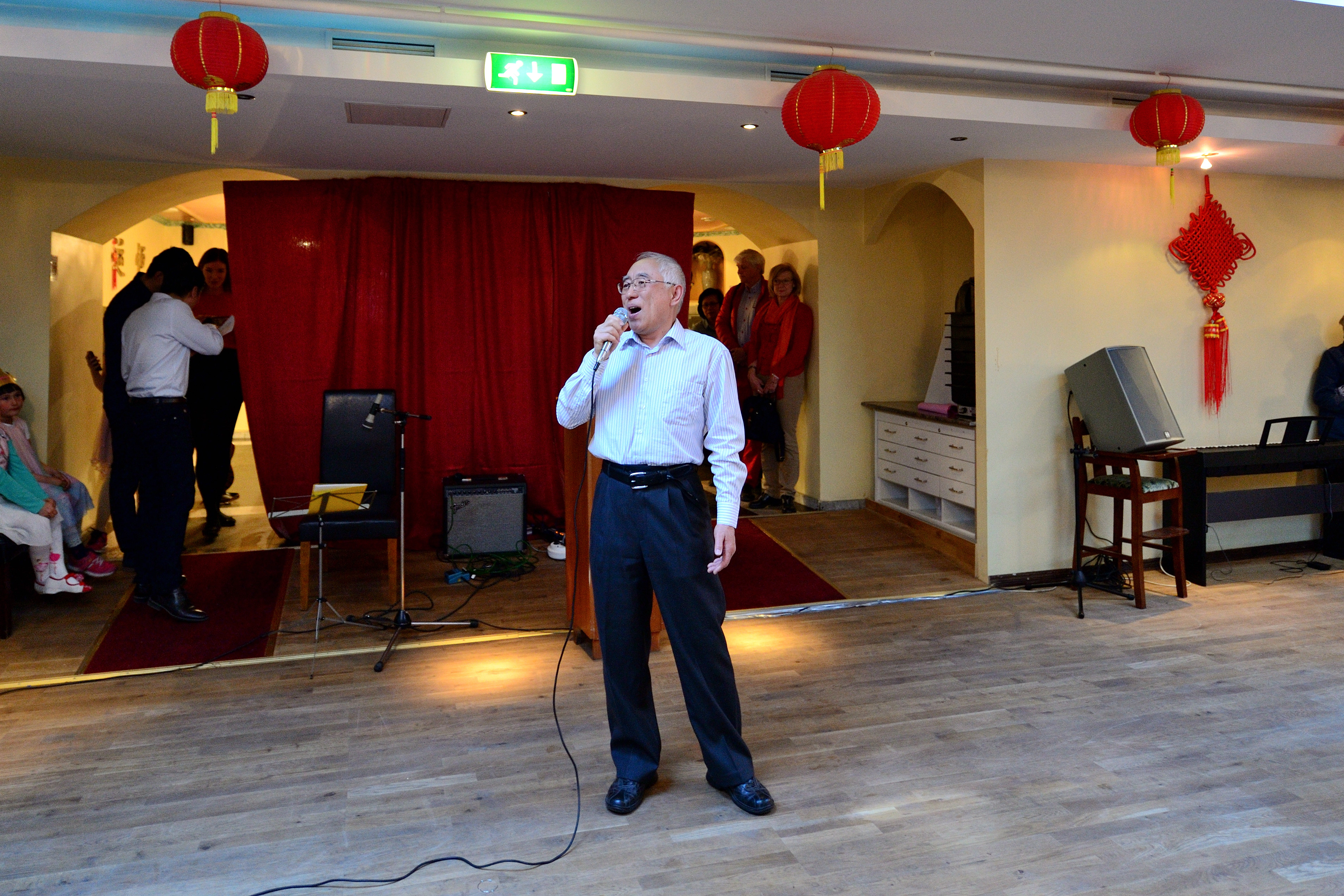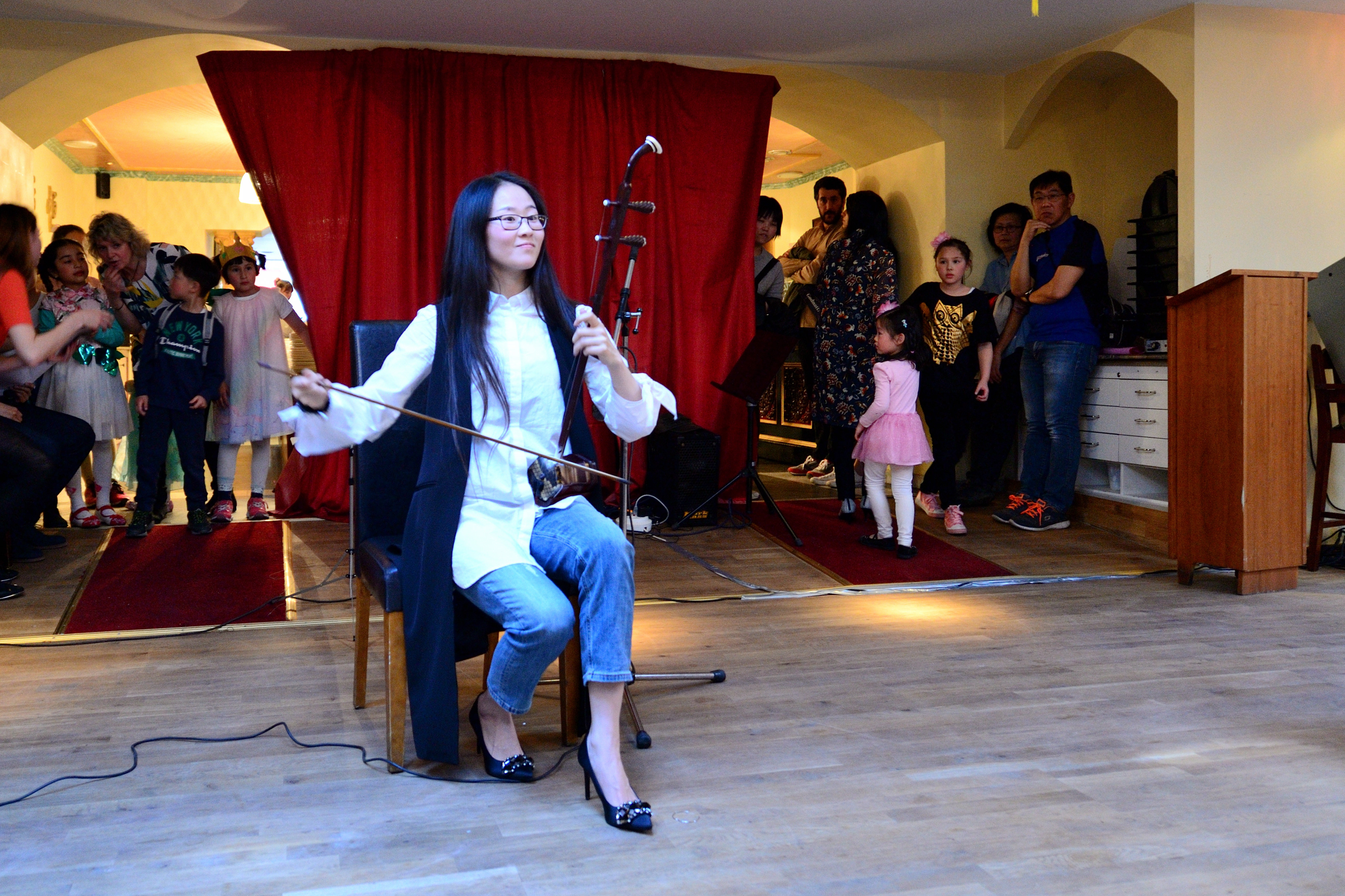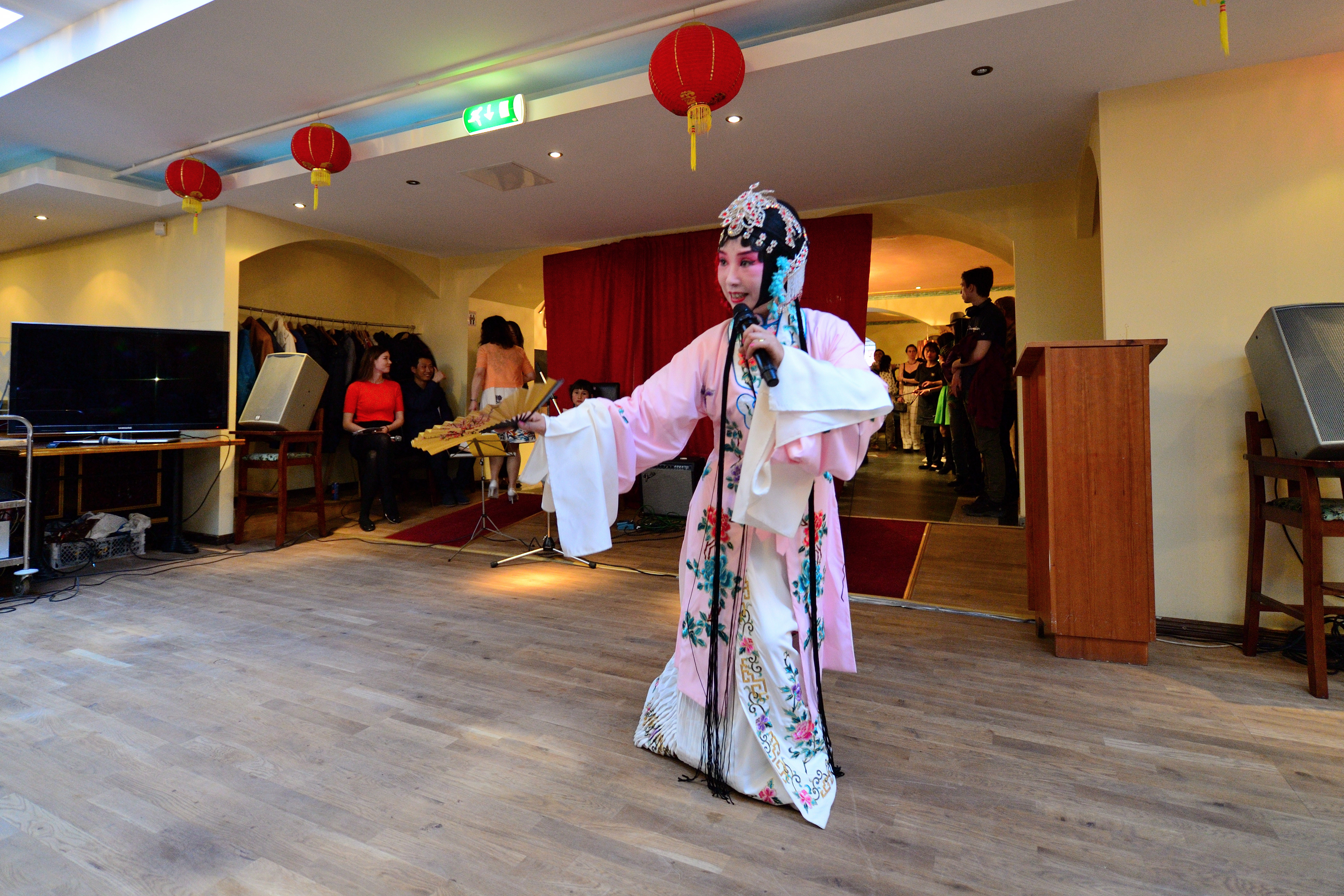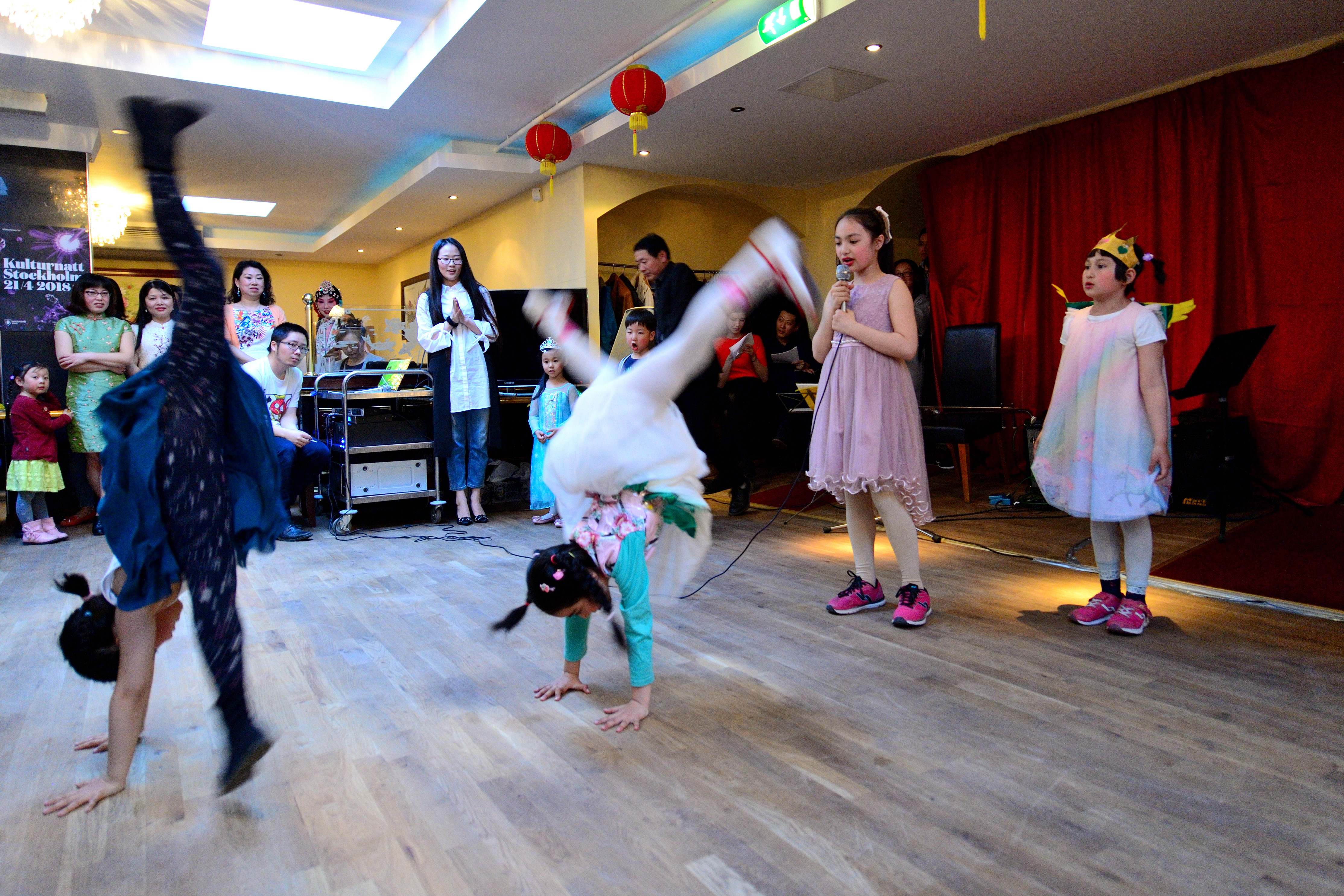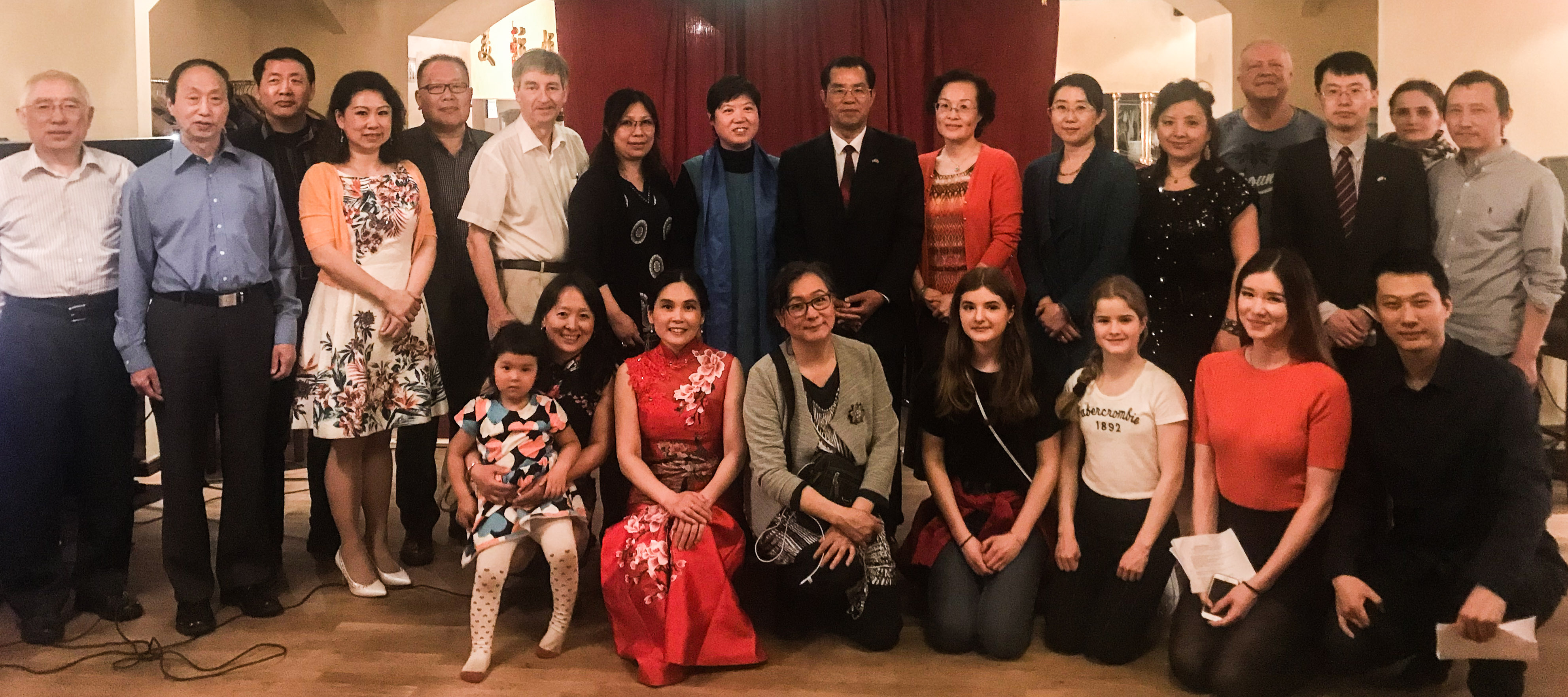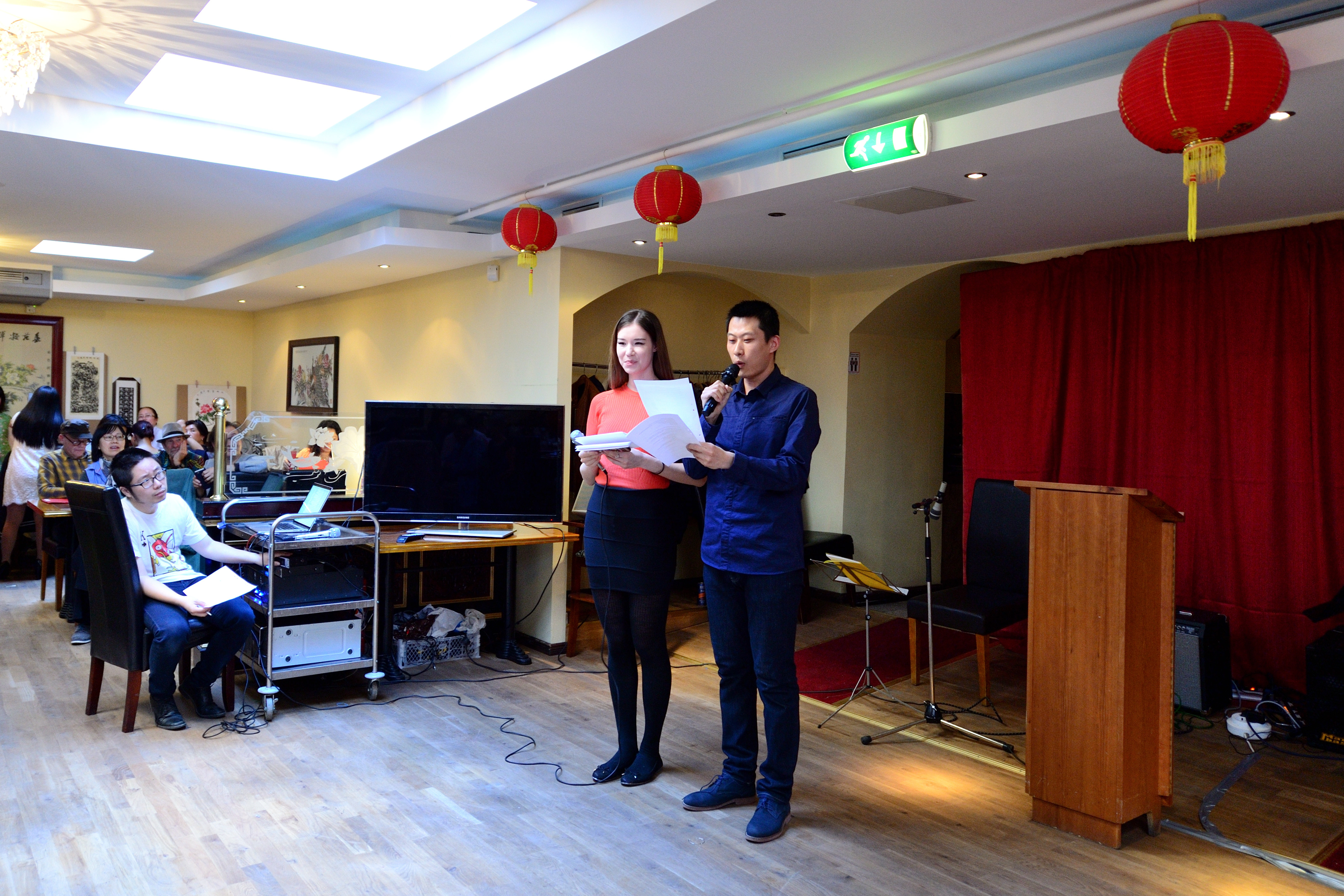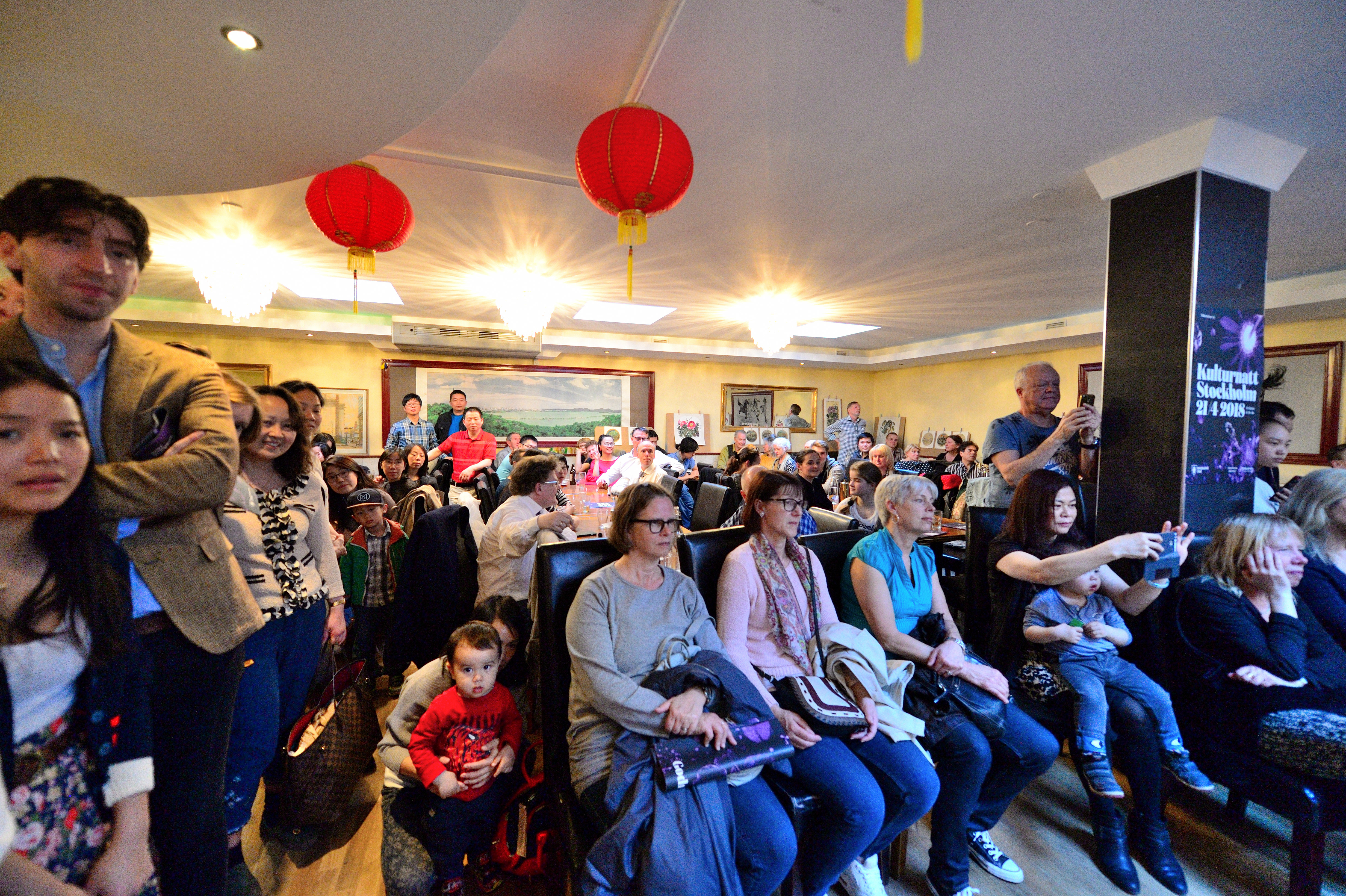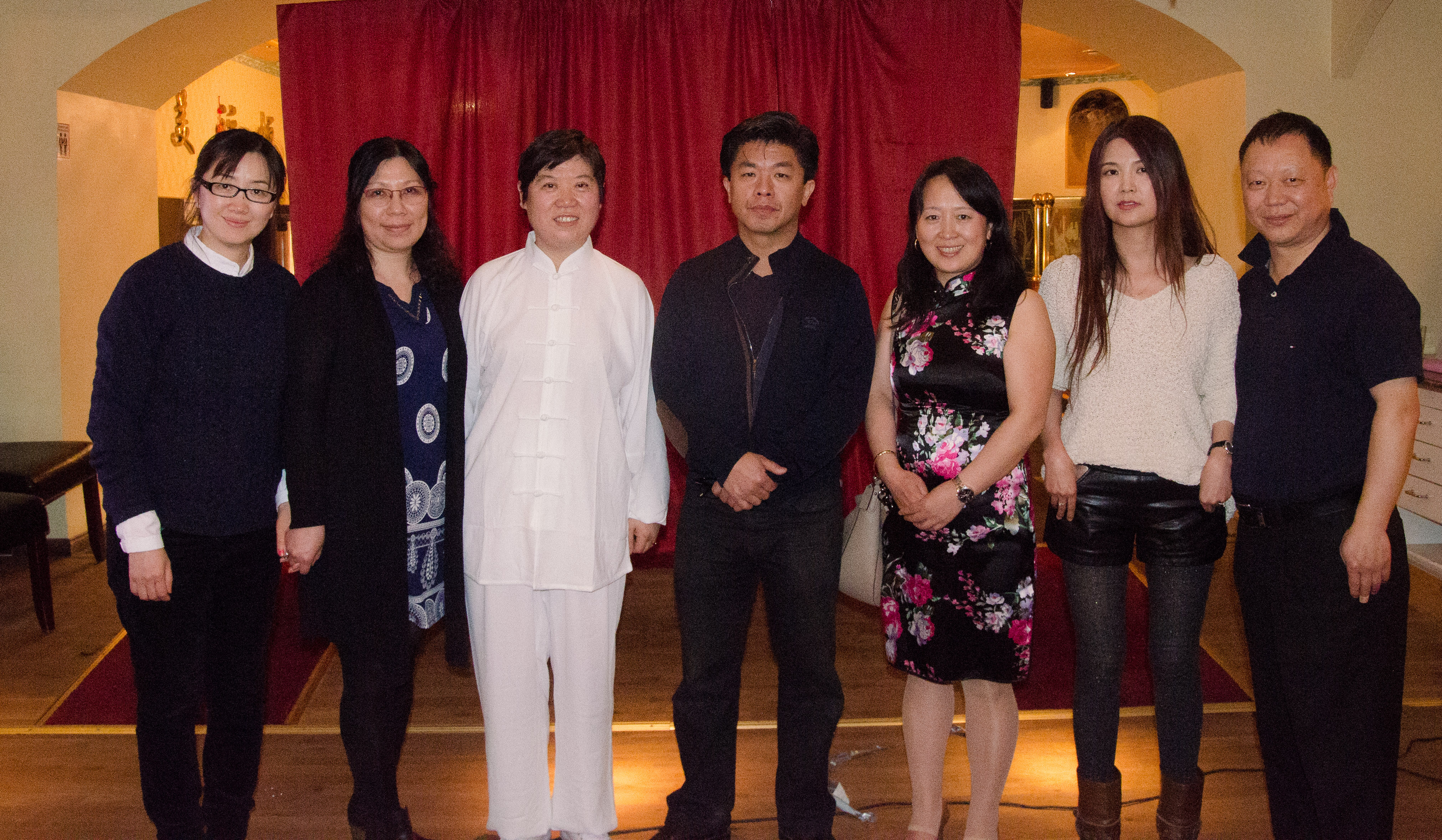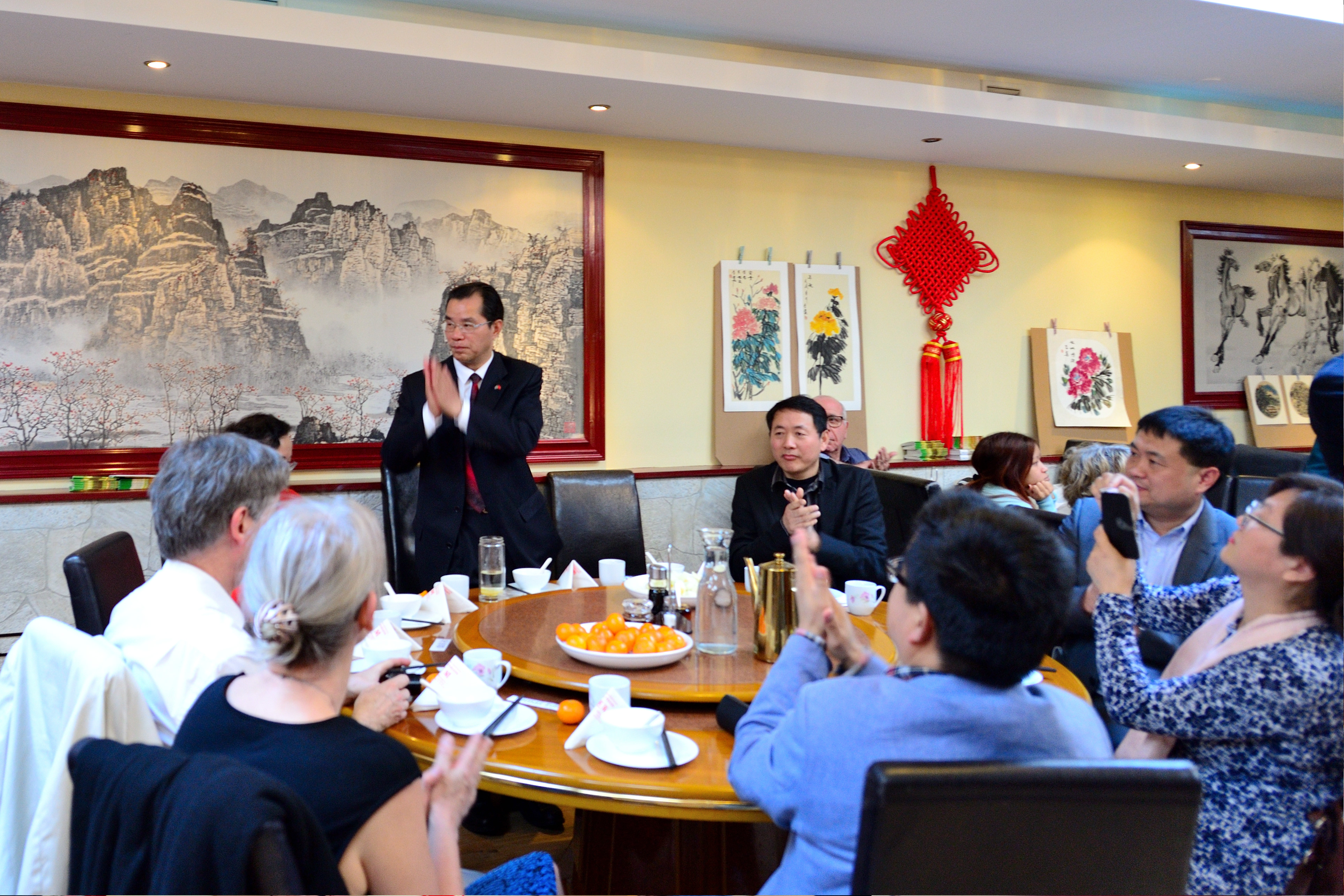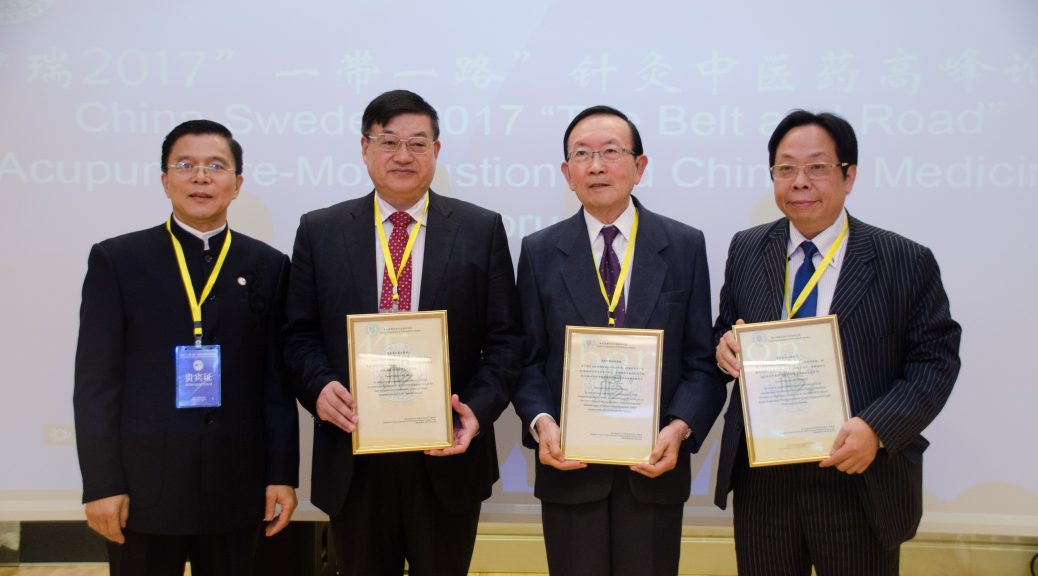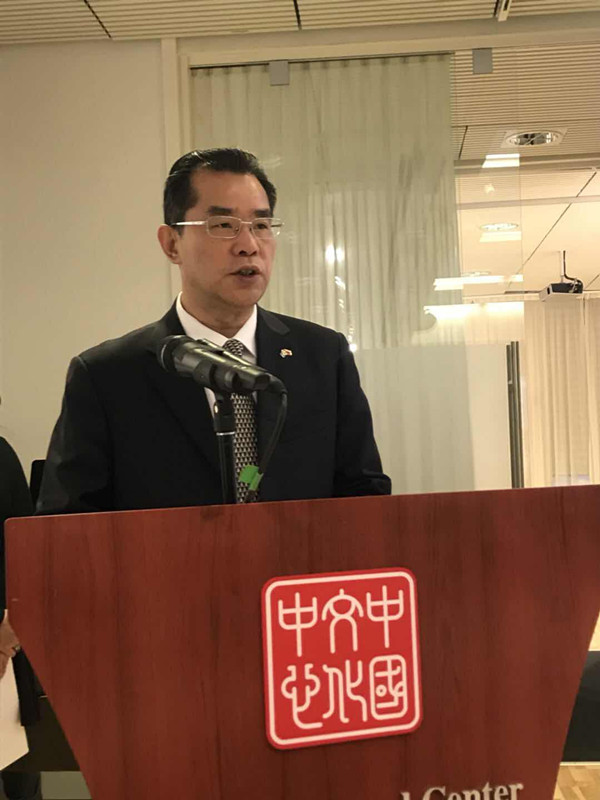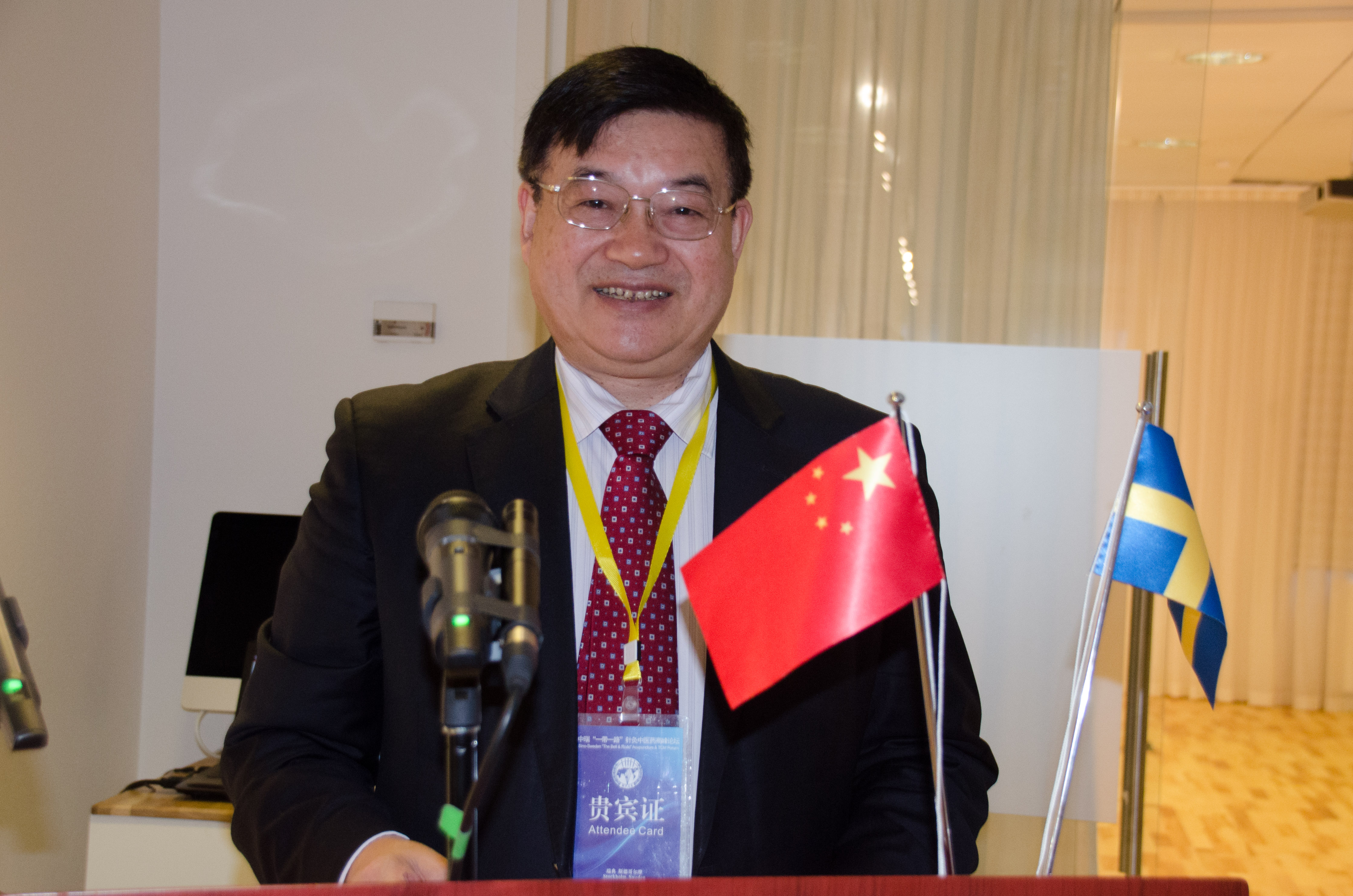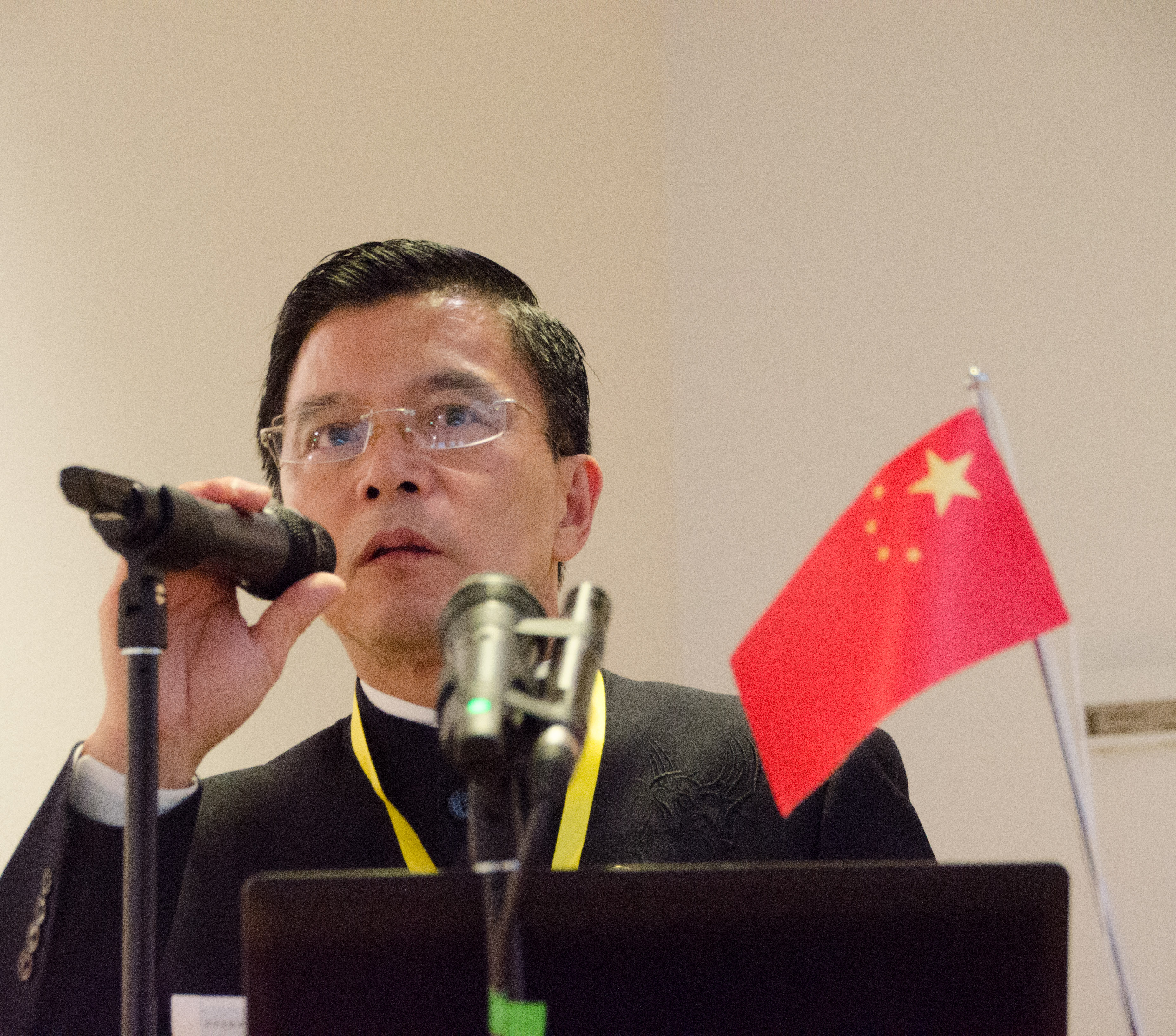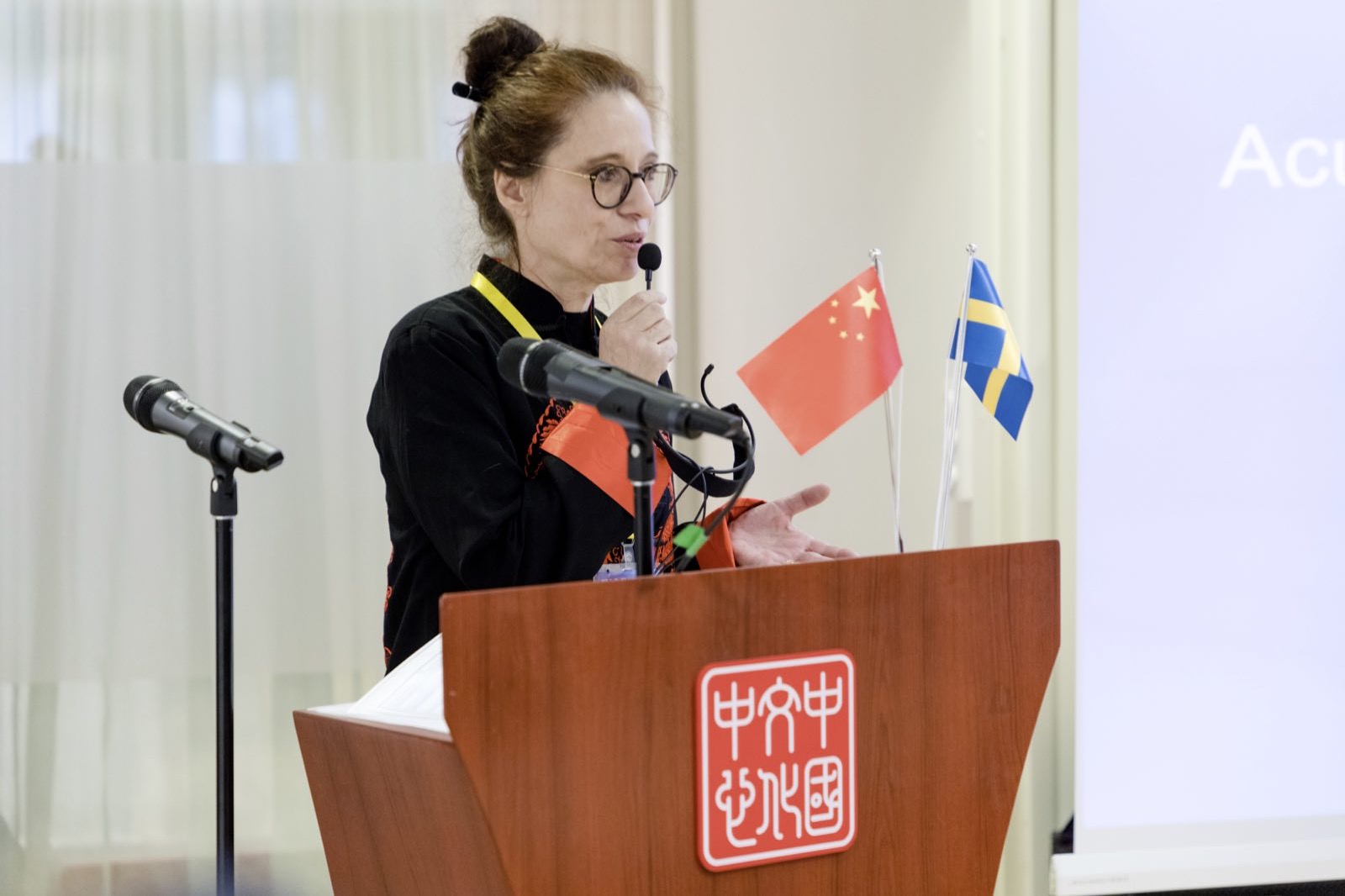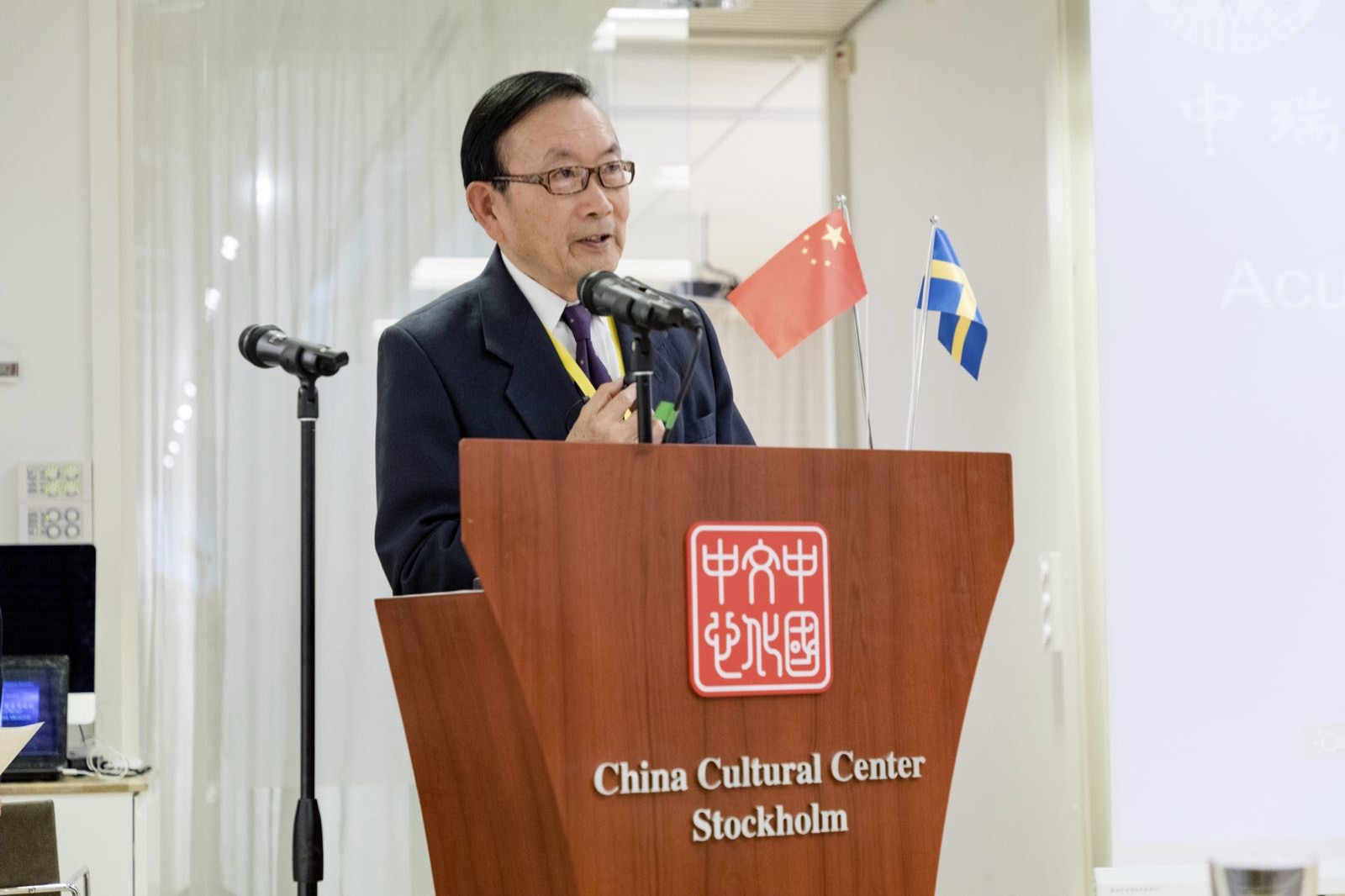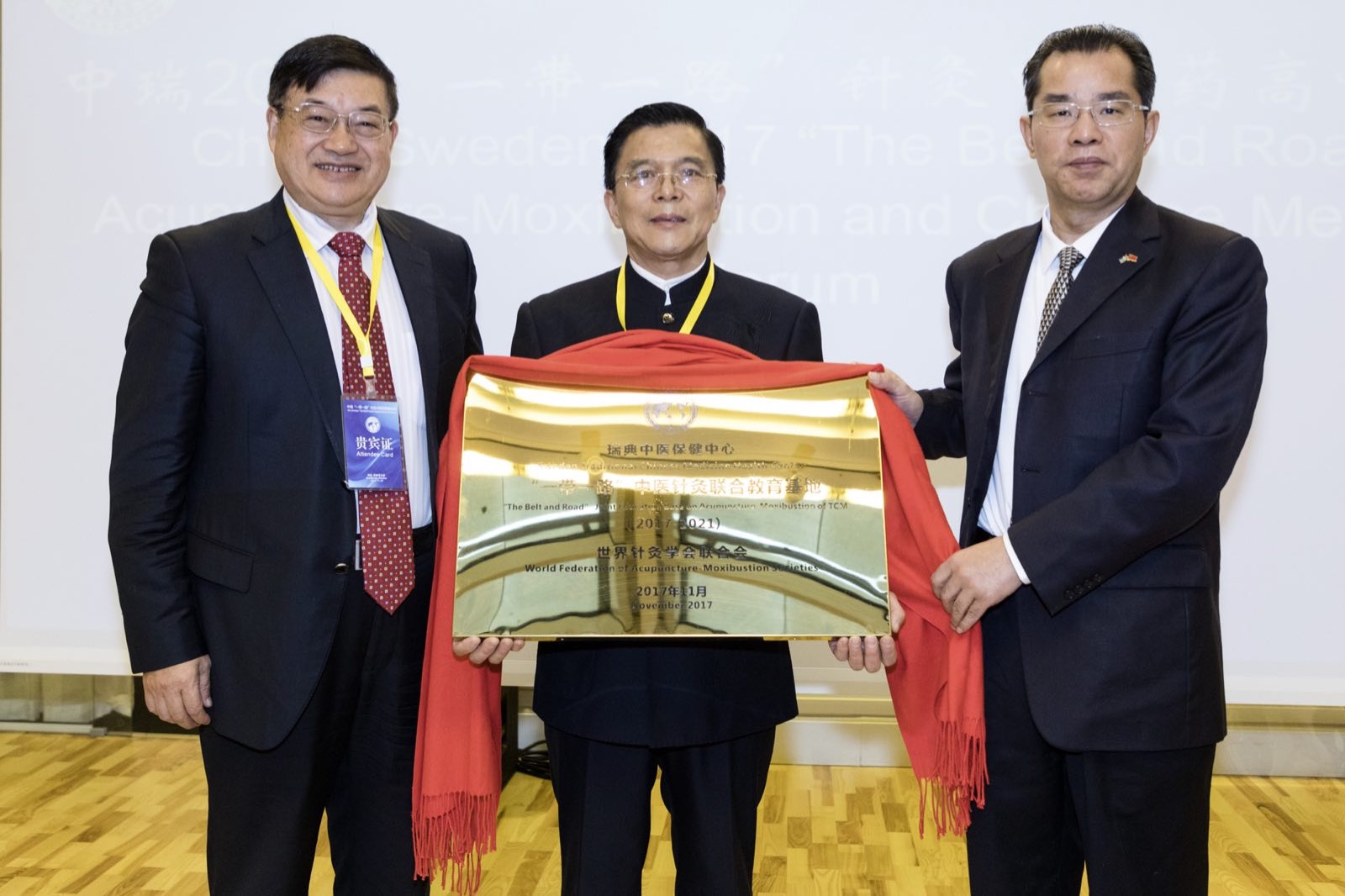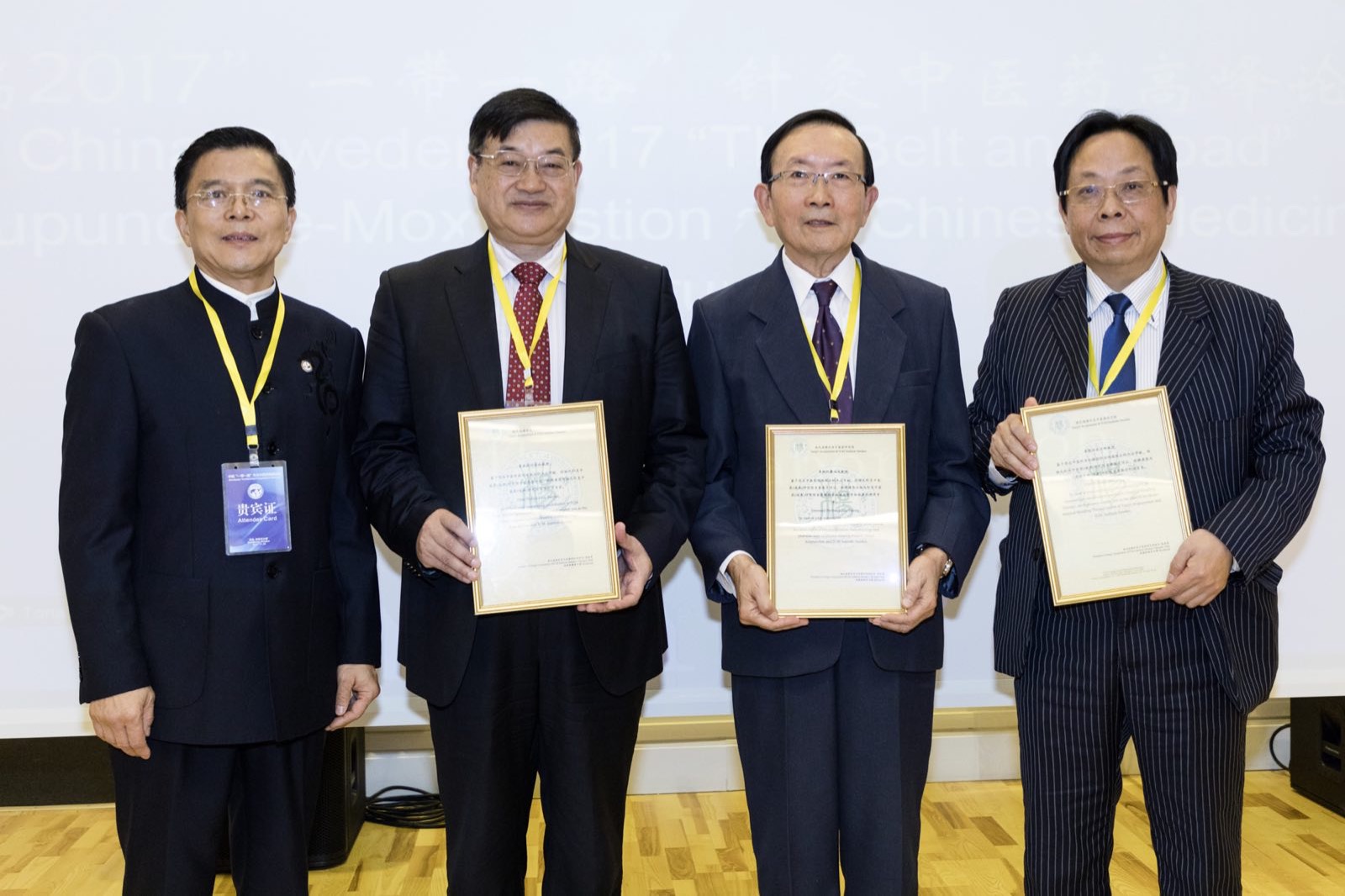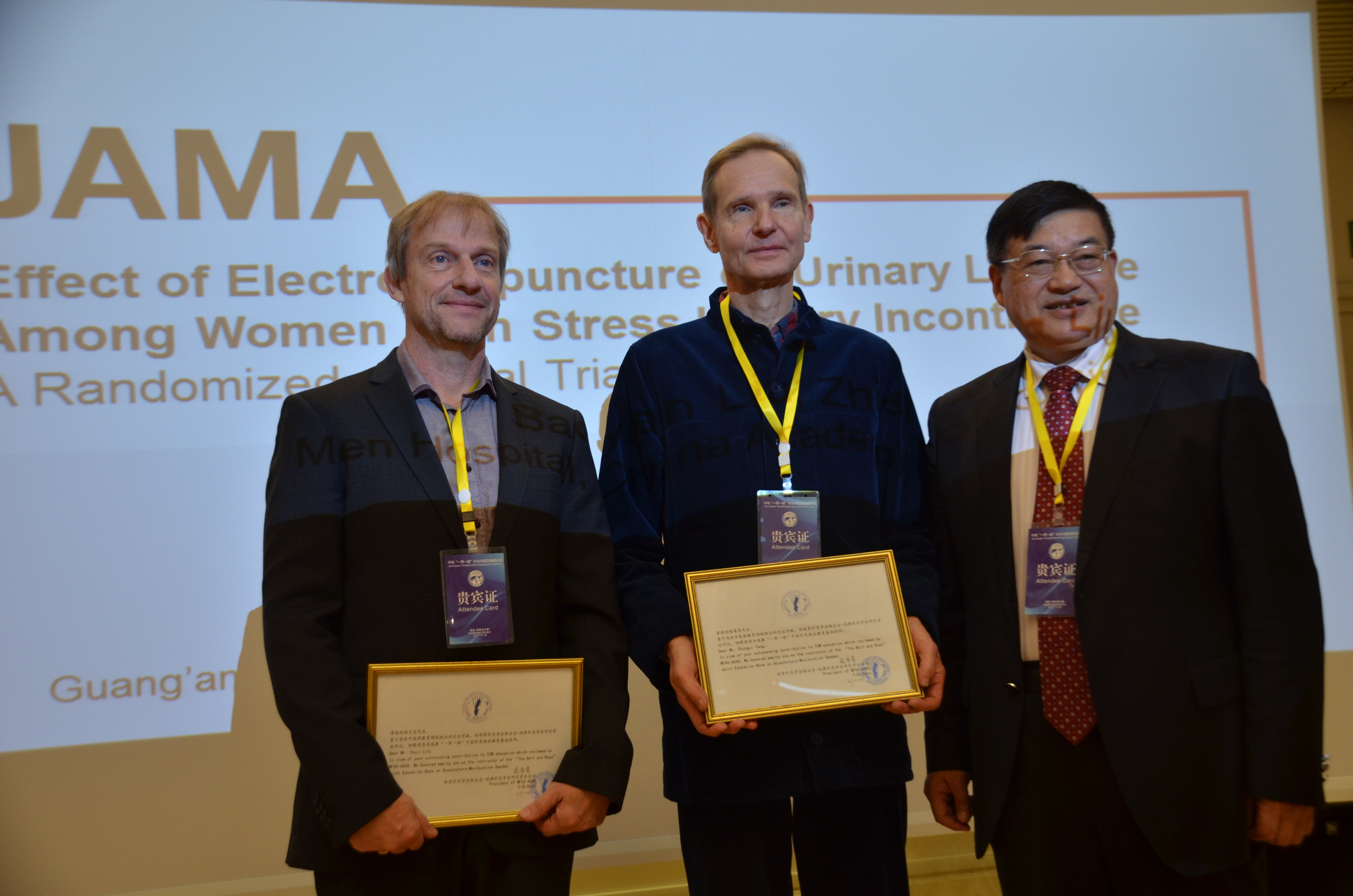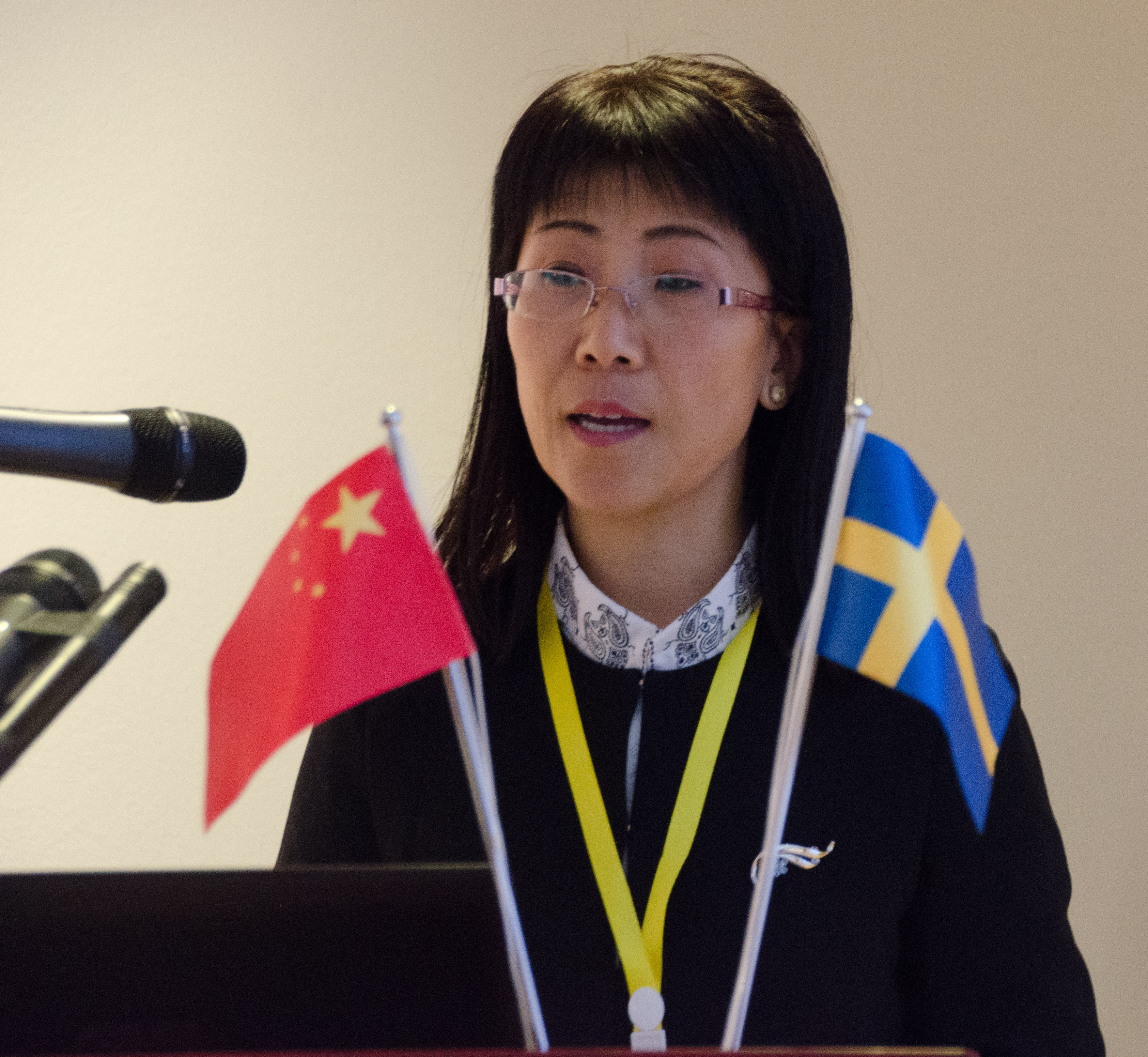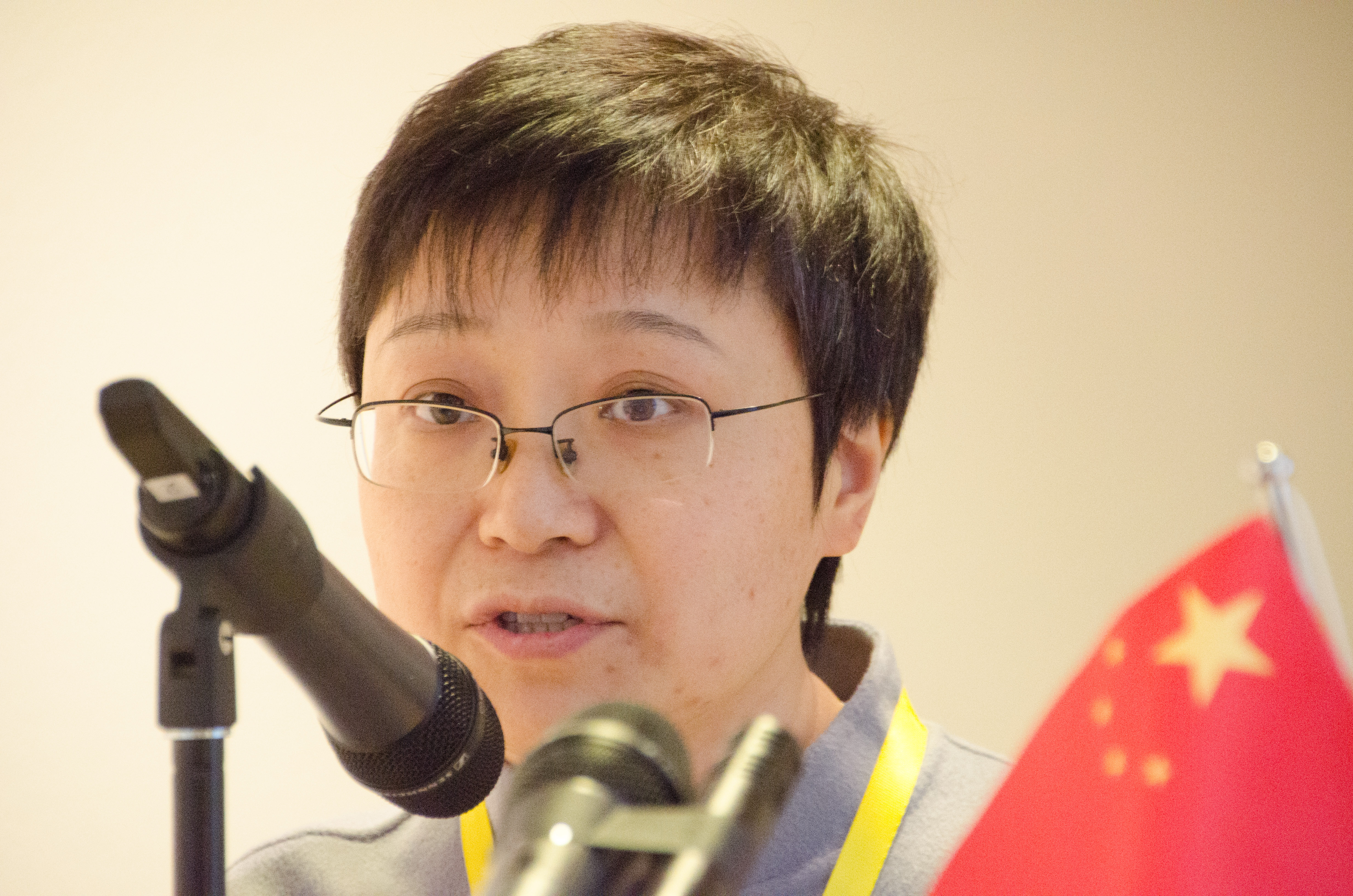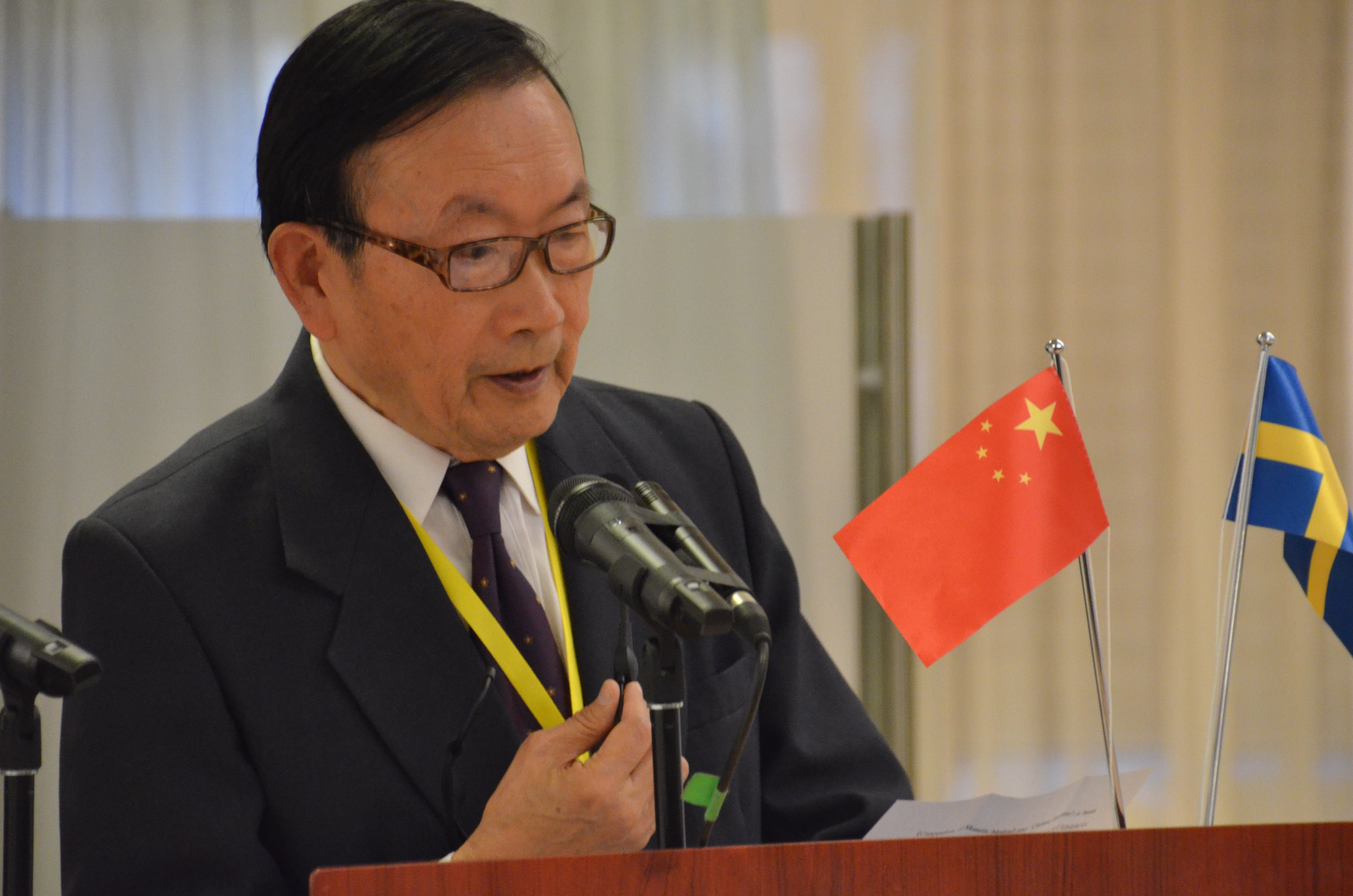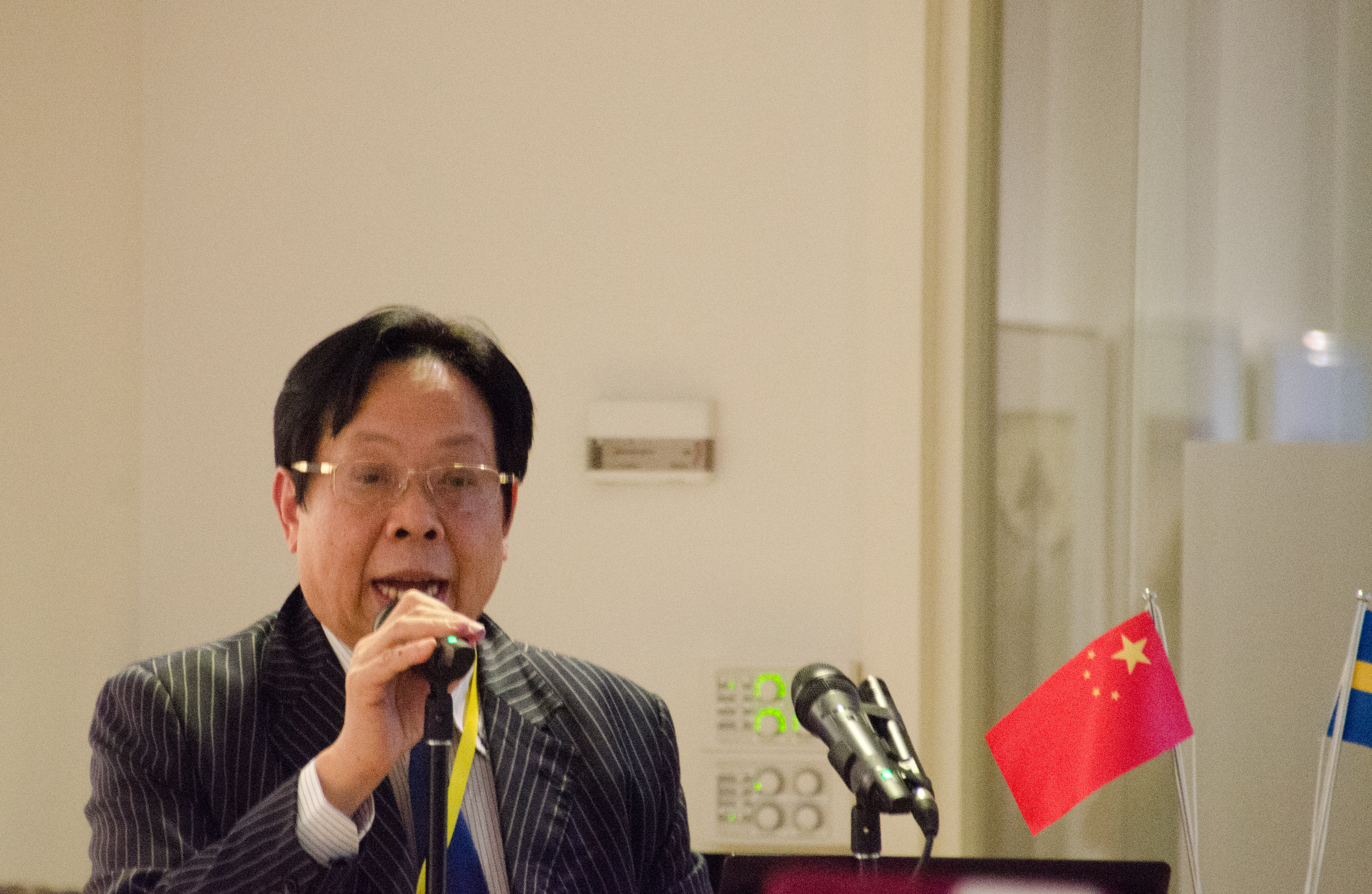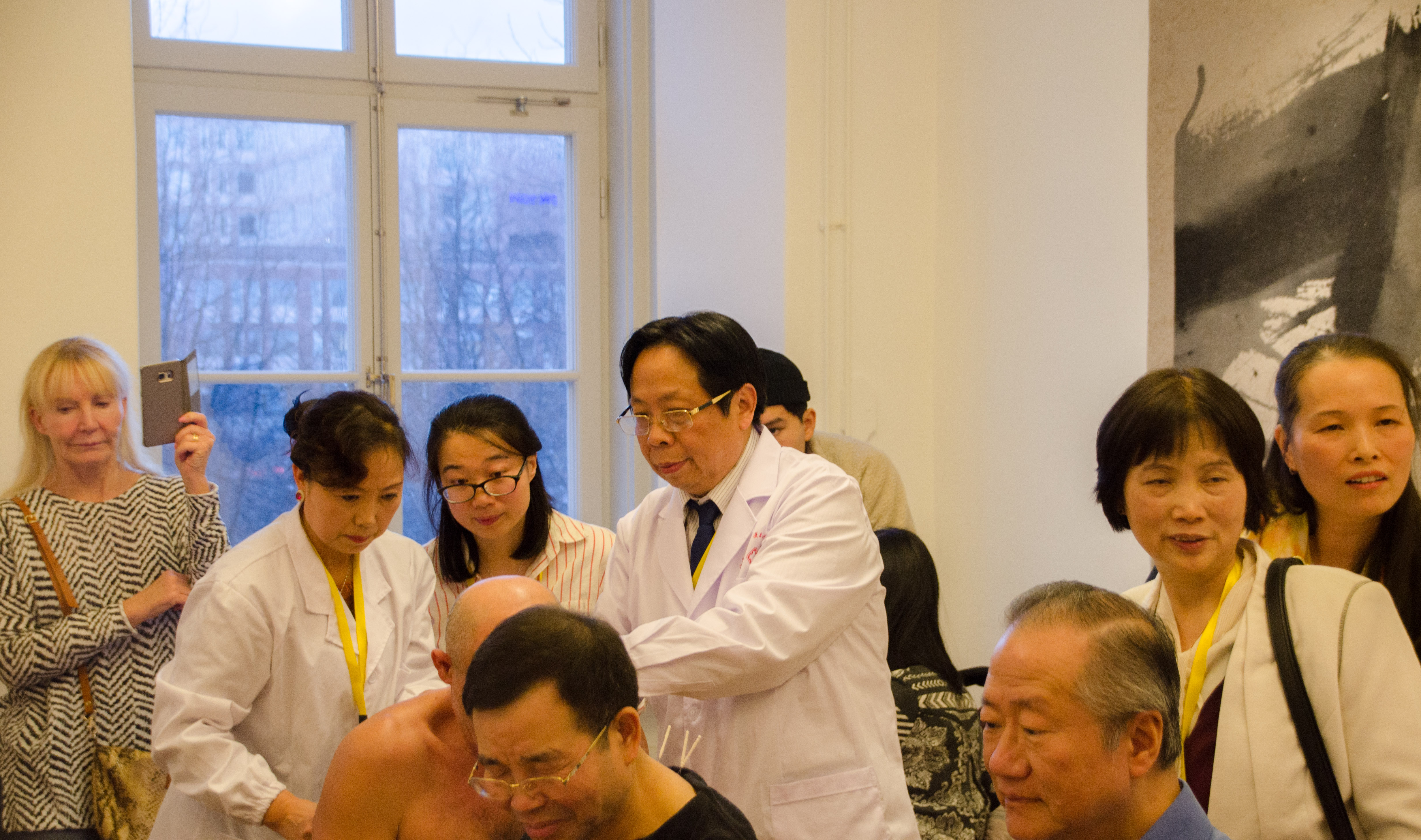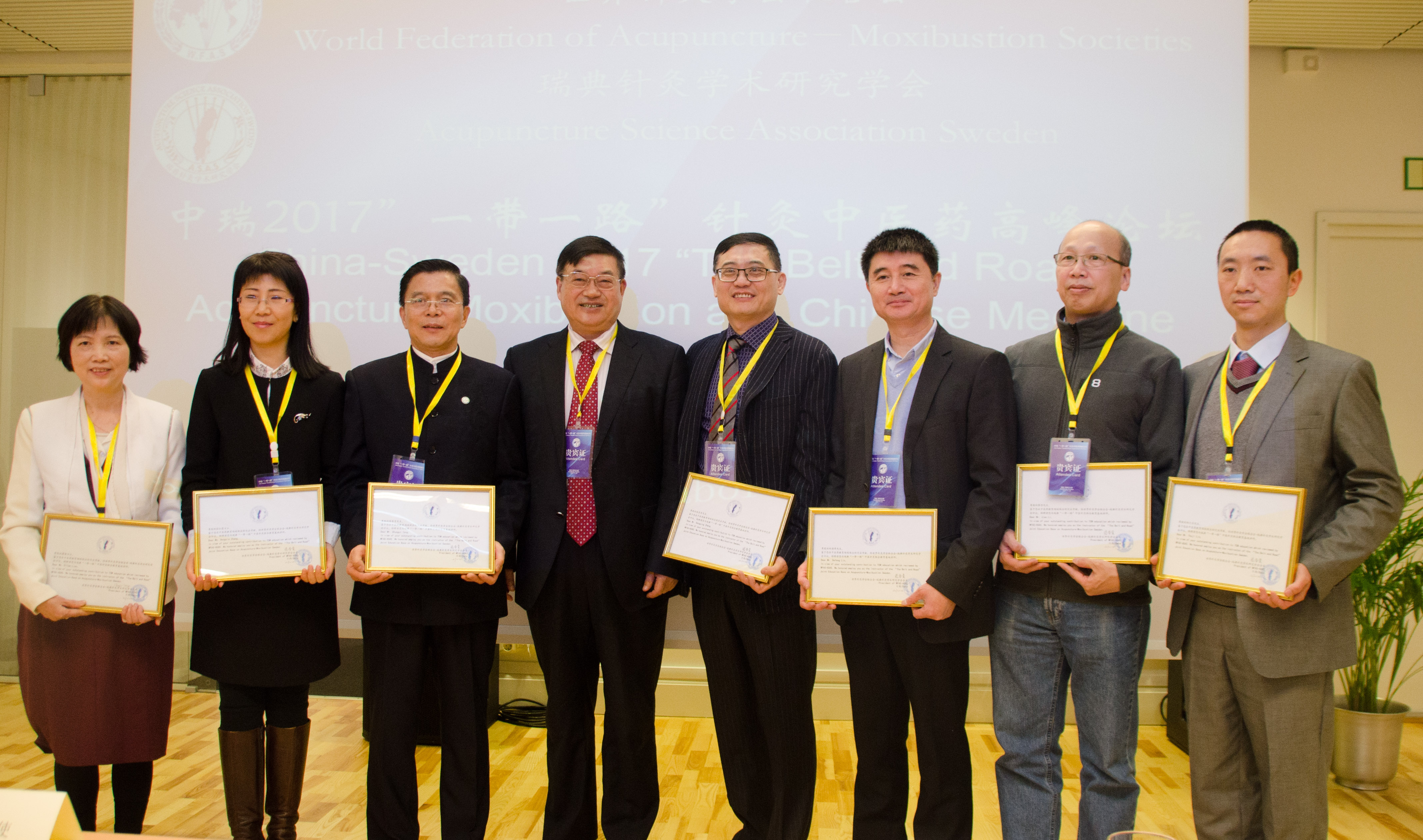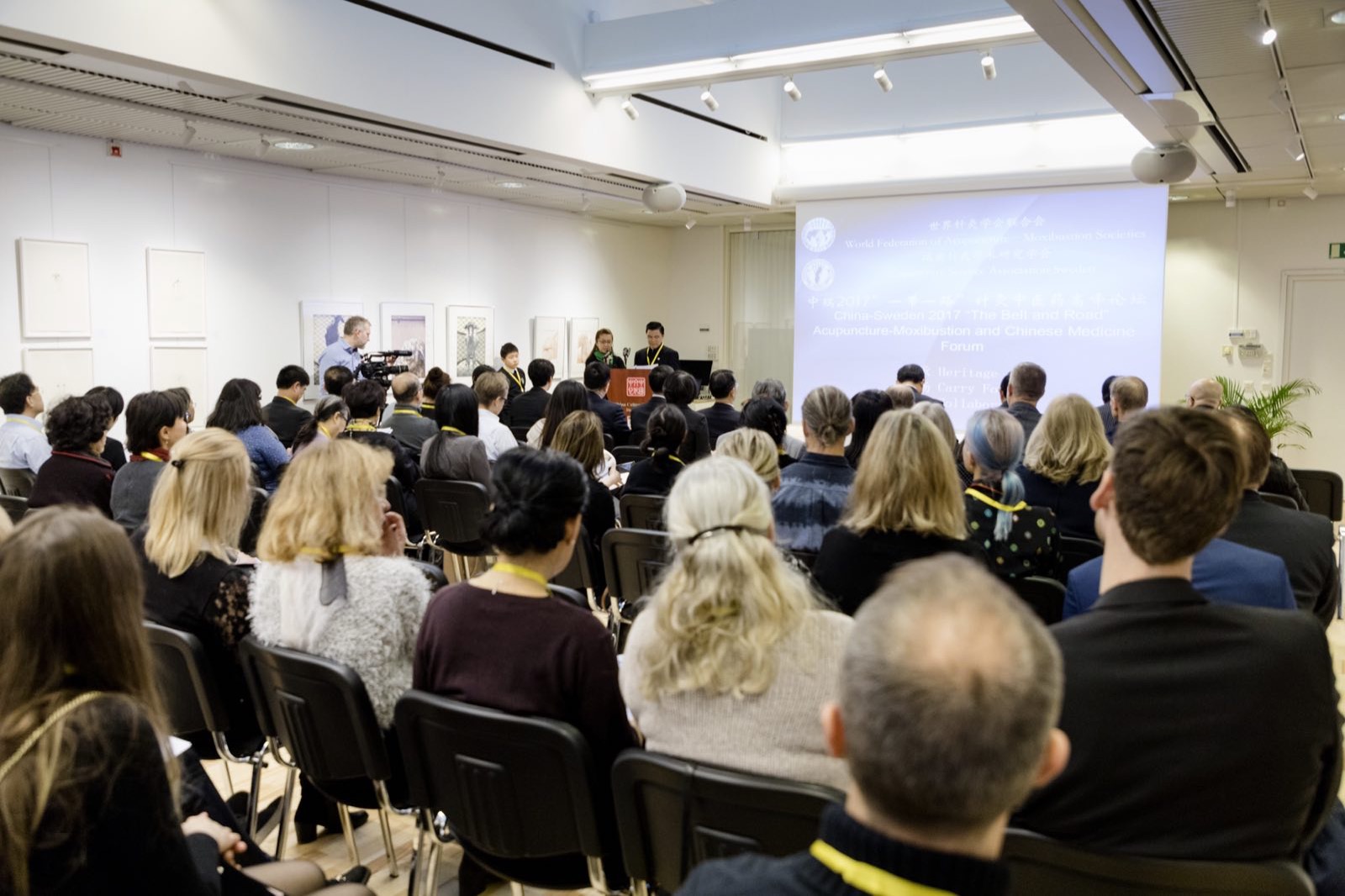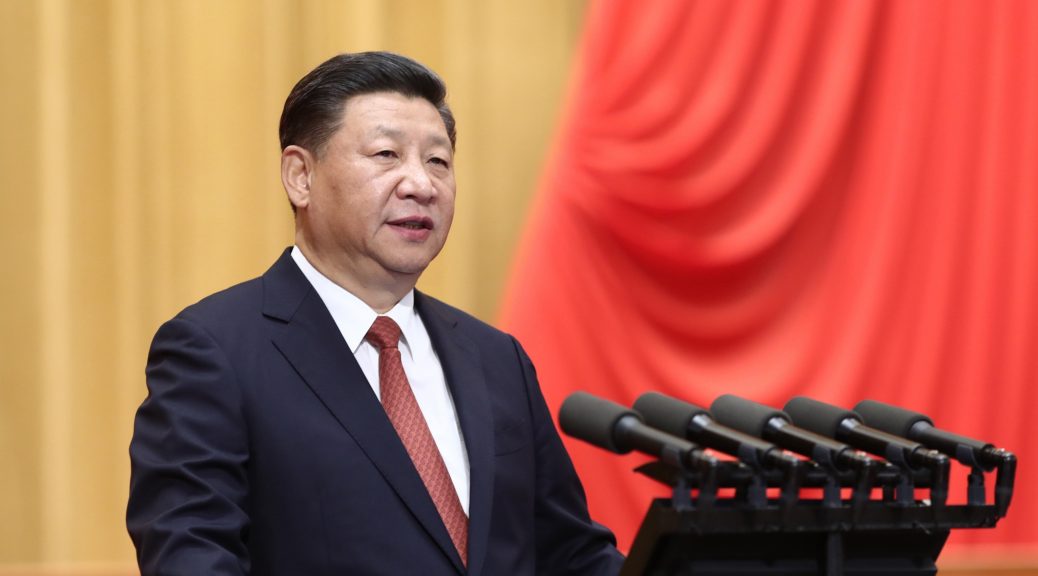Tag Archives: Belt and Road
High-level BRIX Seminar : The New Africa Emerges along the Belt & Road
STOCKHOLM, December 8(Greenpost)–Top diplomats from the African Union joined the Chinese Ambassador to Sweden and the Belt and Road Institute’s (BRIX) members in a special seminar on December 5 in Stockholm to outline the great progress being achieved in realizing Africa’s development goals in the context of the Belt and Road Initiative (BRI).
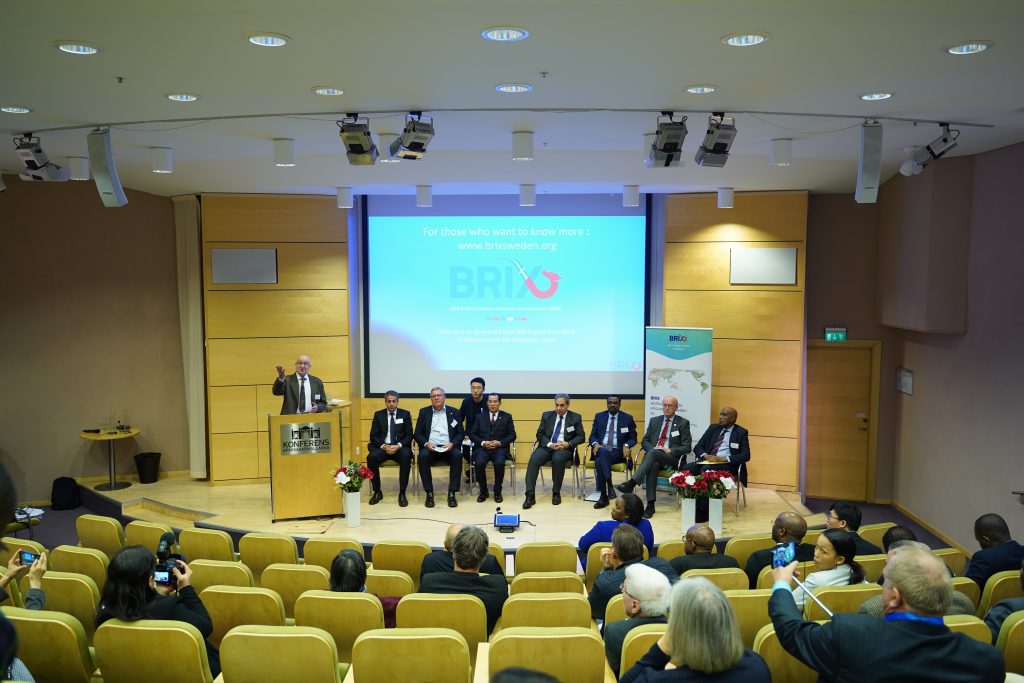
Moreover, the seminar’s more important aspect was to explore the massive potential imbedded in making Africa the greatest economic powerhouse on the planet in the coming decades and how Sweden, Europe and China can cooperate with the African nations to accelerate and benefit from this promising perspective.
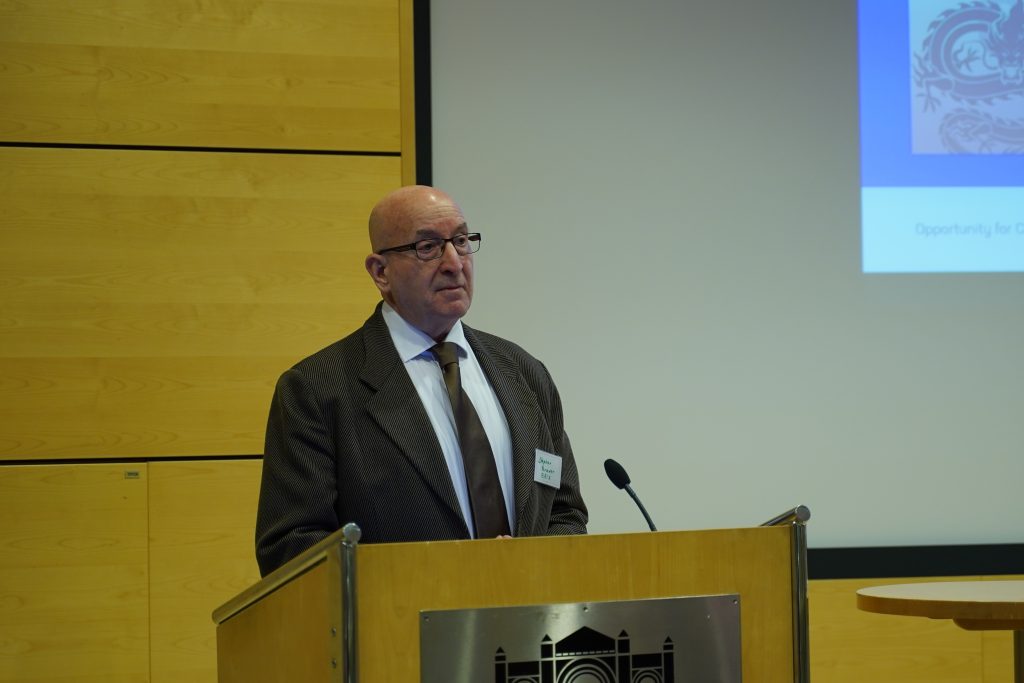
The seminar was initiated by Stephen Brawer, Vice-President of BRIX and moderator of the event. He welcomed everyone and gave a brief history of how BRIX came into being, and about its two other very successful seminars in 2019. The BRIX, which is only one year old, emerged out of a high-level seminar on the strategic and economic impact of the BRI held in May 2018 and organized jointly by the Schiller Institute and the China-Sweden Business Council (CSBC). He emphasized that BRIX works to disseminate knowledge of BRI as a global development process, and to present facts and knowledge based on deeper reflections, and not on superficial opinion based on prejudice and geopolitical agendas. Thus, BRIX believes that in the future, disinformation and propaganda that are spread in Sweden against BRI should be addressed in a more clear and assertive way.
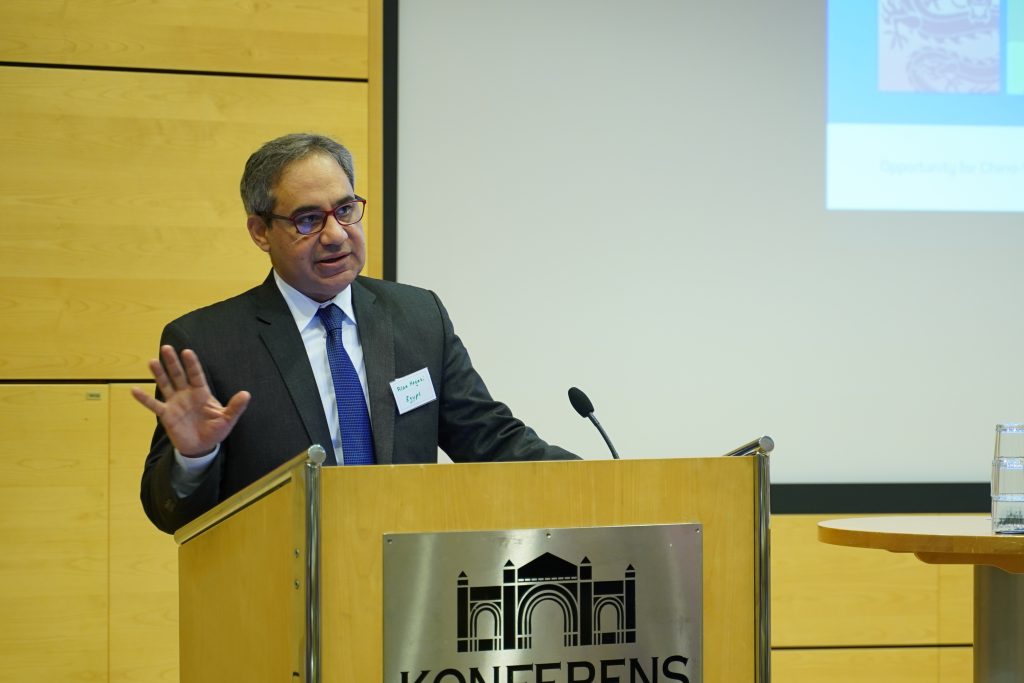
Egypt’s ambassador, Mr. Alaa Hegazy, gave the welcoming speech as representative of the African Union (AU), since Egypt is the current Chairman of the AU. He emphasized the importance of the Belt & Road Initiative for the implementation of Africa’s development plans that have been around for a long time and lacked only the construction starts. He presented the AU’s Agenda 2063 plan for a continental rail and road network, electrification and industrialization. Ambassador Hegazy explained that the AU has several cooperation mechanisms with the EU, UN, Japan, etc., but cooperation with the BRI has been the most dynamic and effective of these mechanisms.
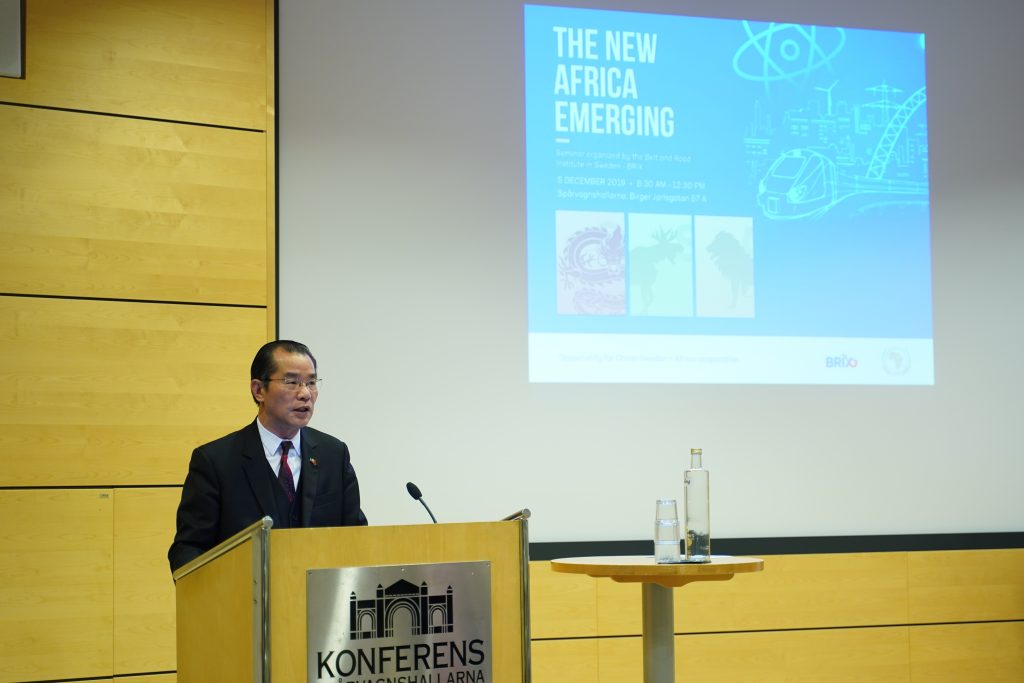
The ambassador of the People’s Republic of China to Sweden, Mr. Gui Congyou gave, the keynote speech of the seminar in which he gave a detailed picture of the extensive cooperation that has been established between China and Africa in the context of the BRI. Ambassador Gui referenced the September 2018 Summit of the Forum on China-Africa Cooperation (FOCAC) in Beijing and the results of that summit. He said: “China-Africa joint construction of the “Belt and Road” initiative has accelerated, and 40 African countries and the AU Commission have signed cooperation documents with China on the “Belt and Road” initiative. We have formulated a country plan based on the actual needs of Africa. We will implement a total of more than 880 China-Africa cooperation projects in the next three years.”
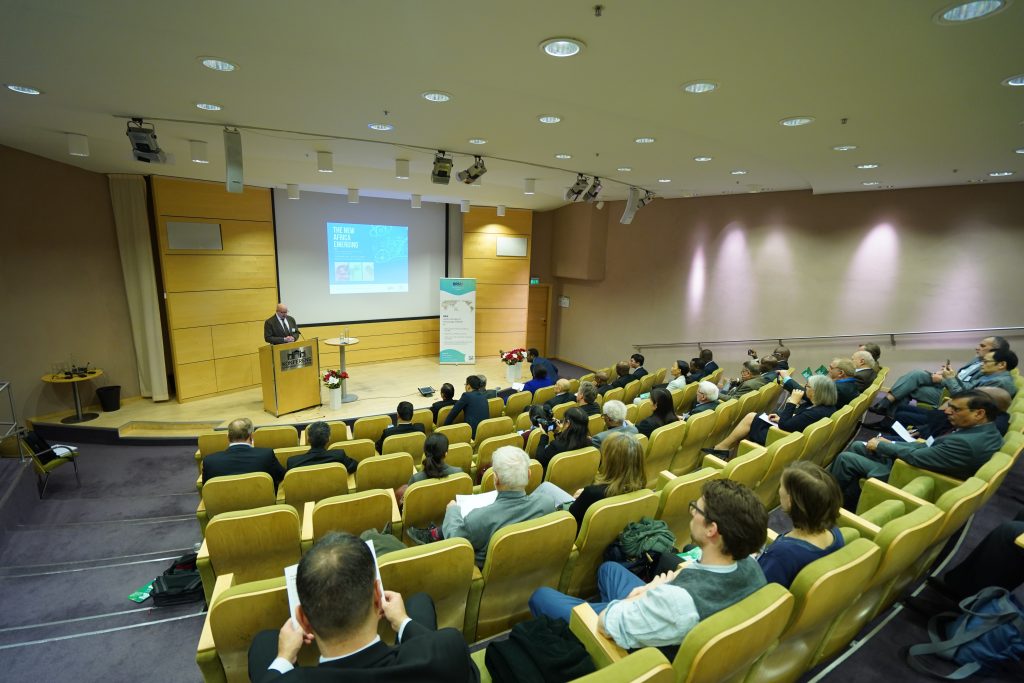
Concerning Chinese-Swedish perspectives, the Ambassador stated: ”The Swedish government has many aid and cooperation projects for Africa, and many large Swedish companies such as Volvo, Scania, and ABB have extensive operations in Africa. China is willing to work with other countries in the world, including Sweden, to complement each other’s strengths and make positive contributions to peace, stability and development in Africa.”
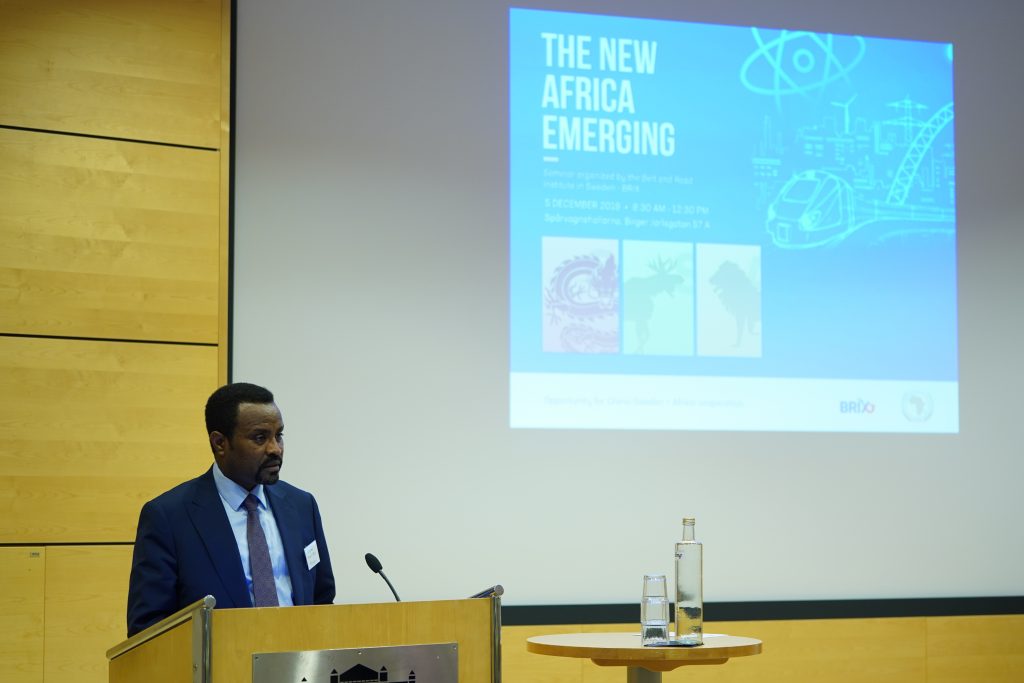
Ethiopia’s Ambassador, Mr. Deriba Kuma showed the audience how Africa’s plans for modernization and industrialization are being implemented. Ethiopia is well on its way to realizing its plans to become a middle-income country by 2025, transitioning from an agricultural-based society to an industry-based one. “Ethiopia is a major beneficiary in the Belt and Road Initiative. Since the country has embarked on expanding its infrastructure network across the nation like roads, railways, telecom and airports; the technical as well as financial support from the Government of China side has helped a lot”, Ambassador Deriba said. He added that “Ethiopia, through its vision of becoming a middle-income country by 2025, has launched an ambitious plan of constructing twelve industrial parks across the nation. Major Chinese companies have participated in the construction of these industrial parks and even some Chinese companies are constructing their own industrial parks in Ethiopia.” He emphasized that “Ethiopia has a plan to have 30 industrial parks by the year 2025. I hereby would like to call up on those competent companies to actively engage in this endeavor either through constructing the industrial parks or by leasing the sheds that could help them to participate in manufacturing of different products.”
Ambassador Kuma also reminded the audience that his country’s Prime Minister, H.E. Dr. Abiy Ahmed, will be receiving the Nobel Peace Price next week. This is an appropriate recognition of the path Ethiopia has taken towards social, political and economic reform.
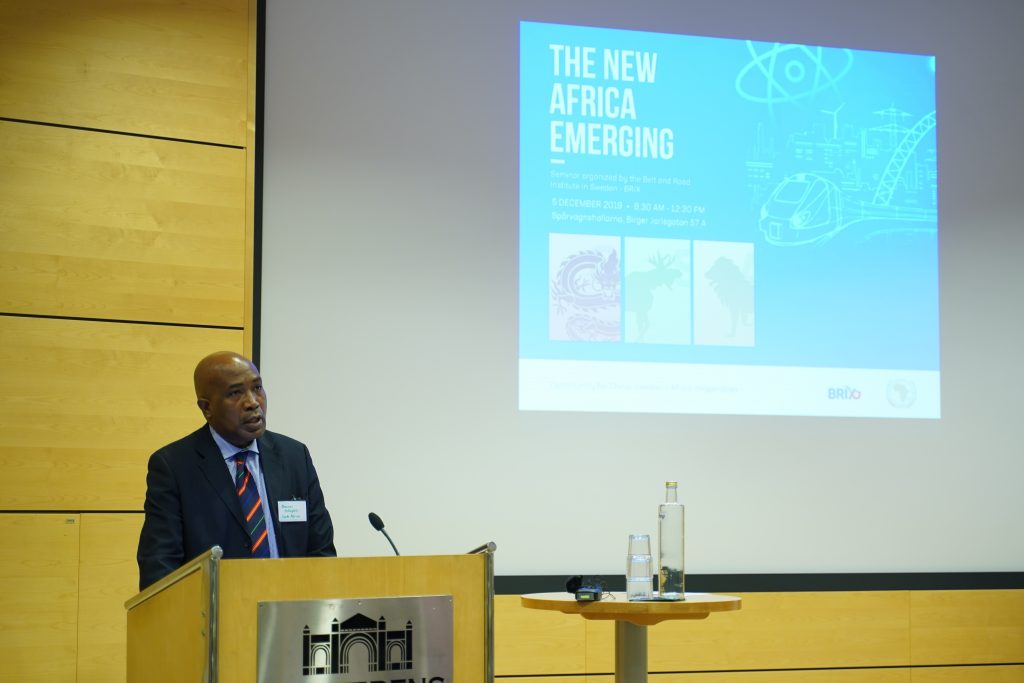
South Africa’s Chargé d’Affaires, Duncan Sebefelo discussed his country’s economic visions and plans, and the challenges and opportunities that exist today. He referenced the major investments China has made in key projects in his country. After the turn of the year, South Africa become the chairman of the AU, outlining the philosophical principles that the AU has for the economic cooperation projects. Mr. Sebefelo explained how important the BRI is for the development goals of the African continent.
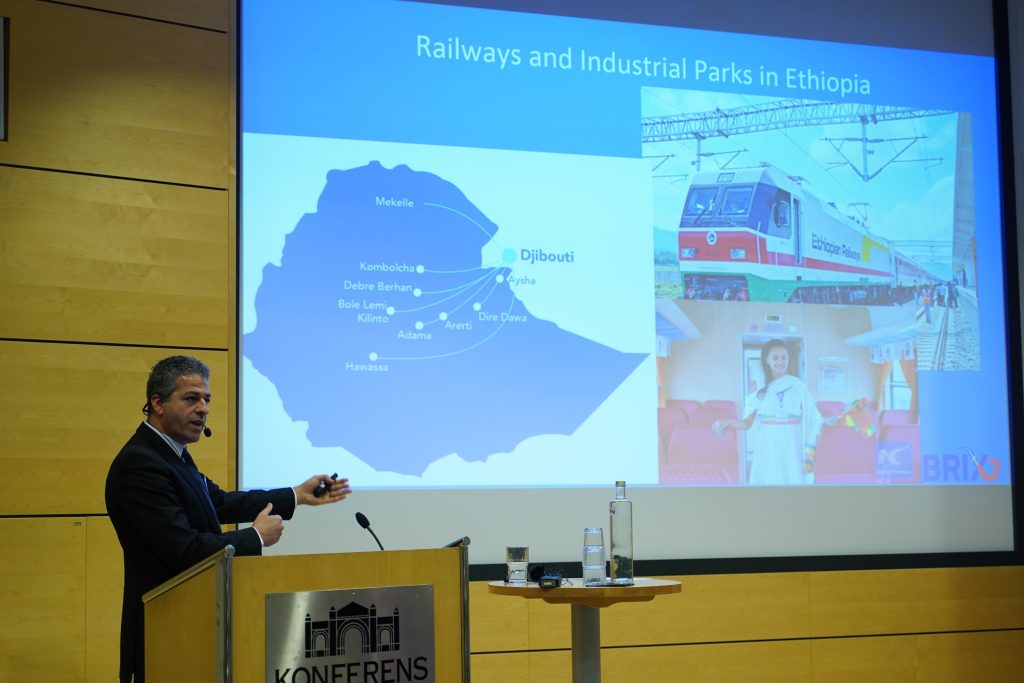
The board member of BRIX, Hussein Askary, made a thorough presentation on “retooling Africa’s rise”. With the help of charts, pictures and maps, he showed how BRI is helping in realizing Africa’s goals. He emphasized that BRIX does not exist to cheer on China or Africa, who can take care of themselves. BRIX’s goal is that Sweden should be part of this process of cooperation and not miss the train towards economic prosperity and stability in the world. In order to achieve that, Sweden’s and Europe’s attitude towards Africa has to change first. He contrasted this attitude to that of China. While Sweden and the Eu considered Africa “a problem”, China considers Africa “an opportunity”. Askary explained that a major part of this problem is the “aid” mentality. He argued that the Chinese way of “empowering rather than helping”, which is to supply Africa with the “tools” for development such as infrastructure, industrialization and technology transfer is the most suitable for Sweden and Europe to follow. Under the heading “SDG acrobatics” (Sustainable Development Goals), he talked about how Sweden and the EU are redefining the UN development agenda in 2030, so that the most important priority goals to be addressed (poverty, hunger, healthcare, electricity education, water, industrialization, etc.) are placed at the bottom of the priority list, while Climate Action, goal no. 13, is at the top. In conclusion, he explained that with the help of China and the BRI, Africa is well on the way to realizing its Agenda 2063. But he asked how faster can this agenda be realized if Sweden and the EU contribute to it?
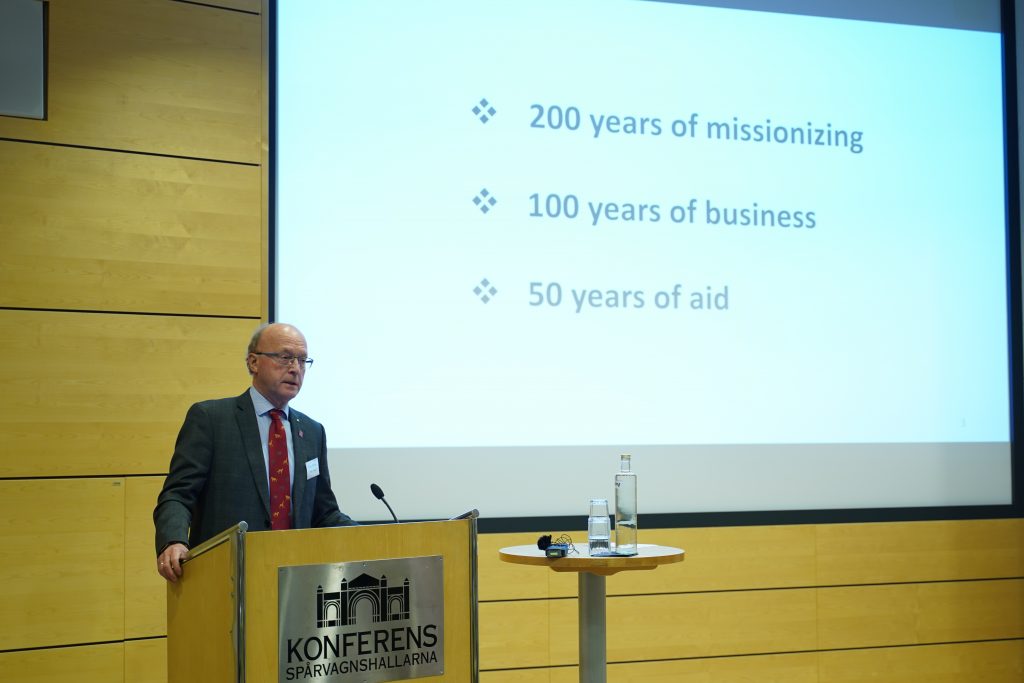
The Norwegian former member of parliamentary, and co-founder of Ichi Foundation, Mr. Thore Vestby, talked about the Norwegian cooperation with Africa, which has been largely restricted to aid through NORAD. But a new focus on cooperation has been established in 2012 through the Norwegian African Business Association by leading Norwegian companies (norwegianafrican.no). Norway also needs to establish cooperation with BRI, Vestby emphasized, and a shift in the attitude in Norway towards China and the BRI is necessary. He congratulated the Swedish BRIX for its successful work and announced that a “BRIX Norway” will be started in the new year.
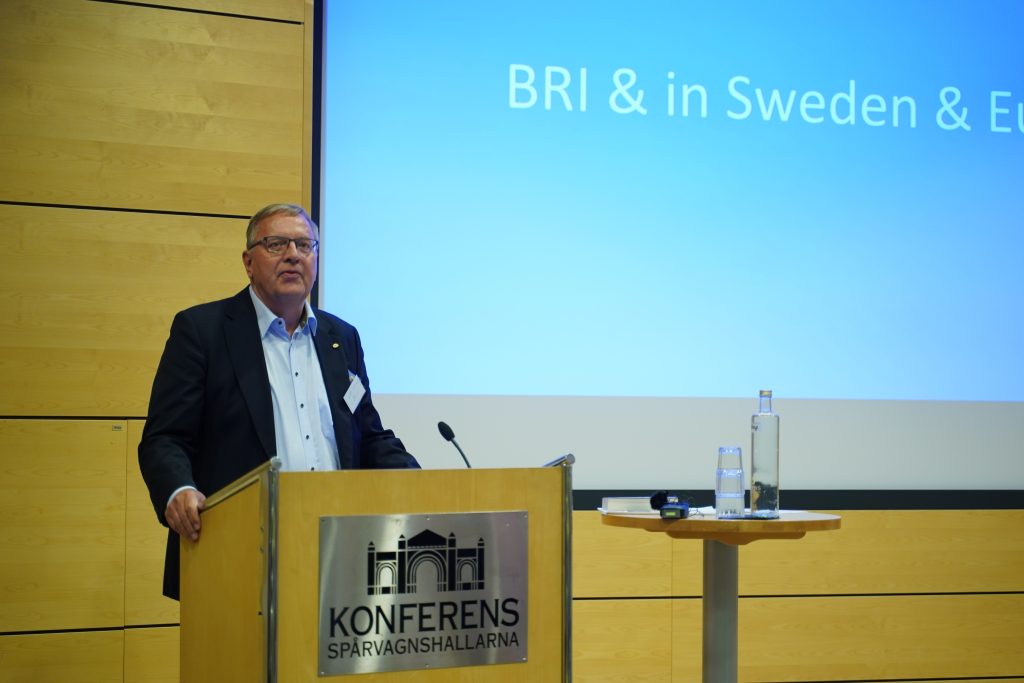
BRIX member and private consultant, Mr. Lars Aspling, explained in his presentation that now 16 of 28 EU countries have already signed agreements (MOU) with China to cooperate with the BRI. This shows that such an agreement, or even a mere positive opinion on BRI, as France and Finland have expressed, need not necessarily to divide the EU. Although the Swedish government, with its proposal for a new China strategy, adheres to EU policy, there are, thus, no legal issues that hinder Sweden from joining the BRI. But only a lack of political will stands in the way, he stated. Aspling gave a tour of the necessary investments that need to be made in northern Europe, Scandinavia and Sweden to be able to rise to the levels of productivity necessary in the new BRI era.
Aspling seized the opportunity to announce that a new report that BRIX has just published about what BRI on the importance of Sweden’s cooperation with the BRI can now be downloaded from the BRIX website. (Https://www.brixsweden.org/brix-publicerar-en-ny-belt-and-road-speciell-rapport/).
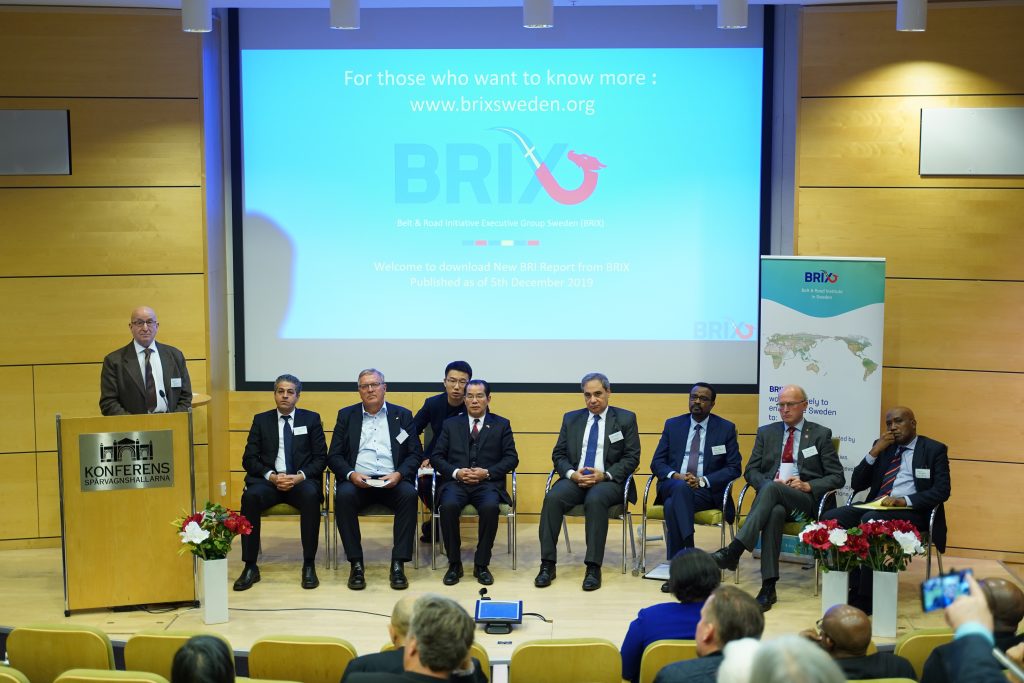
The seminar’s moderator, Stephen Brawer, led the closing panel debate where the speakers answered questions fielded by the audience.
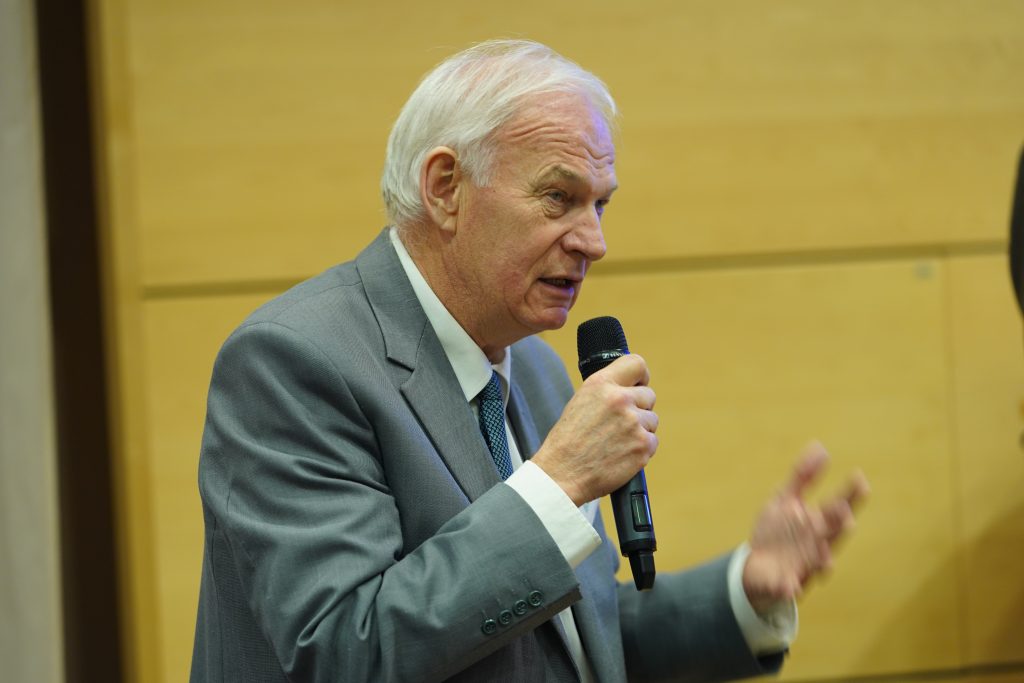
BRIX chairman Ulf Sandmark commented on the question and discussion about corruption in Africa by pointing out that BRI has a focus on real investments that are not handed over as sums of money like the investments made by the West. The BRI investments are delivered as cement, steel, machinery and input products for the projects. “Cement is difficult to put into a bank account, which means that BRI has an intrinsic mechanism to prevent corruption,” he said.
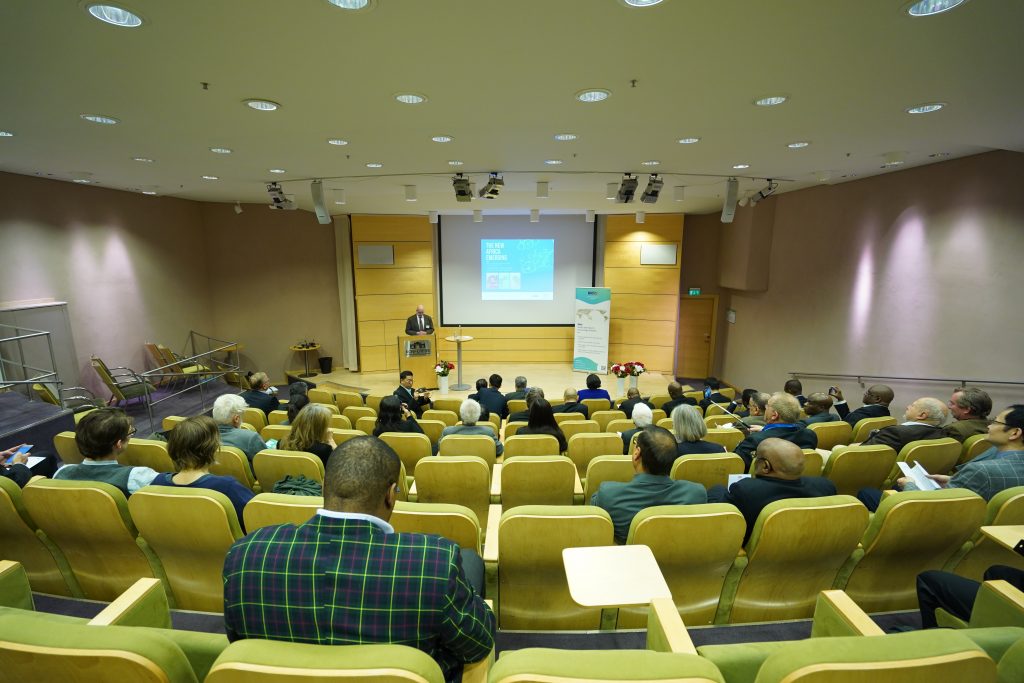
In closing the seminar, moderator Stephen Brawer again emphasized the need to present fact-based information and knowledge about BRI, and made a point of thanking the effort that TV100 and Fredrik Vargas make through their important work in reporting the proceedings of this seminar.
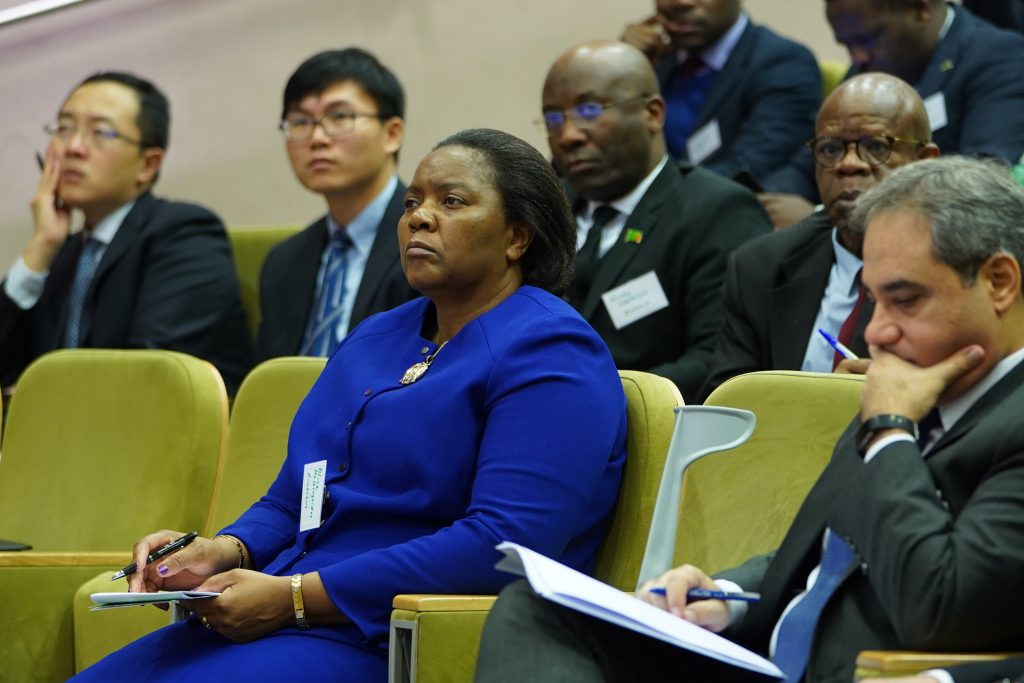
19 diplomats from 15 countries (mostly from Africa) participated in the seminar which was attended by 60 guests.
Högt deltagande på BRIX seminarie: Afrika och Belt & Road “Det Nya Afrika växer med Belt & Road”
By Xuefei Chen Axelsson
STOCKHOLM, December 8( Greenpost )–Toppdiplomater som representerar den Afrikanska Unions medlemsländer i Sverige deltog tillsammans med Kinas ambassadör i ett välbesökt seminarium organiserad av Belt and Road Institutet i Sverige (BRIX) den 5 december i Stockholm med temat Det nya Afrika Växer” (The New Africa Emerging).

Seminariets deltagare presenterade och diskuterade den enorma förändringen och utvecklingen som pågår i flera delar av Afrika för att förvekliga Afrikas visioner och utvecklingsmål i sammanhanget av Belt and Road Initiativet / Nya Sidenvägen Initiativet (BRI).
Ännu viktigare var diskussionen om den obegränsade utvecklingspotentialen som kan växa ur ett aktivt samarbete mellan Sverige, Kina och Afrika för att accelerera och få nytta av detta lovande perspektiv.

Seminariet inleddes av Stephen Brawer, viceordförande för BRIX och moderator för seminariet. Han välkomnade alla och gav en kort historien om hur BRIX blev till, och om dess två andra väldigt lyckade seminarier i 2019. Han betonade att BRIX jobbar för att sprida kunskap av BRI som en global utvecklingsprocess, och presentera fakta och kunskap baserade på djupare reflektioner och inte på ytlig opinion byggd på fördomar och politiska syften. På så sätt anser BRIX att i fortsättning ska desinformation och propaganda som sprids i Sverige mot BRI bemötas tydligare och med mer kraft.

Egyptens Ambassadör Alaa Hegazi höll välkomsttalet som företrädare för Afrikanska Unionens (AU) ordförandeland. Han betonade hur viktigt Belt & Road Initiativet är för genomförande av Afrikas utvecklingsplaner som funnits länge och endast saknat byggstarterna. Han presenterade AU:s plan Agenda 2063 för ett kontinentalt järnvägs- och vägnät, elektrifiering och industrialisering. Ambassadör Hegazy förklarade att AU har flera samarbetsmekanismer med EU, FN, Japan osv, men samarbetet med BRI är den mest dynamiska och resultatgivande i Afrika idag.
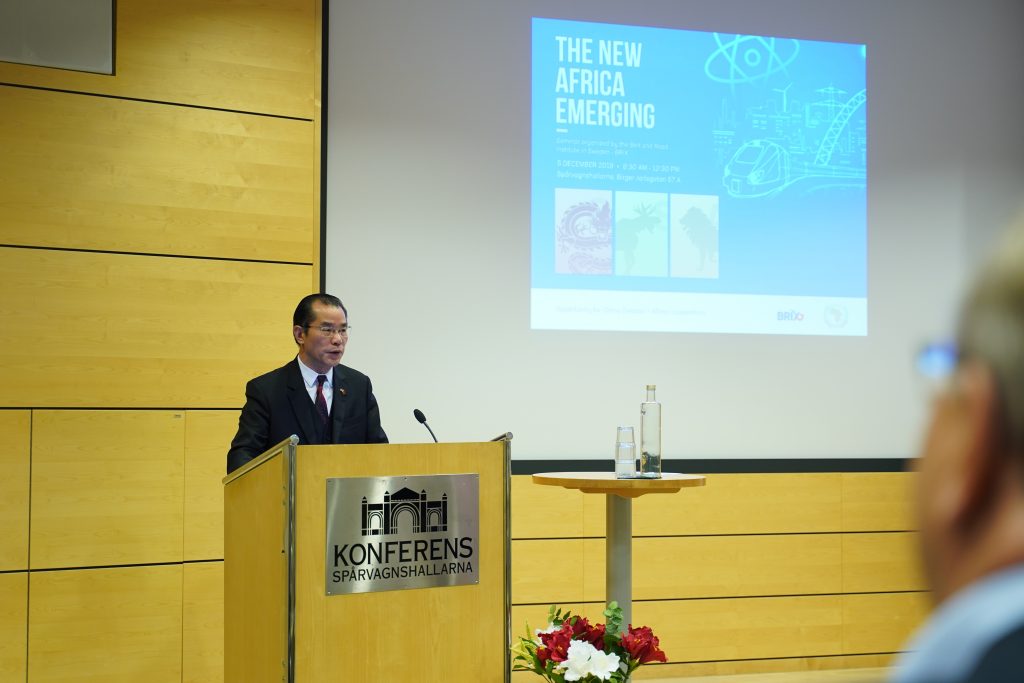
Kinas ambassadör Gui Congyou höll huvudtalet på seminariet och berättade om det omfattande samarbetet som utvecklats mellan Kina och Afrika inom ramen för BRI. Han hänvisade till toppmötet i september 2018 för Kina-Afrika Samarbetsforum (FOCAC) i Peking och resultatet av toppmötet. ”Kina-Afrikas gemensamma byggande av BRI har påskyndats, och 40 afrikanska länder och AU-kommissionen har undertecknat samarbetsdokument med Kina om initiativet. Vi har formulerat planer för enskilda afrikanska länder baserad på Afrikas faktiska behov. Vi kommer att genomföra totalt mer än 880 Kina-Afrika samarbetsprojekt under de kommande tre åren.” Vad gäller det kinesisk-svenska perspektivet sade ambassadören Gui: ”Den svenska regeringen har många bistånd- och samarbetsprojekt för Afrika, och många stora svenska företag som Volvo, Scania och ABB har omfattande verksamhet i Afrika. Kina är villigt att arbeta med andra länder i världen, inklusive Sverige, för att komplettera varandras styrkor och ge positiva bidrag till fred, stabilitet och utveckling i Afrika. ”
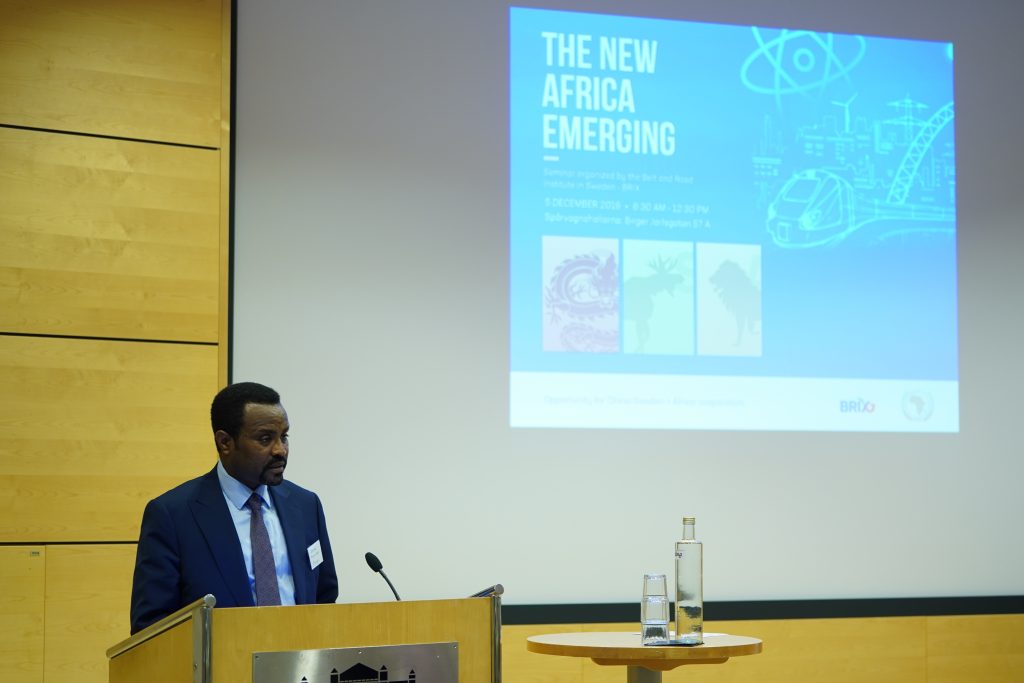
Etiopien Ambassadör Deriba Kuma visade hur Afrikas planer för modernisering och industrialisering håller på att förverkligas. Etiopien är på god väg att förverkliga sina planer att till 2025 bli ett medelinkomstland som övergår från ett jordbruksbaserat samhälle till ett industribaserat, berättade ambassadör Kuma. Det var en föraning av vad som vi kommer att höra mer om när Etiopiens premiärminister nästa vecka skall ta emot Nobels Fredspris för sitt fredsarbete med alla länder på Afrikas Horn.

Sydafrikas beskickningschef Duncan Sebefelo talade om de betydande summor som Kina investerat i projekt i hans land. Efter årsskiftet blir Sydafrika ordförandeland för AU och han redogjorde för de filosofiska principer som AU har för de ekonomiska samarbetsprojekten.
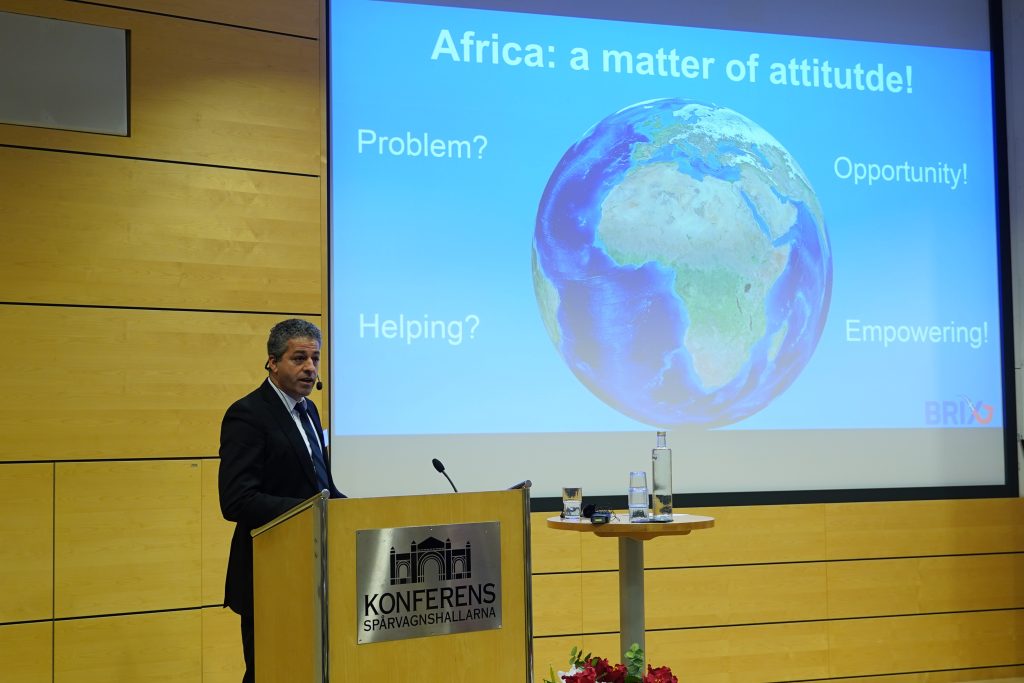
Styrelsemedlemmen i BRIX Hussein Askary visade med bilder och kartor hur BRI bidragit till att börja förverkliga Afrikas projektplaner och berättade om den optimism som de skapat. Han betonade att BRIX finns inte för att heja på Kina eller Afrika. De kan sköta sitt. BRIX målsättning är Sverige ska vara med detta samarbete och inte missa tåget mot ekonomiskt välstånd och stabilitet i världen.

Askary berättade om den otroliga skillnaden mellan den europeiska och svenska attityden mot Afrika som är en återstod av den gamla koloniala mentaliteten och hur Kina betraktade Afrika som en mycket viktig partner. Problemet stort sett ligger i den misslyckade bistånds mentaliteten som dominerar EU:s agerande. Askary argumenterade att det kinesiska sättet att tillförse Afrika med ”verktygen” för utvecklingen som infrastruktur, industrialisering och teknologiöverföring är den mest lämpliga för Sverige och Europa att följa. Under rubriken ”SDG2030 akrobatik” (FN målen för hållbar utveckling) berättade han om hur Sverige och EU gör om FN:s utvecklingsagenda 2030, så att de viktigaste målen att ta itu med (fattigdom, hälsa, utbildning, vatten, energi, industrialisering osv.) placeras längst ned, medan klimatfrågan, som är nr 13, sätts högst upp. Avslutningsvis, förklarade han att med hjälp av Kina och BRI Afrika är på god väg att förverkliga sitt Agenda 2063, men frågade om hur snabbare denna agenda kan förverkligas om Sverige och EU bidrar till den?

Den norske tidigare stortingsledamoten Thore Vestby, och styrelsemedlem i Ichi Foundation, talade om det norska samarbetet med Afrika, som i hög grad varit inskränkt till bistånd genom NORAD. Men en ny inriktning på samarbetet har upprättats 2012 genom NABA-Norwegian African Business Association av ledande norska företag (norwegianafrican.no). Även Norge behöver upprätta samarbete med BRI, sa Vestby, kommer att startas. Han kongratulerade den Svenska BRIX för sitt framgångsrika arbete och tillkännagav att ett ”BRIX Norge” ska startas i det nya året.

BRIX-medlemmen och konsulten Lars Aspling berättade i sin presentation att det är nu 16 av 28 EU-länder som har ingått avtal (MOU) med Kina för att samarbeta med BRI. Det visar att ett sådant avtal, eller ett positivt yttrande om BRI, som Frankrike och Finland uttalat, inte nödvändigt behöver splittra EU. Även om svenska regeringen med sitt förslag till ny Kinastrategi håller sig till EU:s politik, så är det således inga legala frågor som hindrar Sverige utan enbart en brist på politisk vilja, fastslog han.

Aspling annonserade att den nya rapporten som BRIX just publicerat om vad BRI handlar om och vikten att Sverige samarbetar med BRI finns nu att ladda ner från BRIX hemsida.

Seminariets moderator Stephen Brawer ledde den avslutande paneldebatten där talarna fick svara på publikens många frågor och kommentarer.

BRIX ordförande Ulf Sandmark kommenterade diskussionen om korruption i Afrika med att påpeka att BRI har en inriktning på reala investeringar som inte överlämnas som penningsummor likt Västvärldens investeringar. BRI-investeringarna levereras som cement, stål, maskiner och insatsprodukter till projekten. ”Cement är svårt att sätta in på ett bankkonto, vilket gör att BRI har en inneboende mekanism för att hindra korruption”, sa han och uttryckte samtidigt sin glädje över att så många gamla och nya vänner deltagit i seminariet.
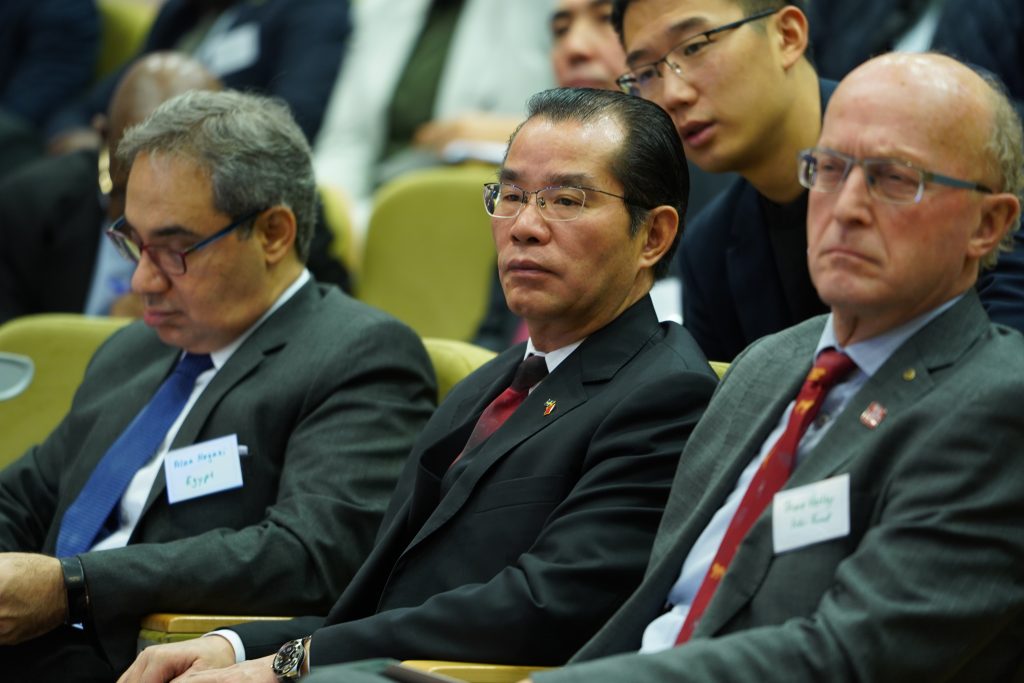
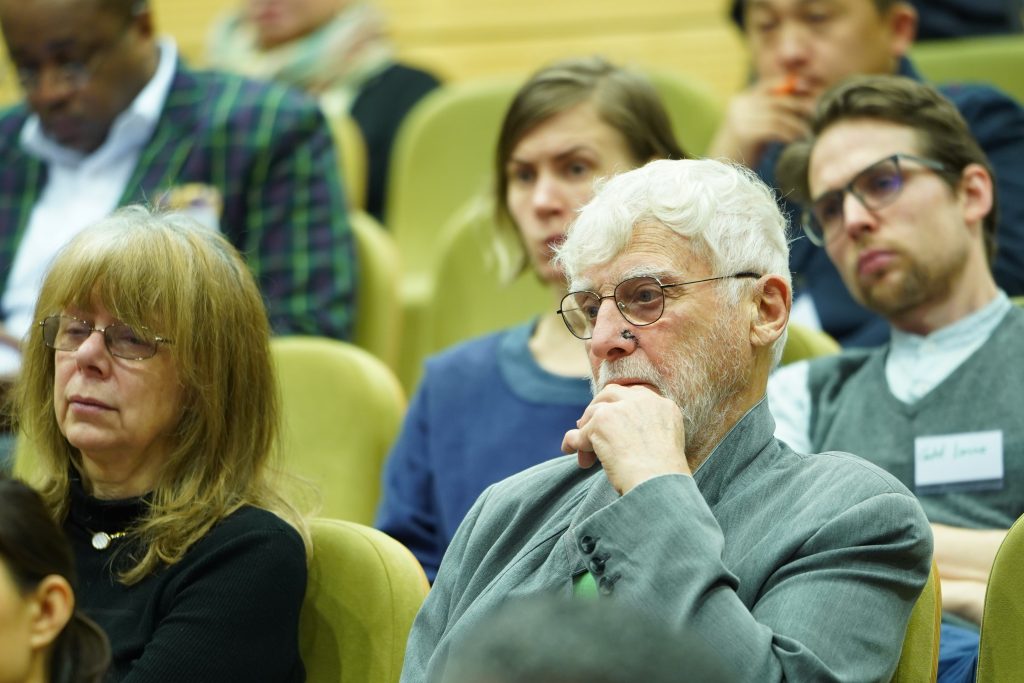
Moderator Stephen Brawer betonade igen behovet av att presentera faktabaserad information och kunskap om BRI, och gjorde en poäng av att tacka insatsen som TV100 och Fredrik Vargas gör genom deras viktiga arbete att förmedla i sitt reportage vad har presenterats i seminariet.
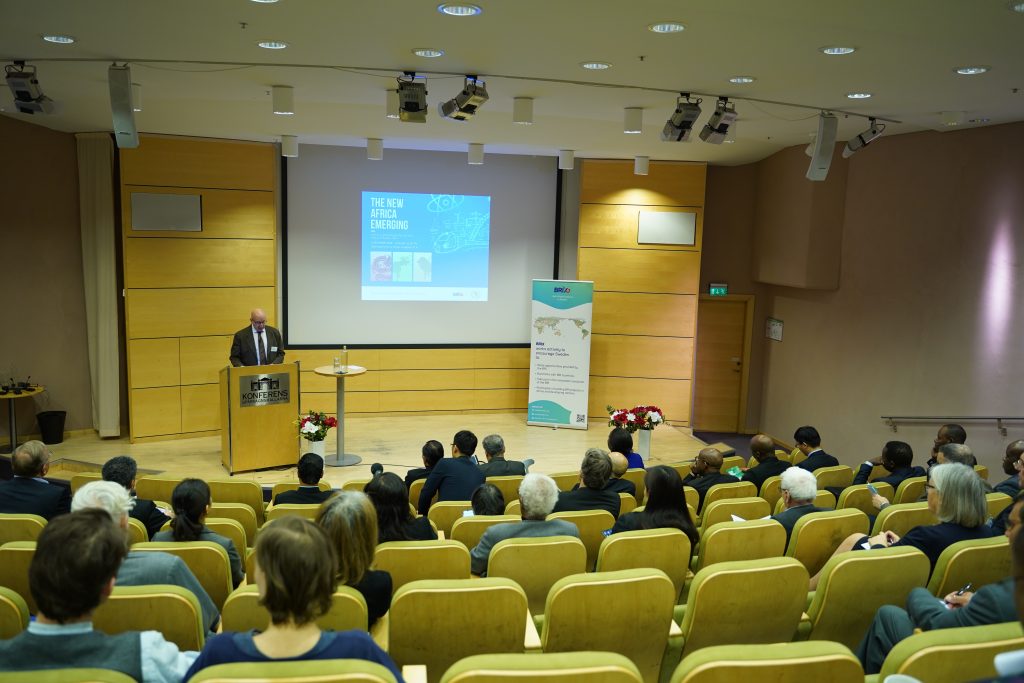
19 diplomater från 15 länder (flest från Afrika) deltog i en publik på sammanlagt 60 personer. Svenska media representerades av den fristående TV-kanalen TV100 som dokumenterade hela seminariet, inklusive paneldebatten där den kinesiska ambassadören gjorde sin kommentar till de svensk-kinesiska relationerna.
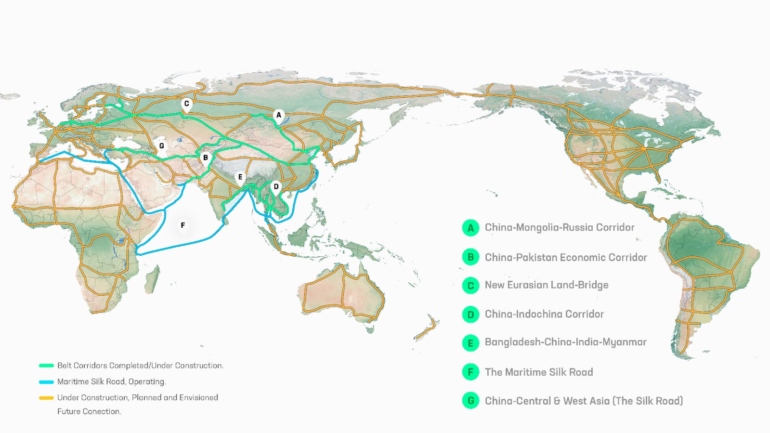
Foto Xuechao, Text Brix
Video 3: The Second Belt and Road Forum in Stockholm
By Xuefei Chen Axelsson
Panel discussion at the 2nd Belt and Road Forum in Stockholm. Filmed by Xuefei Chen Axelsson.
Why has Hubei province great to do with Belt and Road Initiative?
By Xuefei Chen Axelsson
Today three women vice mayors from Hubei province talked about Belt and Road Initiative. One audience asked me, nowadays everybody talks about belt and road, even Hubei province talk about Belt and Road. I can understand when you talked about Xinjiang, it has relations with Belt and Road Initiative, but Hubei province, what relations it has with Belt and Road?
I said it has great to do with BRI. Why? Because Hubei province is in central China and called center of China. Many goods from Yiwu, Shanghai and other eastern part of China have to go through Wuhan to go westward to Xinjiang and then to Europe.
Xiangyang, Jingzhou was communication hub in ancient times. Think of the Three Kingdoms period, when Zhuge Liang from Sichuan met Zhou Yu from Zhejiang, they met in Jingzhou.
In terms of infrastructure or transportation, Wuhan has great to do with Belt and Road Initiative, no matter it is about good in land or good to be transported through the sea.
Commentary:EU misunderstand China’s Belt and Road Initiative
By Xuefei Chen Axelsson
STOCKHOLM, April 25(Greenpost)– Reading South China Morning Post, it says 27 EU countries Ambassadors signed a paper against China’s Belt and Road Initiative.
This can be seen as an initial reaction against the Belt and Road Initiative when many people keep on asking what is China’s purpose? Why do they do this? What benefit they can gain? What benefit can we gain?
It is understandable that the western idea is always basing on the utilitarian foundation. If you do something, it must be for your own benefit, otherwise you will not do it.
But my understanding of the Belt and Road Initiative is that it started from the ancient silk road routes through central Asia. President Xi Jinping proposed this idea in Alma Ata. It is a strategic thought to meet the development demand.
China had been a poor country for almost a hundred years and the main reason is that China didn’t have the good infrastructure. The road was poor and transportation was bad. So China’s experience is that to become rich, you must have good roads. (Yao Xiang Fu, Xian Xiu Lu). These kinds of projects are usually big ones, thus it needs state-owned companies to do it because they have high standards engineering capacity.
In China private sector developed rapidly, but a lot of problems also started from private companies. It takes time to regulate.
After 40 years of development, China becomes stronger, at least with another two years it aims to wipe out the poverty completely. This goal should be praised because with the completion of this goal, it is expected that China’s human rights situation will be substantially improved.
I understand the western solidarity type of wind against China starting from China’s changing of the constitution and ensuring Xi’s presidency forever. Many people understood this change as a guarantee for Xi’s presidency for life long. But my understanding is that Xi wishes to have a collection of power so that he can carry out his plans more effectively. But it doesn’t mean he will be president forever. No one guarantees that after three terms or after he fulfilled the goal of building China into a modern country with even a very basic demand of having blue skies in Beijing, he will step down. Or he will lead an orderly expended scale democratic election. Through this year’s NPC congress, I think Xi is implementing an orderly and transparent voting procedure. And his presidency was elected with formal voting procedure.
I am sure China’s intention is not to impose China’s influence to anybody. China is a peace loving country. Chinese people work very hard just to live a better life. When they have good skills and building capacity, they like to share this with other countries.
It happens exactly like SIPRI’s expert analysed that it is those countries that needs China’s capacity contracted with China such as Greece and Spain. In the early stage such as 2005, or before, China also imported technologies or engineering in waste burning from Spain.
That some EU countries worry about China is understandable, but unnecessary. On the one hand, they worry if one Chinese will reach a European’s living standard, then China has 1.3 billion people, how many earth we should have to feed such a demand? On the other hand, they worry if you build a port for them, what will be the future? We have no secret from you any more. How can we maintain our independence?
These worries seem to be real worry because when the western powers went to China, China became semi colonised. When the western power went to Africa, most African countries were colonised. Thinking from their own experience, they feel very worried.
But China’s Belt and Road initiative is not to take from you, it is to build for you to use. The principle is to negotiate first and then you build together and then you share the benefit in the end. Because you put money in the bank and now you get the bank loan and you got infrastructure. Improved infrastructure will improve business. With booming business, you will get money or benefit.
China can only provide help to those who really need help. It is very difficult for Nordic countries to think’ how can we need help from China’? It is always we who provide help to others. Indeed, China still has a lot to learn from the Nordic and western European countries. But for infrastructure construction such as fast train track and train, China is indeed very advanced. If Nordic region can coordinate and build fast train, travel time on average will be shortened by half, it will substantially improve the business environment and well-being of the people. It will promote tourism substantially. Business meetings can increase substantially. It will only make business even more efficient.
Some people especially some so-called experts and new media persons recently launched a lot of negative coverage about China in order to win the readers eye balls. In the long run, it will prove that China is indeed the main force in maintaining the world peace and driving the world development. China never throws out problems even though they have problems inside China.
This is a big difference between China and America or Britain. When America has election or other problems, they will put their finger on China or other countries and then when they succeed they become normal again.
This kind of drama doesn’t happen in China. China is so large that it can saturate its own problems. It will not hit others in order to win its own election because they can balance the situation in China according to the real situation. This is because the Communist party’s goal is to serve the people and make the country a good land to live and people enjoy a better life.
This has happened already in Beijing, Shanghai and most of the eastern regions. Last month when I came back from Beijing, in Helsinki transfer, I met a Swedish lady who visited Shanghai and visited all the banks in Shanghai, she said she felt people in Shanghai really enjoy a good life. They eat well, wear well and they also walk beautifully, namely not always in a hurry.
Those who broke the Chinese law went to America or other countries and then fiercely curse China. It is not commended.
Back to Belt and Road Initiative, it is indeed an initiative, it is a good -will suggestion or proposal for all to sit around the table to discuss. It is not an imperative for everyone to obey. China thinks when people get better life, they will not fight each other any more. This is China’s experience. It is a good will and many experts for example Schillers Institute’s Helga La Rues highly commended belt and road initiative because she said this is so far the best available way to avoid war or conflict.
Belt and Road is also a long term initiative. It will be implemented only in the countries or places where needed. Those who don’t need it, it is absolutely ok if you are against it or disagree because it doesn’t suit your situation. So let’s forget it.
Belt and Road Initiative is a good idea for Asian, Central Asian, Africa, Latin America and maybe Northeast Asia. It is indeed difficult for Nordic Countries which are so rich, so well developed and almost world model countries to fit in.
However, I think it is still ok because one of the initiative is to promote people to people communication and exchange, in that sense, it also fits.
I suggest that Nordic countries and western European countries and China talk with each other in fixing the world peace and development, but not condemn each other. I read the SCMP article saying the European Ambassadors condemn the Belt and Road Initiative, it is a completely misunderstanding of the purpose of the initiative.
Of course there is still big room for China to improve. That is to invest more in education and research, invest more in culture and domestic development. There are still problems in rural China where not just poverty alleviation is needed, all the cultural and education and other wellbeing facilities are needed.
If outside world don’t need China, let us build every inch of China a beautiful China. Blue sky and clean water and soil is just fundamental and basic requirements.
This is only the writer’s own opinion.
Xuefei Chen Axelsson is a senior editor and correspondent freelancing for different media. She studied World Politics, Economics and International Relations. She also studied leadership for Sustainable Development in London and got a Master degree in it. She has long been journalist covering various development conferences and practices by the United Nations.
Belt And Road Initiative: EU Strategic Interests In Asia
Insights from Richard Ghiasy.
On a strategic level, explain the EU’s perspective toward China’s Belt and Road Initiative (BRI).
Frankly, there is no unified EU perspective on the BRI – at least yet. Strategic responses to the initiative are still being pondered over. Partially, this has to do with more urgent priorities, mainly Brexit, the Russian resurgence, concerns over populism, the migration crisis, and now the Catalonian crisis. But, it also has to do with the BRI itself ̶ it is perceived as an insufficiently articulated concept. Subsequently they [EU members] find it difficult to come up with adequate strategic responses.
Enjoying this article? Click here to subscribe for full access. Just $5 a month.At the individual EU member state level, however, a large number of European members, mostly in the south, center, and east have already warmly embraced the initiative and have commenced cooperation. Evidently, this dichotomy in perceptiveness does not aid strategic decision-making processes in Brussels. One such example is the 16+1 framework. It is a cooperation framework of 16 Eastern and Central European states plus China, not all of which are EU members, that has resulted in bitterness in Brussels ̶ they see the framework undermining EU unity. It is evident that the level of interest shown by (too) many EU states in the BRI will compel the EU to come up with strategic policy decisions on BRI engagement.
Which individual European countries are receptive toward involvement in the BRI and why?
Countries that have infrastructure deficits, domestic and (sub-)regional connectivity deficits, or pressing unemployment and economic growth challenges have typically been the most welcoming ̶ this includes Greece, Spain, Italy, Serbia, Portugal, and Hungary. These countries have difficulty securing the financial means for large infrastructure projects domestically and through existing multilateral finance mechanisms, making them very receptive toward BRI involvement.
England has also expressed strong interest, partially driven by anxiety over the economic impact of Brexit, but also over worries of how the BRI may impact global finance over time. The Nordic community has shown little interest so far, partially due to the fact that they are economically developed, well connected, and “tucked away” in a corner of Europe that sees, comparatively, little transit activity. Germany and The Netherlands have shown interest and have commenced engagement, yet at the same time they are evaluating the BRI’s long-term strategic implications at the national and EU level. These are mostly related to economic security impacts, but also impacts on (sub)national and regional security among participating states.
What is the difference between the EU-China Connectivity Platform and the BRI?
The BRI is an immensely ambitious global connectivity and development vision that will – probably – run for decades. It already has over 65 countries on board that have either shown strong interest or are already engaged. In contrast, the EU-China Connectivity Platform is a policy forum that aims to create synergies between EU policies/projects and the BRI – mostly as they relate to cooperation on infrastructure, including financing, interoperability, and logistics. Therefore, the EU-China Connectivity Platform is, in comparison, very modest in size and focuses on projects between the two countries. At this stage, no projects with or in third party countries have been conducted.
What are the potential geostrategic consequences of no EU involvement in BRI?
No involvement would send a strong message to China and participating states that it [the EU] is not interested in joint economic development initiatives with China in Eurasia. Since the EU and China are the two largest economic entities in Eurasia, it is essential that they steward the continent’s economic development agenda. In addition, since individual EU member states are already participating in the initiative, no official EU involvement would create an awkward dynamic. In addition, it is important that the EU engages and helps to steward the initiative so that its own diplomatic, economic, and security interests are not threatened. No involvement would mean that China will, likely, develop larger sway in the continent on anything from investment standards, to supply chains, to trade routes, to diplomacy. This scenario may seriously impact the EU’s economic and security interests.
Explain how EU engagement in BRI might further its strategic interests in Asia.
Some of the challenges that the EU faces, including the migration crisis and terrorism, stem – partially – from Asia. As the EU goes through a historically unique, yet long and fragile process of integration it is pivotal that its neighbors and neighbors’ neighbors are stable and are developing sustainable economies. At the moment however, the EU is facing security challenges from essentially all directions except its north.
Asia, as the world’s most populous and economically largest continent is pivotal to the world economy, and thus the EU’s economic and security interests. A stable Eurasia requires closer cooperation between its largest actors, the EU, China, India, Japan, the Association of Southeast Asian Nations (ASEAN), and Russia. Distrust and competing visions for the supercontinent between these six will only result in friction and greater potential for (proxy) conflict.
It is quite safe to state that in terms of influence the EU has been losing ground in East, Central, and South Asia. The BRI is a platform on which it could possibly regain some of that influence, for instance by assisting participating states with the “softer side” of connectivity: national development agendas, business reform and socioeconomic policies. There are plenty countries in Asia in which there are concerns over overreliance on China through the BRI – the EU is an economic behemoth that could function as a counterweight.
Source: the Diplomat website.
2018 “Belt and Road” Nordic Spring Peace and Culture Festival held on Stockholm Cultural Night
By Xuefei Chen Axelsson
STOCKHOLM, April. 21(Greenpost) – 2018 Belt and Road Nordic Spring Peace and Cultural Festival and Li Li’s Chinese Paintings Exhibition have been successfully held as a part of Stockholm Cultural Night which was a cooperation with over 100 museums, galleries, opera houses and other cultural locations to open free to the public from 18:00-24:00 on April 21.
The festival was held by China-Europe Cultural Association, Professional Foreign journalist Association or PROFOCA in cooperation with Chinese Teachers Association in Sweden.
Chinese Ambassador to Sweden Gui Congyou spoke highly about the festival.
“The opening of the Stockholm Cultural Night and Belt and Road International Peace and Cultural Festival is of great significance in such a period of time. China and Sweden have enjoyed very good relations and the bilateral relations are on a new historical starting point with great potential to tap. With Chinese style in Stockholm Cultural Night, it will make the night even more beautiful and be conducive to Sino-Swedish relations. ” said Ambassador Gui.
“China proposes Belt and Road initiative based on the principle of discussing together, jointly building and sharing the result to improve relations with various countries and expand cooperation with various countries. People to people relation is one of the five parts of belt and road initiative and cultural exchange is an important way to communicate with each other. ” he said.
“I understand that tonight there will be a big banquet of culture including instrument performance, dancing and singing, and Chinese woman artist Li Li’s painting and the Chinese film Romance on the Lushan Mountain, I hope you all have a good evening. ” said Ambassador Gui.
China-Europe Cultural Association is a non-political , non-religious organization consisting 75% of Chinese women in Sweden aiming at enhancing Chinese culture and enrich their life in Sweden and serving as a bridge between China and Sweden.
Ambassador Gui said he also welcomed journalists from PROFOCA and other foreign friends to visit China. Over the past 40 years of reform and opening up, China has experienced great changes. Since the 18th Party’s Congress, China has entered a new era. Now China enjoys stable social and political environment and high quality economic development. Nearly 1.3 billion people have shrugged off poverty and the rest 50 million will eradicate their poverty situation by 2020. In the International arena, China plays an important role in maintaining world peace, security and stability. It is a main force for world harmony. I believe the journalists can find some good news from China.
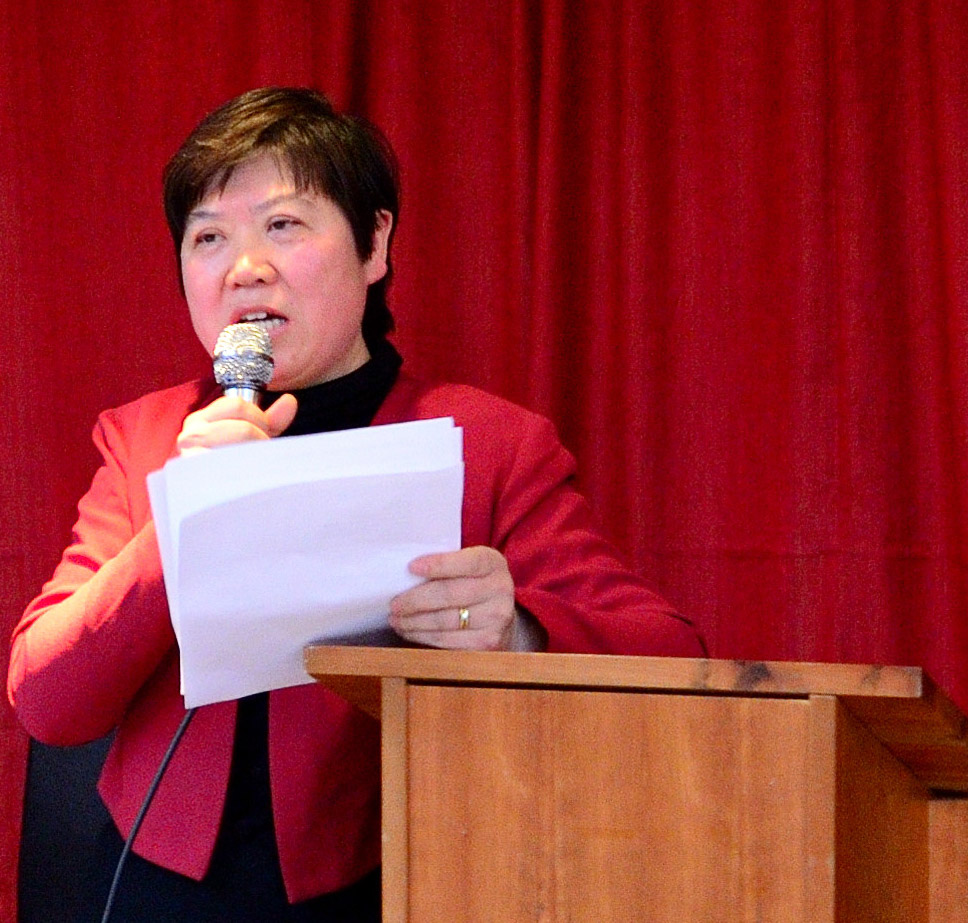 Xuefei Chen Axelsson, President of China-Europe Cultural Association and PROFOCA explained why they held this event.
Xuefei Chen Axelsson, President of China-Europe Cultural Association and PROFOCA explained why they held this event.
She said to be part of the Stockholm Cultural Night made her proud to be able to contribute to the cultural life in Stockholm with some Chinese flavour. This is also a sign that Sweden is open and international.
“We hold 2018 Belt and Road Nordic Spring Peace and Culture Festival in order to guard world peace. Belt and Road Initiative proposed by Chinese President Xi Jinping is not to impose Chinese influence by purpose, but treat it as a way to promote peace and development. Sweden was the destination of the maritime silk road taking the boat Gothenburg as an example. We like to promote cultural exchanges between China and Sweden and China and Europe. ” said Chen Axelsson.
“The third is to celebrate the exhibition of Beijing women artist Li Li. Although it is a small scale of 30 small pieces of paintings, it is profound and a real action of bilateral cultural exchange. ” she said.
As a journalist herself, Chen Axelsson said while China insists on peace and development, some other parts of the world are not very peaceful. She held that violence and conflict are the biggest enemy of sustainable development. We condemn all kinds of violence. Violence and conflict are a result of illiteracy. Belt and Road initiative aims to avoid violence and conflict. Through peace and development, people’s living standards can be improved. Without peace, there will be no development. We must value the peaceful environment. We believe that cultural exchange is conducive to understanding between different people and countries, and further avoid conflict and maintain world peace and stability.
Last year, we held the first Nordic Spring International Cultural Festival, we also held other cultural activities such as holding lectures and listening to Chinese actor Pu Chunxin’s presentation held in Chinese Cultural Center . By learning Chinese culture, we feel more peaceful and life is more joyful. By going to China and reporting the Party Congress, I saw China’s peaceful transition to a new era aiming at wiping out poverty completely and building a modern Chinese society. We shall continue to work hard to serve the members and contribute to Sino-Swedish good relations.
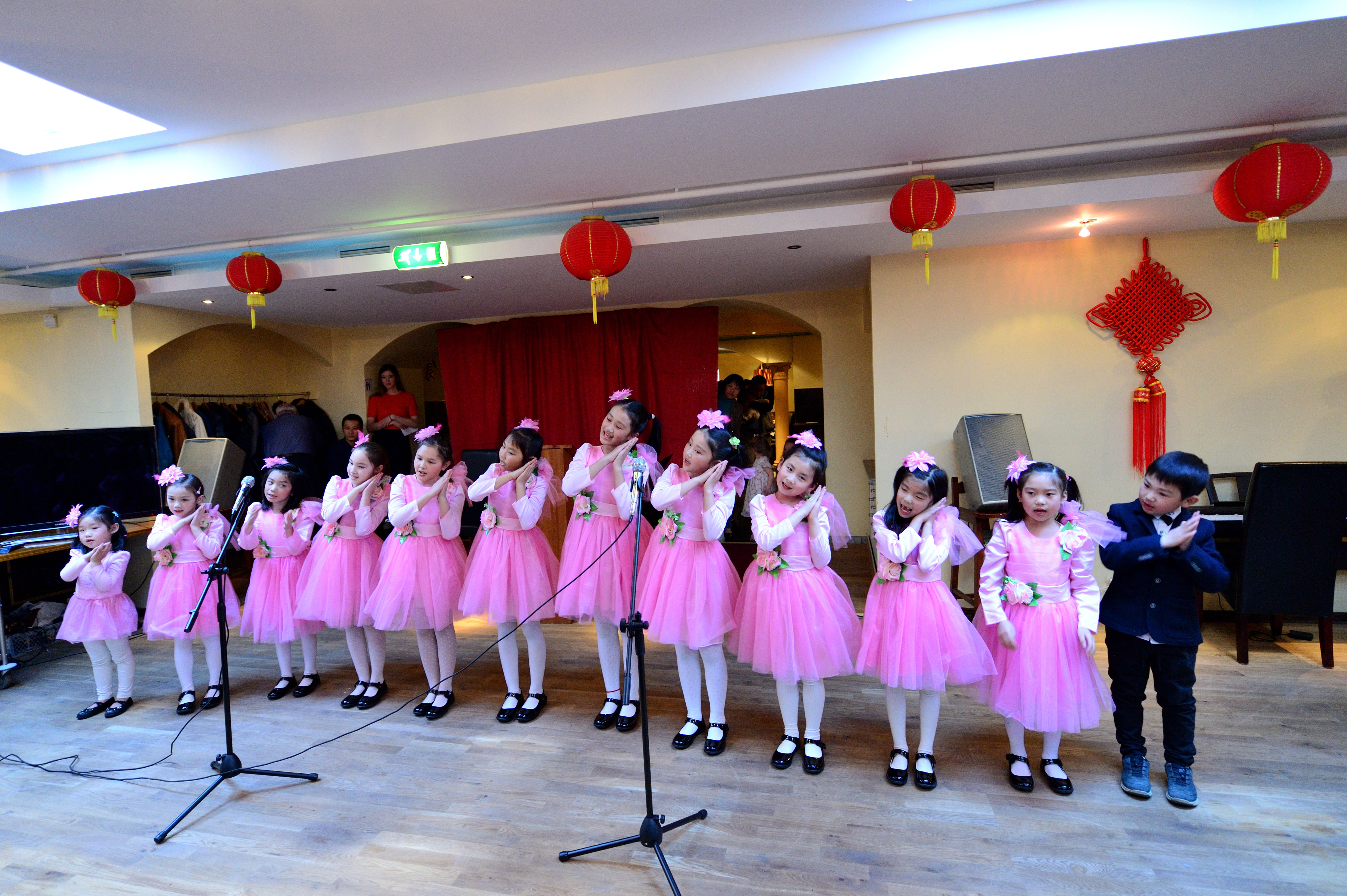 The performances began with Swedish Chinese Children’s choir’s singing.
The performances began with Swedish Chinese Children’s choir’s singing.
Dong Jiajun’s Hulusi performance is very beautiful. The music is really very good for ear. Hulusi is an instrument from China’s Yunnan Province, Southwest China.
He Ruiyu sang the song Rolling up the Bamboo Curtain beautifully.
Chinese women choir also sang very well. Some of them are the mothers of the children’s choir .
Natali Dansstudio’s girls brought modern dance.
Tang Shiyu sang a beautiful Chinese song called the size of the heaven.
Li Zhanchun sang Tianbian, Little Populars Tree and I love you China reminding us the beautiful China of the 1980s.
Ric Wasserman sang Bob Dylan’s song Blowing in the wind.
Li Jia sang a song about Chinese River Liuyanghe.
Zhai Yijia played erhu horse racing, a master piece by Erhu.
Hao Jingxia sang the classic Kunqu Dream in the Garden looking like Peking opera.
Uppsala Confucius Class pupils performed a singing and dancing program attracting the attention of other children.
Xuefei Chen Axelsson sang an inner Mongolian song Take me to the Prairie.
Finally Ambassador Gui and all the artists and guests sang together My Motherland led by Li Jia.
Ric Wasserman also sang many other blues style songs with American flavour making the festival international.
Beijing woman artist Li Li’s paintings stand by the wall around the hall which hosts more than 200 people.
The programs attracts Swedish, Russians, Americans and Chinese. The Chinese food is also part of Chinese culture.
Finally a film Romance on Lushan Mountain was played to end the cultural night at midnight.
Also present at the cultural night were Dou Chunxiang, Education Consular, Zhang Lei, Consular department director, Consular Li Xiaojie and Luo Jinsheng. Ye Peiqun, Execultive President of Sveriges Kinesiska Förbund, Duan Maoli, Anhui Association of Science and Commerce in Sweden, Jack Yu, President of Sino-Swedish Life Science Association, Yin Chang, Kinesiska Riksförbundet I Sverige, Sun Kai, President of Chinese Teachers Association in Sweden, Zhao Lijie, Vice President of China-Europe Cultural Association, Zhouzheng, Secretary of Europe-Asia Cultural Promotion Association, Yang Chungui, President of Acupuncture Science Association Sweden and Zhao Lijie, Vice President of China-Europe Cultural Association.
The festival was hosted by Åsa and Arthur Lou Guofeng.
Text/Xuefei Chen Axelsson, Photo/Wu Ming.
How to understand Xi Jinping’s Belt and Road Initiative(BRI)?
By Xuefei Chen Axelsson
STOCKHOLM, March 28(Greenpost)– A lot of people simply understands Xi Jinping’s Belt and Road Initiative as that China has over capacity in infrastructure construction, so China wants to sell out their over capacity.
Yes, without any extra capacity, one cannot do anything for export. But there is a deeper intention in the infrastructure construction.
The world faces a lot of challenges due to the backward of the productivity. The backward productivity was due to poor infrastructure. Over 40 years development in China, we found roads and transport are very important for development.
In 2000, when I came back from Zimbabwe, I went back via Paris and and I took Paris metro. At that time I thought if only Beijing had such kind of metro that can direct to many places! At that time Beijing only had one line and the round line, only two lines. By 2008, Beijing has many subway lines. Now it has 14 lines. You can go anywhere by subways.
Also you can drive anywhere by car because the road has linked the city and the countryside.
But this development was not seen in many countries such as central Asia or Africa. With Chinese efforts a lot of places are linked with roads. With good roads, people are easy to do business.
China has a slogan, Yao Xiang Fu, Xian Xiu Lu. If you like to be rich, you should first build roads. Roads link people and with people’s link, you can build a market and demand.
China holds that basic infrastructure can help development. Then Belt and Road Initiative is not just limited to infrastructure construction. It can be education, it can be culture, it can be medicare and innovation. As long as any idea that is conducive to development and improving people’s living standards, it will be good.
Ancient Chinese people move from China to Europe via land silk road and sea silk road. The reason it is called silk road is that it used to transport silk, porslin and tea to Europe from China. But the road was not very good. Now China likes to develop together with other countries to build good road and other things.
People likes to ask why do you do that? What is your purpose? What kind of profit can you get? If you really dig up that, one can say that once you have the infrastructure, one can trade. But a lot of times, people just think as long as we can do something together, it will be good. As long as there is demand, we like to meet it.
China is a great country. That has a big capacity of helping each other. In stead of launching a war, China likes to construct and develop with other countries. Chinese people has such a mindset that we human being should help each other and joint hands to deal with climate issues and other challenges mankind face.
So I think belt and road initiative can be any subject and can be along the silk road, and can be not along the silk road.
Top story: China-Sweden 2017 The Belt and Road Acupuncture-Moxibustion and Chinese Medicine Forum held in Stockholm
By Xuefei Chen Axelsson
STOCKHOLM, Nov. 25 (Greenpost) — China-Sweden 2017 The Belt and Road Acupuncture-Moxibustion and Chinese Medicine Forum was held in Stockholm on Saturday. Over 100 Chinese medicine and Acupuncuture-Moxibustion experts and practitioners participated in the forum.
Gui Congyou, Chinese Ambassador to Sweden spoke at the opening ceremony. Photo by Lyu Cheng.
Gui said Chinese President Xi Jinping has pointed out in his 19th CPC National Congress report that China should insist on paying attention to both Chinese and western medicine, carrying forward Chinese Medicine. Xi stressed that people should take Belt and Road Initiative as a key starting point to introduce western expertise to China and go out to discuss further cooperation with the west, consolidating innovation capability and opening up for cooperation to form an all dimension opening up pattern along both land and sea routes.
Gui said Chinese Medicine is one of the finest parts of Chinese culture and an important part of exchanges between China and countries along Belt and Road Initiative routes. It is conducive to communicating with the people of those countries.
Chinese medicine is an important part of Chinese health cause and can be a good reference for people’s health demand. There is a great potential for Chinese medicine to develop. He hopes that this forum will push forward Sino-Swedish Traditional Chinese Medicine cooperation into a new stage.
Liu Baoyan, Chairman of the World Federation of Acupuncture-Moxibustion Societies said the forum today is particularly important when China actively advocates strengthening China-Nordic cooperation and promoting the development plan of “the Belt and Road“.
Today over 180 countries are beginning to use TCM. In recent years, we have established 16 overseas TCM centers along “the Belt and Road”.
Meanwhile, the Chinese government has also signed agreements about TCM with over 80 countries along “the Belt and Road”. More than 13,000 international students come to China each year to study TCM.
At present, there are over 200,000 acupuncturists working in the countries along “the Belt and Road”, and some of these them are local persons. Meanwhile, more than 30 countries now have hundreds of training institutes, centers, schools and so on.
Acupuncture-Moxibustion is the essence of core of TCM. In 2010, acupuncture-moxibustion was included in the list of representatives of the World Intangible Cultural Heritage and became the intangible cultural heritage of the world. Acupuncture-Moxibustion widely used in various countries, it can be said in more than 180 countries so-called TCM applications is mainly acupuncture-moxibustion. WFAS is an international joint organization for acupuncture-moxibustion in dozens of countries. Over 30 years ago, WFAS has include nearly 200 societies in more than 50 countries. There are already more than 90 societies that are along “the Belt and Road”.
“Last year, we held a conference in Sweden which is “the Belt and Road” promotion for Acupuncture-Moxibustion. We also made some exchanges and trainings on the diagnostic and therapeutic techniques of TCM acupuncture–moxibustion. Now we will confirm that Young’s Acupuncture and TCM (Sweden) Research Institute, as the Swedish “the Belt and Road” TCM Acupuncture-Moxibustion Joint Education Base, works closely with Swedish medical research institutes such as Karolinska Institute. I believe they will make greater contribution at clinical practice, education and scientific research of acupuncture-moxibustion and TCM. The base will also research new medicine and develop new technology by combination of TCM and Western medicine. I believe the base will contribute powerful force for the Swedish people and the world people’s health, ” said Liu.
It is the common vision of all of us to inherit the venerable history and cultural traditions of TCM, to carry forward and improve TCM, and to make benefits to human health. Let us work together, to make greater contribution for the countries along “the Belt and Road” by acupuncture-moxibustion and TCM.
The Forum was presided over by Yang Chungui, Presient of Acupuncture Science Association Sweden .
Hanna Angerud, Chairwoman of Swedish Acupuncture Association talked about promotion of Acupuncture Legislation.
Professor Liao Fulong spoke at the opening ceremony. He marked that Chinese Nobel Winner in Medicine Tu Youyou is a good example of the combination between Chinese and western medicine.
Professor Liu Baoyan, Yang Chungui, President of Acupuncture Science Association Sweden and Dean of Yangs Acupuncture and TCM Institute Sweden and Chinese Ambassador Gui Congyou opens the Belt and Road Joint Education Base on Acupuncture-Moxibustion-Sweden.
Yang Chungui presented certificates to the experts of Yangs Acupuncture & TCM Institute Sweden.
Liu Baoyan present certificates to the experts of Joint Education Base in Sweden.
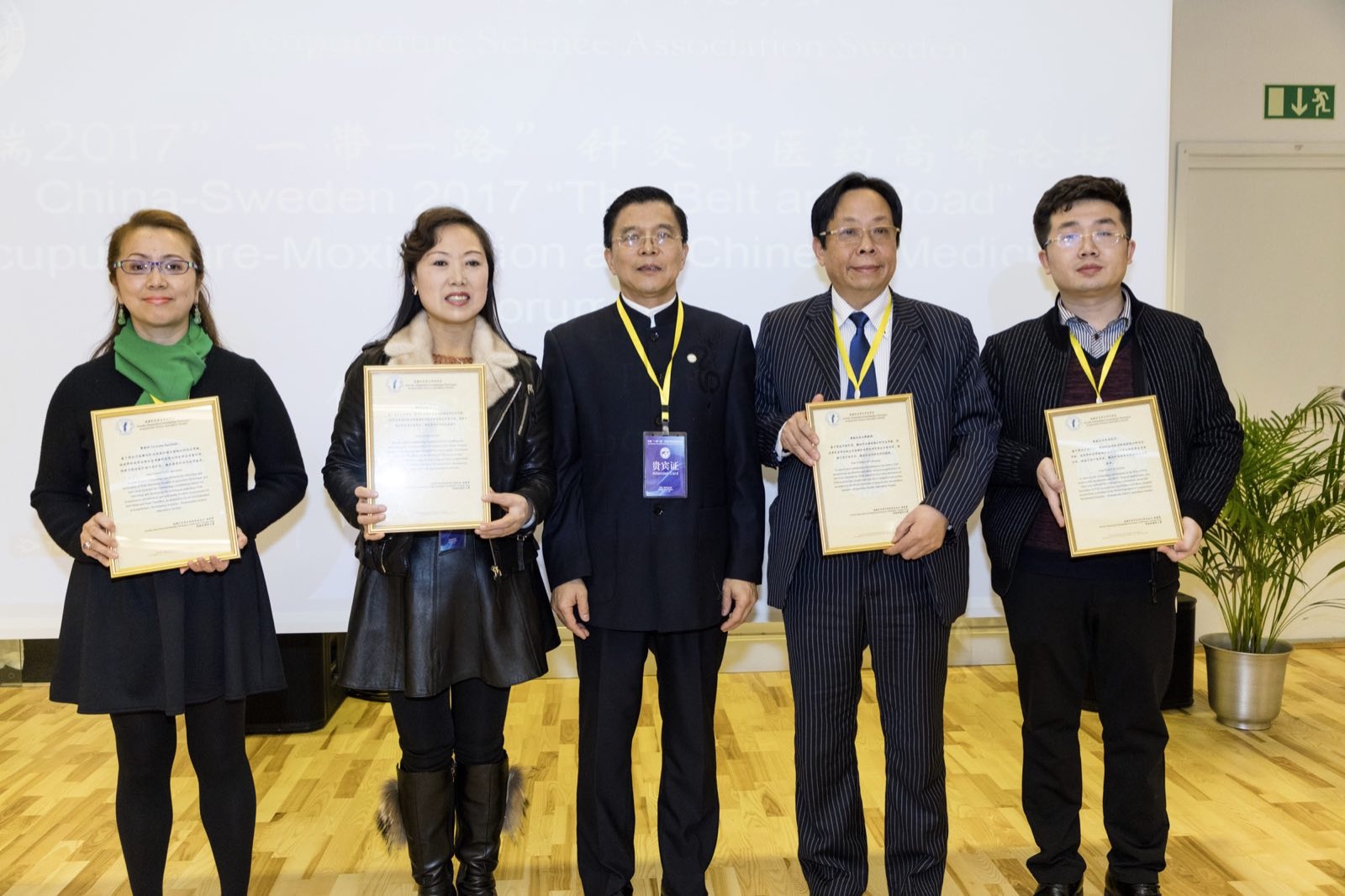 President Yang declared the establishment of the Assessment Board of International Acupuncture Doctor Test.
President Yang declared the establishment of the Assessment Board of International Acupuncture Doctor Test.
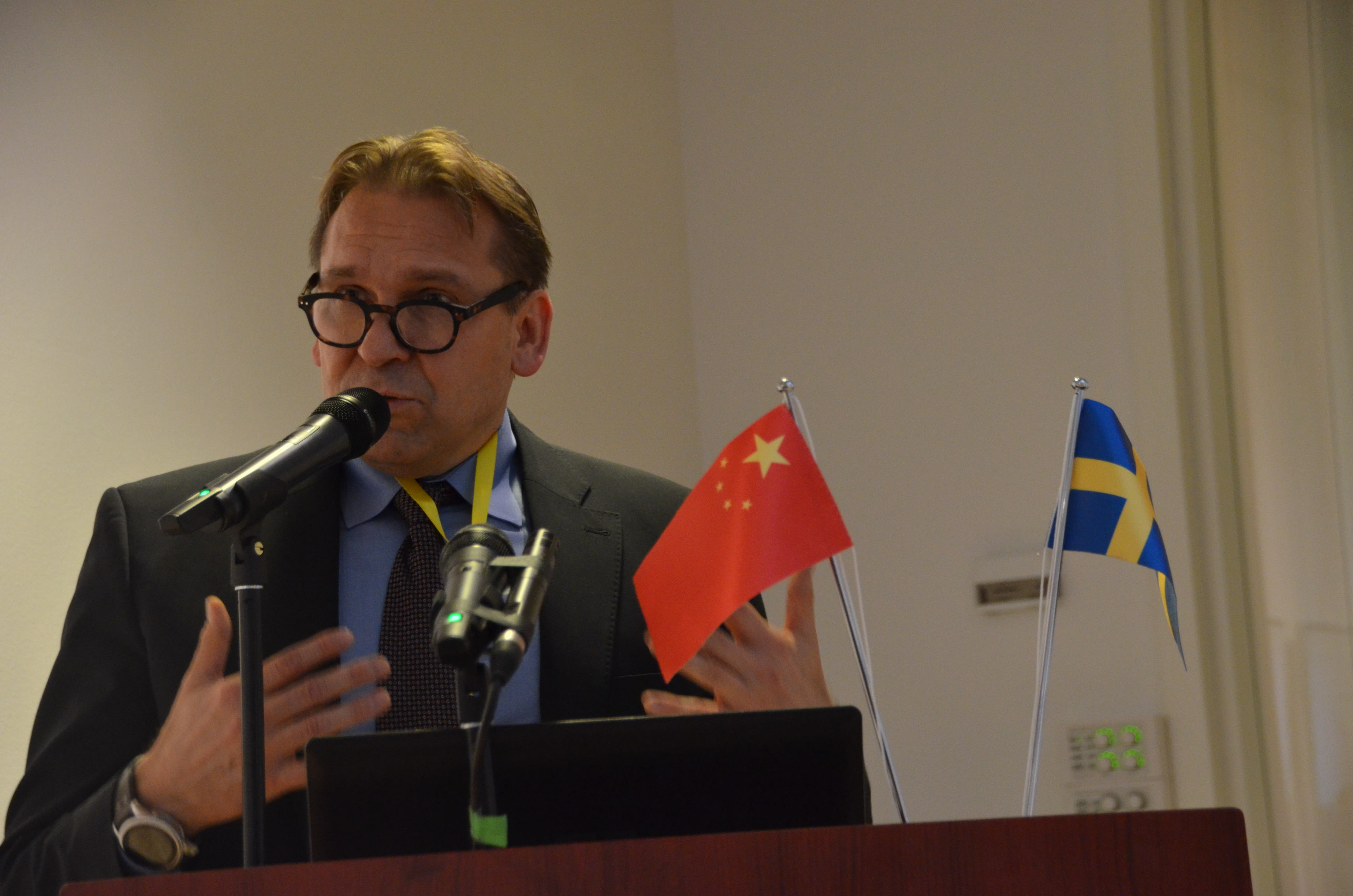 In the afternoon, Gustav Foghammar, Consultant Psychiatrist of Karolinska Hospital talked about etablising a new medical platform of integrated Western & Traditional Chinese Medicine for Treatment of Pain and Fatigue. Foghammar said he knew TCM many years ago when he was sent to participate in a TCM meeting and had access to Chinese Medicine. Since then he even use TCM in his psychiatrist field and he himself often experiences the acupuncture.
In the afternoon, Gustav Foghammar, Consultant Psychiatrist of Karolinska Hospital talked about etablising a new medical platform of integrated Western & Traditional Chinese Medicine for Treatment of Pain and Fatigue. Foghammar said he knew TCM many years ago when he was sent to participate in a TCM meeting and had access to Chinese Medicine. Since then he even use TCM in his psychiatrist field and he himself often experiences the acupuncture.
DoctorZhang Hongxia presented what she is studying about– the Application of Medical Information in Clinic Medicine and Research.
Wang Jingjing presented Acupuncture Treatment on Pain and Psychosomatic Disease.
Professor Liao Fulong presented his discovery in Acupuncture, Chinese Herbal Medicine Investigated from the Angle of Microcirculation and Biomechanopharmacology.
Professor Wu Hanqing presented TCM Triangular Needling Method for Soft Tissue and Bone Disorders.
Professor Wu Hanqing also did treatment for some patients while teaching some young doctors.
TCM Doctor Zhang Dongqing presented his clinic experience of Acupuncture agaisnt irritable Bowel Syndrome in Sweden. TCM Doctor Yang Chungui presented his exploration and practice of Yangs Yi Gong Acupuncture in Chinese and Western Medicine.
Lin Defeng talked about Burning Acupuncture against pain and Li Jian presented his application of modern medicine and TCM on the treatment of knee osteoarthritis.
About 100 TCM doctors, experts and practitioners from China, Sweden, US and other European countries participated in the world-level forum. Han Xiaodong, Counselor of Commerce and Pu Zhengdong, Counselor of Culture from the Chinese Embassy also attended the opening ceremony.
Text/Xuefei Chen Axelsson, Photo/ Li Yanan, Lyu Cheng.
19th National Congress of the Communist Party of China to be held on Oct. 18
By Xuefei Chen Axelsson
STOCKHOLM, Sept. 1(Greenpost)– 19th National Congress of the Communist Party of China will be held on Oct. 18, according to Xinhua News Agency, which has been widely republished.
Chinese President, Party General Secretary and Chairman of the Military Committee of China Xi Jinping will preside over the congress.
It is reported that small scale meeting will start on Oct. 11 already and to announce the formal national congress will be held on Oct. 18th. It is expected that 2300 delegates will attend the national congress which is held every five years.
This is a far-reaching significient meeting for the Chinese nation and the party because it will decide the Chinese leadership for the next five years, map out next five years policy directions and vision for the next five years.
It is also important and aroused wide range attention around the word because many leaders have come to the age of retirement. Then it is expected that there will be bigger shift of personnels in the politburo and the central committee of the CPC.
The oder generation are mostly born in the 1940s and the new generation leaders are likely the ones who were born in the 1950s and 1960s.
The twice-a-decade party congress is, at its heart, a leadership transition event. The bodies that sit atop the Communist Party organization will see their makeup change significantly. These include the 25-member Politburo, the 7-member Politburo Standing Committee, and the Central Commission for Discipline Inspection, the internal discipline organ that has come to the political foreground since 2012.
Greenpost believes that Xi Jinping will continue to be Chinese Party General Secretary, President of China, and Chairman of the Chinese Central Military Committee.
Over the past five years, Xi Jinping held high the flag of anti-corruption and in general changed China’s social style of eating too much, drinking too much, sexing too much and woke up many officials from their hectic singleminded unhealthy life style by anti-corruption movement. Even though it is as if a movement, it gave China a good break. Xi Jinping also worked hard in improving Beijing’s air by administrative means and technically innovative means. He gave people an impression that he is closer to the ordinary people and won a lot of praise among Chinese people.
He helped Chinese found their soul.
Some people are still complaining that he only cracked down on “Tigers” but not “Flies”. And the “flies” are even worse for grossroot people. It’s believed that if he continues to be president, this issue will be further solved. So far, his vision is right and welcomed. He has launched innovative ideas both domestically and internationally. His belt and road initiative has been welcomed and many believe that if this idea is applied well, it will fundamentally promote peace and development in the world.
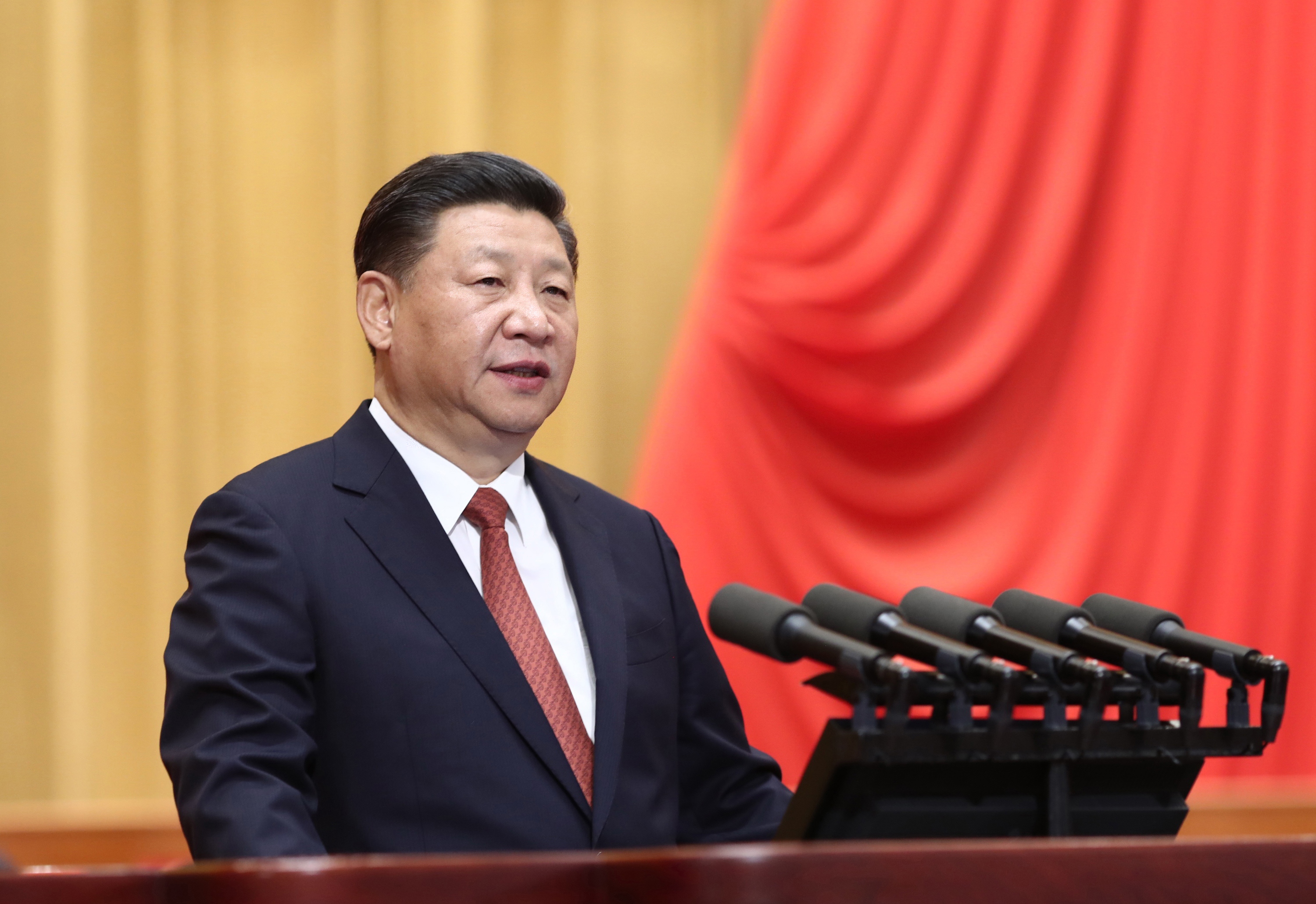 Party General Secretary Xi Jinping
Party General Secretary Xi Jinping
The following is an introduction of the Chinese leaders and their possible destination at the forth-coming party congress. It is a speculation or prediction from the Wikipedia. It doesn’t represent Greenpost’s view.
There is very little doubt that Xi Jinping, who will be 64 at the time of the congress, will continue for another term as General Secretary, the party’s top leadership position and de factoleader in the one-party state. There is uncertainty, however, around whether the other personnel changes at the congress will signal that Xi would stay on for more than two terms per convention.
If Wang does not remain a member of the committee, and assuming both Li Keqiang and Xi Jinping stay, and further assuming that the committee will retain a seven-member structure, the remaining five members will likely be selected from the 18th Politburo members born after 1950.[5] There are 11 such non-military individuals who fit this criteria.[5] Of these putative candidates, only two, Li Yuanchao and Wang Yang, will have completed two terms (ten years) on the Politburo by 2017, and therefore have the advantage of seniority to advance to the standing committee. However, given the changes in the Chinese political landscape since Xi Jinping took power, this is far from assured.[3]
- Wang Huning (born 1955) – major figure in charge of theory and ideology in the Communist Party, is said to not show too much political ambition personally but may be elevated to the standing committee in 2017
- Liu Qibao (born 1953) – former party chief of Sichuan, and current head of the Propaganda Department
- Sun Chunlan (born 1950) – former party chief of Fujian and Tianjin; current head of the United Front Department; her chances to enter the standing committee are low, but if she does make it to the elite body, it would be the first time a woman has achieved this rank in the history of the party. Sun also has the distinction of being the Politburo member with the longest tenure on the Central Committee, joining as an alternate member in 1997
- Li Yuanchao (born 1950) – Vice-President; Politburo member since 2007; a tuanpai member, initially seen as a promising candidate for further elevation, his chances are seen as somewhat reduced due to corruption scandals in Jiangsu province, where he was once party chief.[6] Indeed, some sources speculate that Li may not even retain his own Politburo membership.[7]
- Wang Yang (born 1955) – former party chief of Chongqing and Guangdong province; Politburo member since 2007; seen as one of the more ‘liberal’ members of the ruling elite; was speculated as a candidate for the 17th standing committee but ultimately did not make it
- Zhang Chunxian (born 1953) – party chief of Xinjiang who was transferred to become deputy leader of the Leading Group for Party Building a year prior to the Congress; observers are split on his chances of advancement
- Zhao Leji (born 1957) – head of the Organization Department; Zhao’s career is seen as a boilerplate for politicians of his generation, having served as party chief and head of a central department, he would have a flawless resume for entry into the standing committee; however, he is, relatively speaking, younger than some of his colleagues, and thus could conceivably vie for a standing committee seat in 2022 instead
- Hu Chunhua (born 1963) – speculated during the 18th Party Congress as an incoming “heir apparent”, though the political landscape has changed since Xi’s ascension to power; his further advancement is now seen as uncertain; his track record in Guangdong has been defined by the on-going anti-corruption campaign. Guangdong’s economic growth rate has slowed from its double-digit pace in earlier years to 8% in 2015.[8][7]
- Li Zhanshu (born 1950) – seen as a major Xi confidant whose chances of elevation to the Standing Committee is considered likely[6]
- Han Zheng (born 1954) – party chief of Shanghai; generally seen as having a strong technocratic record; has spent his entire career in Shanghai, which is seen as making his case weaker for the standing committee
There is also some speculation that the Standing Committee will be abolished altogether.[9]
Politburo[edit]
According to convention, Politburo members entering the body in 2017 must be born after 1950. Since the 1990s, individuals ascending to the Politburo generally have experience as provincial party chiefs. It is considered extremely unlikely for an individual to directly ‘jump’ from a provincial governor directly to the Politburo. As the provincial level remains dominated by cadres born in the 1950s, competition for a seat on the Politburo is intense. Outside analysis to date has been largely focused around former subordinates of Xi who are currently in provincial or ministerial-level leadership positions; these individuals are seen as the most likely candidates for Politburo membership.[10]
- Chen Min’er (born 1960) – former subordinate of Xi Jinping in Zhejiang province, now party chief of Guizhou; his ascension to the Politburo is considered likely
- Li Qiang (born 1959) – former subordinate of Xi Jinping in Zhejiang province, now party chief of Jiangsu
- Chen Quanguo (born 1955) – former subordinate of Li Keqiang in Henan, party chief of Tibet (2011–16), party chief of Xinjiang beginning in 2016; his ascension to the Politburo is likely
- Li Hongzhong (born 1956) – party chief of Tianjin; Li has experience as party chief of the Special Economic Zone of Shenzhen, and governor and party chief of Hubei province. His CV is impeccable from a technocratic and regional-coverage point of view, but he has seen his share of controversies with journalists over the years
- Li Xi (born 1956) – considered an ally of Xi; party chief of Liaoning
- Cai Qi (born 1955) – current party chief of Beijing, considered an ally of Xi
- Du Jiahao (born 1955) – former party chief of Pudong; party chief of Hunan
- Liu He (born 1952) – Liu, head of the Office for Financial and Economic Affairs (Zhongcaiban), has been something of a top economic advisor to Xi
- Bayanqolu (born 1955) – former subordinate of Xi Jinping in Zhejiang province, party chief of Jilin; should Bayanqolu become a Politburo member, he would be the first ethnic Mongol to hold a seat on the body since Ulanhu, and the first Mongol ever to hold a Politburo seat without having held high office in Inner Mongolia
- Zhou Qiang (born 1960) – a tuanpai member, current President of the Supreme Court; while a transfer from the Supreme Court position to the Politburo would be unprecedented, Zhou Qiang is only one of three individuals born after 1960 to have already achieved sub-national ranks on the Communist Party hierarchy
- Guo Shengkun (born 1951) – Minister of Public Security; it has been, since 2002, convention for a former Minister of Public Security to take on the post of Secretary of the Central Political and Legal Affairs Commission, which entails Politburo membership
- Huang Qifan (born 1952) – Mayor of Chongqing; there was some speculation that Huang would become Vice-Premier, which would entail Politburo membership; it is also conceivable that Huang will, after serving as mayor for over six years, take over the role of party chief in Chongqing roughly in the same fashion Han Zheng did in Shanghai in 2012. Alternatively, Huang, who will be 65 by the time of the Congress, will need to step down entirely due to reaching retirement age
- Peng Qinghua (born 1957) – party chief of the Guangxi Zhuang Autonomous Region
- Yang Jing (born 1953) – ethnic Mongol, former Chairman of Inner Mongolia and current Secretary-General of the State Council
- Ding Xuexiang (born 1962) – Ding, a major political aide to Xi for nearly a decade, is the current executive deputy director of the General Office of the Communist Party of China. Ding’s chances at the Politburo is entirely contingent on whether or not he will succeed Li Zhanshu as head of the General Office in the upcoming leadership transition, and whether or not this position continues to come with it a seat on the Politburo
Feature: Chinese dance drama to boost Belt and Road Initiative in ASEAN
KUALA LUMPUR, March 30 (Xinhua) — A dance drama featuring Chinese father and son who set sails on the ancient Maritime Silk Road centuries ago debuted in Southeast Asia on Tuesday with the expectations to boost the Belt and Road Initiative in the region.
Thousands of audience watched the dance drama “Dream of the Maritime Silk Road” at a performance hall in the Malaysian capital of Kuala Lumpur, the first leg of the tour in members of the Association of Southeast Asian Nations (ASEAN), including Singapore and Indonesia.
The drama, through distinctively Chinese classical dance, tells a story in Quanzhou port, China’s southeastern Fujian province 800 years ago. The captain of a commercial fleet sets sail on the Maritime Silk Road under the invitation of a Persian prince but was killed in storm when trying to protect his crew, leaving behind his wife and a son in cradle. His son followed his step to become a sailor too after he grew up.
The two-hour drama highlights a prosperous Quanzhou port and friendship forged among people along the Maritime Silk Road when they seek common prosperity and happiness, with cultural elements from China and other Maritime Silk Road countries.
The drama was performed around the globe including at the United Nations Headquarters in New York.
Chen Qiuping, head of Department of Culture of Fujian province, said the drama was well received by the Malaysian audience.
“The performance is indeed enlightening,” said Bong Hon Liong, president of Malaysia-China Chamber of Commerce. “It reminded us of the importance of openness and the friendship among people along the Maritime Silk Road.”
Xia Menglong, a university student who is on an exchange program in Malaysia, said he was surprised to find many Chinese traditions were well preserved and observed in Malaysia.
Huang Huikang, Chinese ambassador to Malaysia, expected the show to boost cultural exchanges between the two countries.
Meanwhile, officials believed such event would help promote the Belt and Road Initiative, namely the Silk Road Economic Belt and the 21st Century Maritime Silk Road in Southeast Asia.
The initiative, proposed by China in 2013, is aimed at reviving the ancient trade routes that span Asia, Africa and Europe.
Chen said the performance in Malaysia was of significance as it was an important country along the 21st Century Maritime Silk Road. He hoped the tour could help boost cooperation under the Belt and Road Initiative. Enditem
Interview: Belt and Road Initiative enhances Sino-Greek ties, Greek official
by Maria Spiliopoulou
ATHENS, March 10 (Xinhua) — A decade after Greece and China forged a comprehensive strategic partnership, especially after the launch of China’s Belt and Road Initiative, their cooperation has progressed remarkably.
“Sino-Greek economic relations have been strengthened in recent years in several sectors: from bilateral trade and investments to cooperation in technology and research,” Christos Staikos, chairman of Enterprise Greece, a Greek investment promotion body, told Xinhua.
Staikos noted that Greece is a major spot in the context of the Belt and Road Initiative and that China is becoming one of the main strategic partners of Greece on the road to recovery.
“All these factors create a stable framework for the further improvement of bilateral trade and business cooperation,” Staikos stressed.
Bilateral trade increased 5.6 percent in 2014 and Chinese investment in Greece rose from 249 million euros (273 million U.S. dollars) in 2010 to 1.2 billion euros (1.3 billion dollars) in 2014, according to official Greek figures.
Quality Greek food products, as well as luxury products such as fur, jewelry and cosmetics are becoming more and more popular in China.
Enterprise Greece said the prospects are exceptional as Chinese consumers start to learn and trust the quality of Greek products and Greek companies.
In the field of investment, Staikos highlighted the development of the seaport of Piraeus, describing it as an entry point into Europe as it has been included in the Belt and Road Initiative.
“The investment creates prospects in areas such as logistics and shipbuilding in parallel with the interest Chinese companies have already demonstrated in tourism and real estate, energy, food and transport,” he said.
Furthermore, the Golden Visa program, under which with the purchase of real estate worth 250,000 euros (274,000 dollars), three generations (parents, children and grandchildren) get long-term residence permit in Greece and Schengen visa, has been embraced by Chinese families who would like to have a basis in Europe for leisure and business activities, the Greek official added.
Tourism presents similar opportunities, according to Enterprise Greece.
“Chinese respect the Greek civilization and discover the beauty of our country, visiting all tourist destinations throughout the year,” Staikos underlined.
Chinese tourist arrivals increased 70 percent year-on-year to 100,000 in 2014, according to official figures.
“Enterprise Greece in recent years is in systematic contact with Chinese companies, informing them of the potential of our country and enabling them to explore opportunities and make their next business steps,” said Staikos.
Piraeus Container Terminal, a subsidiary of China Ocean Shipping Group that manages Piers II and III at Piraeus, won an international tender for the acquisition of 67 percent stake in Piraeus Port Authority, which manages Pier I.
“I believe it is a positive development for the Greek economy, a key parameter in the Maritime Silk Road which enhances the strategic importance of Piraeus,” said Ioannis Tzoannos, an economic professor and former general secretary of the Greek shipping ministry.
The sea and the shipping industry was and remains the key element in the development of bilateral relations, and the Maritime Silk Road opened routes for trade and cultural contacts and stronger cooperation in more fields, Tzoannos stressed.
He urged Chinese investors to get more involved in the Sino-Greek cooperation, in particular in the maritime sector.
“As European banks are withdrawing from the shipping sector due to the crisis, in my view it is in the interests of China to get more involved. Risk taking is important in times of crises to find opportunities,” he said. Enditem
Editor Xuefei Chen Axelsson
Spotlight: Belt-Road Initiative aligns Chinese dream with global aspiration for development
BEIJING, March 11 (Xinhua) — Running a fruit import and export company for 15 years, Egyptian businessman Ali Maggard has recently turned his eye to China as a new source for commerce, as the world’s second largest economy is taking an increasingly large share of the global trade.
Previously, the fruit dealer would give his priority to European countries such as Greece and Italy.
The businessman told Xinhua that he felt very happy to see relations between China and his country to be further enhanced, because it means “more preferential terms for our industry on customs clearance and import and export duties among others.”
Maggard’s company is among many in the Arab world and other parts of the globe to explore business opportunities in China under the Belt and Road Initiative that contains the Silk Road Economic Belt and the 21st Century Maritime Silk Road proposed back in 2013.
The Belt and Road Initiative is “a string of keys” that can be used by various countries for development, offering win-win solutions for bilateral cooperation, said Wu Bingbing, director of Department of Arabic Language and Culture of Peking University.
Statistics released by the Chinese Ministry of Commerce showed Chinese enterprises directly invested a total of 14.82 billion U.S. dollars into 49 countries within the cooperation framework of the Belt and Road Initiative last year, rising by 18.2 percent compared with the previous year.
Against the backdrop of the currently sluggish global economy with a slow recovery, the construction of the Silk Road Economic Belt has gained wide popularity among countries along the trade route, especially in Central Asia.
One particular project is the Horgos-East Gate Special Economic Zone in Kazakhstan, which has become a symbol of the lineup of China’s Belt and Road Initiative and Kazakhstan’s “Bright Path” economic plan.
Despite the Central Asian country’s temporarily shrinking imports and exports due to falling oil prices and currency devaluation, trade volume of the special economic zone surged by nine times in the first half of 2015, compared with the same period of the previous year. Also, the volume of China’s container freight transferred in Kazakhstan has nearly doubled, thanks to the operation of the special economic zone.
So far, Horgos has also become an essential transit point that connects China and Europe through the Eurasia International Railway.
The Belt and Road Initiative is also reshaping the geographic and economic development of both China and Europe by incorporating a wide range of development schemes of the European countries, for example, European Commission President Jean-Claude Juncker’s investment plan that would allocate at least 315 billion euros (about 359 billion U.S. dollars) of additional investments in strategic projects at the European Union level.
“Your dream is our dream,” said former Greek Prime Minister Antonis Samaras.
Both being ancient oceanic civilizations, China and Greece have set the year of 2015 as the “China-Greece Maritime Cooperation Year” during a meeting between Chinese President Xi Jinping and Samaras in July 2014.
The visiting Chinese president said China would like to further enhance its comprehensive strategic partnership with Greece and make the country “an important bridgehead and transit point” for China-Europe cooperation through the Belt and Road Initiative.
One typical project under the initiative was construction of Greece’s biggest sea port of Piraeus, the tender of which was won by China Ocean Shipping Company (COSCO) in January this year.
Trapped in the longstanding debt crisis of the country, the Piraeus port had fallen into a mess with ships and containers piling up. COSCO won a container operation project for Piraeus port in 2008 to manage Pier II and Pier III of Piraeus Container Terminal for 35 years. In 2015, the port’s capacity rose to 3 million containers, a dramatic increase from 685,000 in 2010.
The Chinese enterprise has also created over 1,000 jobs for local people over the last two years. Among the incessant strikes around the country, workers at the port have never held a strike.
In five years of operation, COSCO aims to make the Piraeus port the south gate of the China-Europe land-sea express to speed up transportation between China and Europe.
From the economic perspective, the Belt and Road Initiative has been a large-scale “economic and geographic revolution,” while from the perspective of international relations, the initiative has set off “a new cooperation mode featuring mutual benefits and win-win results,” according to Hu Angang, director of the School of Public Policy and Management of Tsinghua University.
The comments were echoed by Russian businessman Alexander Losev.
In an article published by local newspaper Russia Herald on Jan. 19, Losev wrote that the Belt and Road Initiative showed China’s reflection on global governance.
Yet the construction of the Belt and Road is absolutely not China’s solo, touted by some, but a chorus that involves as many as countries along the trade routes.
China has actually been trying to search for a way out of the current downturn of the global economy with the Belt and Road Initiative, said Yang Guang, head of the Institute of West Asian and African Studies of the Chinese Academy of Social Sciences.
“The initiative would help promote regional economic integration and inter-connectivity by lifting barriers to trade and investment as well as facilitating the flow of capital and human resources, which will inject impetus into global economic development,” he said. Enditem
China Focus: China’s local gov’ts eye “Belt and Road” construction in 2016-2020
BEIJING, Dec. 11 (Xinhua) — Nearly 20 provincial governments in China have rolled out their local development plans for the 13th Five Year Plan period from 2016 to 2020, with their focus on the “Belt and Road” construction, the Shanghai Securities News reported on Friday.
Under their development plans, they attach great importance to infrastructure construction in transportation industry and construction of industrial parks.
— Focus on transport infrastructure
Chinese local governments will give priority to transport infrastructure when promoting the “Belt and Road” initiative.
For example, Shaanxi province will be guide by construction of a logistics center to build a seamless transport network in 2016-2020. Guangxi Zhuang Autonomous Region also said in its proposal to the 13th Five Year plan that it will build a convenient and efficient railway network, expressway network, water transport network, airline network and information network with the Association of Southeast Asian Nations (ASEAN) and neighboring provinces.
It is worth noting that in the land transportation field, the China-Europe express railway will play an increasingly important role in “going global” of Chinese goods.
As a core area of the 21st Century Maritime Silk Road, Fujian province plans to build important airline hubs for Southeast Asia and advance construction of a regional port-shipping system and communication network facilities, to smoothly connect the land channel of the Silk Road Economic Belt and form a passage to sea for central and western China’s opening-up.
Jilin province in its 13th Five Year plan noted that it will actively explore the Arctic Ocean ship routes linking the Europe and the U.S.A., steadily operate international rail and water transportation lines linking Japan and South Korea, and further expand its outward transport lines.
Meanwhile, Tianjin will make full use of its unique geographic location advantages to vigorously promote port and maritime strategic cooperation. It will develop cross-border logistics through three land ports, like the Khorgos Port and develop maritime transport through intensive ship routes and shipping flights.
Zhejiang province announced to promote construction of a marine economic development demonstration zone and Zhoushan Islands New Area, and build a port economic circle covering the Yangtze River Delta, influencing the Yangtze River economic belt and serving the “Belt and Road” initiative.
In addition, Gansu province decided to invest more than 800 billion yuan from this year to build more than 70,000 km of roads and railways in six years.
— Efforts in industrial park construction
Industrial park construction is also a focus in the 13th Five Year plans of the provinces.
Xinjiang Uygur Autonomous Region said that it will accelerate construction of core areas in the Silk Road Economic Belt, develop high-level open economy, and quicken the pace to build the Kashgar and Khorgos economic development zones and comprehensive bonded zones.
Because of the “Belt and Road” initiative, ALaShankou has invested a lot in infrastructure, promoting rapid development of its comprehensive bonded zone, said Pan Zeming, deputy director of the ALaShankou Comprehensive Bonded Zone.
In its 13th Five Year plan, Fujian province made it clear to promote construction of important commodity export bases, commodity markets and commerce and trade parks and explore mutual establishment of industrial parks with Southeast Asian countries.
Chongqing municipality pointed out that it will actively participate in construction of overseas industrial agglomerations and economic and trade cooperation zones.
Shaanxi province said it will encourage and support competent enterprises to go abroad for transnational operation and strategic acquisitions and build Shaanxi industrial parks overseas especially in Central Asia and Africa. Meanwhile, it will also build economic cooperation zones and high-tech industrial parks to attract investments of the transnational companies and globally leading enterprises and persuade them to build regional headquarters and branches in Shaanxi.
“Industrial park is an important method for “going global” of Chinese enterprises. It is a new form for Chinese enterprises to build “Belt and Road” and also a way to change simple cargo transportation”, said Hu Zheng, chief representative of the Central Asia Representative Office of the China Merchants Group.
Since the beginning of the year, China has quickened its pace of building industrial parks along the “Belt and Road” countries.
Data of the Ministry of Commerce shows that so far, China has already built 118 economic and trade cooperation zones in 50 countries, of which 77 zones are located in 23 countries along the “Belt and Road”. Enditem
